‘PROJECT RENAISSANCE’
Food producer wins $9.6 million USDA grant for facility on Cleveland’s East Side
 BY MICHELLE JARBOE
BY MICHELLE JARBOE
International Food Solutions, a growing company that plans to bring more than 200 jobs to Cleveland’s East Side, started with a conversation at an Asian Chao restaurant in 2007.
A customer asked why it was so di cult to nd Asian meals for school lunch programs. e question intrigued Lincoln Yee, the director of operations and purchasing for the restaurant chain. It wasn’t long before he and his boss, Allan
Texting controversy spotlights challenges for women in law
BY JEREMY NOBILE
An unprofessional text message sent by a partner at Cleveland labor and employment law rm Zashin & Rich to a female associate — who was apparently asked to work during maternity leave and who left the rm after that leave — has drawn stark criticisms from the legal community after being shared publicly.
e debacle has also spurred conversations about how women are treated in the legal eld and the expectations of

employers and employees when it comes to professional leaves of absence.
Details of the female attorney’s story were shared on LinkedIn by Kelley Barnett, a member of the Federation of Defense and Corporate Counsel’s national Ladder Down Committee and chair of that program’s Cleveland chapter. Ladder Down is a leadership, business development and mentoring program for women lawyers.
Lam, quit their jobs to build a new business.
Today, the partners supply ethnic food — tangerine chicken and teriyaki chicken are their top sellers — to more than 5,300 school districts and other institutional clients. eir




company, based in Oviedo, Florida, outside of Orlando, does more than $50 million in annual sales.





Now, after struggling with supplier shortages during the pandemic,




















 See PRODUCER on Page 36
See PRODUCER on Page 36
Not just in Kansas anymore
Rally House expands aggressively in Ohio
BY JOE SCALZO
If you had walked inside the North Canton Rally House on the afternoon of Monday, Jan. 9, you would have seen a boatload of Cleveland Browns and Ohio State Buckeyes merchandise ... and very few customers lining up to buy it.

It was understandable — the Browns had just nished o a disappointing season with a loss to the Steelers, while the Buckeyes essentially nished one number away from winning Mega Millions — but it begged the question: What would it be like if both teams were still playing?
“A lot di erent,” said manager Josh Sulzener with a laugh. “It’s funny, because after the Buckeyes lost to Michigan, people came in here and were
VOL. 44, NO. 2 l COPYRIGHT 2023 CRAIN COMMUNICATIONS INC. l ALL RIGHTS RESERVED NEWSPAPER CRAINSCLEVELAND.COM I JANUARY 16, 2023 REAL ESTATE Neighborhood changes may be giving downtrodden Train Avenue a lift. PAGE 14 LIST: Biggest SBA loans go to shooting complex, LGBTQ-friendly Fieldhouse. PAGE 34
International Food Solutions bought a former Goodwill building in Cleveland’s Central neighborhood in November. The meal-production company plans to expand the building as a poultry-processing plant with more than 200 employees.
MICHELLE JARBOE/CRAIN’S CLEVELAND BUSINESS
Kansas-based Rally House has nine Northeast Ohio locations, including this one in North Canton, which opened in 2022. |JOE SCALZO/ CRAIN’S CLEVELAND BUSINESS
“THAT’S WHY WE’RE ABLE TO EXPAND THE WAY WE ARE. WE THINK WE HAVE THE DEPTH AND BREADTH OF LOCAL SPORTS TEAMS, AND THE LOCAL WARE, THAT NO ONE ELSE HAS.”
See RALLY HOUSE on Page 35
—Aaron Johnson, Rally House’s VP of marketing strategy
See CHALLENGES on Page 37
MetroHealth’s Steed has ‘hit the ground sprinting’
Airica Steed, MetroHealth’s new CEO, has “hit the ground sprinting,” as she calls it, launching a listening and engagement tour across the system to hear from employees and meeting with more than 100 community stakeholders in her rst 30 days.
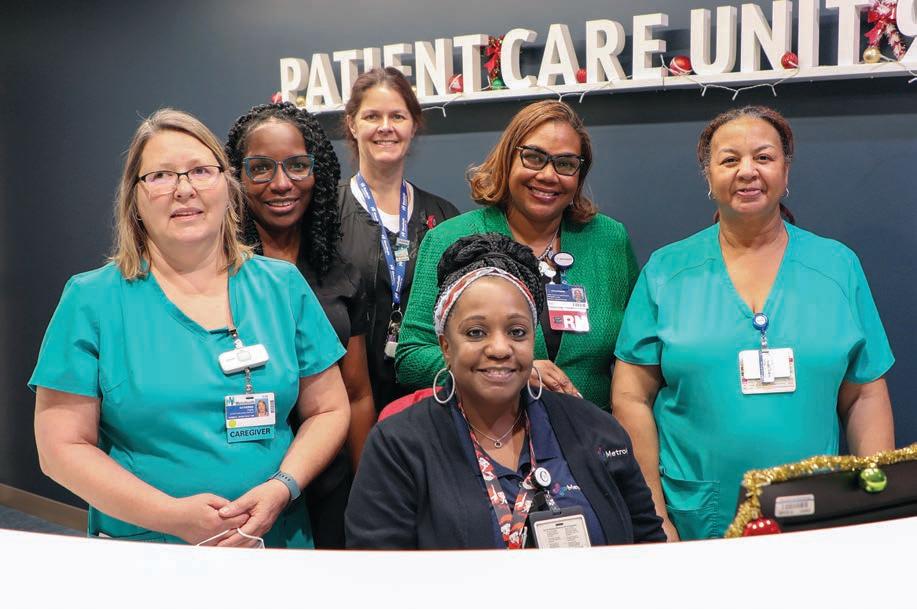

“I’m really being intentional about taking a couple steps back, listening, learning, adapting, sharpening my focus on what the initial vision needs to be for the betterment of MetroHealth and for the betterment of the community,” Steed said.
Already, she’s starting to shape her priorities based on what she’s learned from these conversations. Next, she plans to kick o a community engagement advisory council to “give the community a seat at the table and provide voice to the community and really hear that” to further sharpen the vision.
Steed joined MetroHealth on Dec. 5 from Sinai Chicago, an urban academic health care system focused on health equity.
One month into her leadership of the system, Crain’s sat down with Steed for a discussion.
is conversation has been edited and condensed for length and clarity.
— Lydia Coutré
What attracted you to MetroHealth?
Honestly, there’s so much that attracted me here. The most recent organization I came from is Sinai Chicago, which is the largest private safety net health system that is committed to community, committed to the underserved communities and committed to really driving health equity. When I got the call for this opportunity, No. 1, I was a huge fan from afar and had been following MetroHealth for quite some time. I felt that I could make a much bigger di erence and make a larger impact, speci cally on nationalizing health equity and eradicating health care disparities, which is my passion and purpose. So that was really what drew me here, and what solidi ed that is the people. So, I absolutely, fundamentally fell in love with the people here.
And when you say a ‘larger impact,’ is that compared with what MetroHealth has been able to make historically? Or than you’d made in your previous role?
I would say MetroHealth becoming a national model for what health equity actually looks like, what community health actually looks like, what community and health innovation actually looks like. So, I felt that, although MetroHealth is based in Cleveland — and most de nitely is dedicated to the surrounding communities, I felt that being a role model on a national scale, gave voice and gave rise to a much larger cause. And that’s what I was very much attracted to.
When it comes to being a national model, do you see MetroHealth providing care elsewhere or just creating a more repeatable type of package?
I would say repeatable. So, in essence, as I look around, and as I really do my research and look at other examples, I think that we need to raise the bar and actually make a profound shockwave of a di erence in being able to say, ‘We’ve been able to eradicate health care disparities. We’ve been able to improve the life expectancy. We’ve been able to reverse centuries, centuries of inequities, centuries of lack of accessibility, centuries of lack of a ordability.’ You know, that’s what I wanted to make a di erence in. And I wanted to be a profound example; I didn’t want to do it in increments, in small, small parts. MetroHealth struck me as an organization that makes bold,
bold moves.
(Beyond) what MetroHealth has already done, what else can you help MetroHealth elevate? What else do you think could be done better?
I think that there’s a lot of opportunity. We created the Institute for HOPE. And the Institute for HOPE is an outstanding model and is really centered on several key things, but one of the most pertinent areas of focus is on addressing those social drivers of health or social barriers to health. And by doing so, you’re able to have a whole-person approach to the way in which we’re keeping our community well, focusing on prevention, focusing on a much broader emphasis on population health, and all of the various programs that actually make an impact on those social drivers. And then not only that, I think that there’s powerful ways where we can continue to test the bounds of health care innovation. I know for certain that we can continue to push those bounds and really invent new ways of providing care, invent new ways of providing exceptional health care to meet the needs of the community at large.
Note for readers: The system’s board of trustees red Dr. Akram Boutros, former CEO of the system, in November after learning he paid himself bonuses it had not authorized. Boutros, who had been set to retire at the end of the year, has since led two lawsuits. The rst accuses the board of violating open meetings laws. The second alleges defamation, breach of contract and claims the board’s actions cost him millions.
How much need to you see as CEO to continue to address Boutros’ lawsuits and the bonus process going forward?
It’s rather unfortunate for anyone in my position to have to come into a situation that I have to firefight through. And one of the things that I’ve stated loud and clear is, I want to take the spotlight off of the negativity and off of the crises, if you will, and put the spotlight back on the great people, the great front line heroes, the great people that are doing fundamentally important things. And MetroHealth is not a reflection of the crisis. MetroHealth is not a reflection of, of one person that made a poor decision. MetroHealth is all about the people and all about the community. And that’s where I want to turn the spotlight back on. So, I don’t want to
get distracted by the negative. That’s not fair to the organization. That’s not fair to the people that are serving this organization every single day, making that level of investment. And it’s certainly not fair to the people that we’re serving. So that’s what it’s all about. And I can say wholeheartedly that there’s a separation between me and my predecessor, I have nothing to do with the circumstances. And I’m unfortunately having to navigate through what the end result of those circumstances were. But the board made the right call by sounding that alarm. It was a very courageous decision; it was a very difficult decision to make. But they made the right decision, and that’s telling. And they’re very bold, courageous and heroes of their own, in terms of making that step forward. And we’re going to do the right thing at the end of the day. So, we’ve already enlisted the help of third party assistance. I can tell you, we’re doing a very comprehensive, deep level of review. We’re checking our own titles at the door in terms of
how this process works. We are proud of our expertise that we’re putting into this process, but at the same time, we are completely open to receiving feedback, and we will certainly operationalize the recommendations that come forward from that.
What do you see as some of the biggest challenges for MetroHealth going forward?
Really addressing the workforce challenges. We have to build up a pipeline. We have to be innovative in the way in which we provide care delivery. We have to build up our workforce in a di erent type of way. I already touched on the challenge and the priority as it relates to health equity, and that is a very real issue. And then lastly, this market is tough. We certainly sit in the balance of some pretty prominent, well-respected health care organizations. So, it’s my personal goal to determine how do we take a couple steps back? How do we put that person at the center of that, and really take stock in what we’re contributing
to provide that high level of care, but do it in a collaborative way. So really engaging in that collaborative spirit amongst those prominent players? So, I’m fundamentally looking forward to doing that.
I was wondering whether Drs. Megerian and Mihaljevic were among those 100 folks you’ve met with in the community? (Dr. Cli Megerian is CEO of University Hospitals and Dr. Tom Mihaljevic is president and CEO of Cleveland Clinic) Yes.
UH and the Clinic came together in the past few years in an absolutely unprecedented way. Is something that you’re interested in also joining? Most certainly. so just like Shirley Chisholm said, if you don’t have a seat at the table, bring your own folding chair. So, I’m ready to bring my own folding chair to that table.
Lydia Coutré: lcoutre@crain.com, (216) 771-5479, @LydiaCoutre
2 CRAIN’S CLEVELAND BUSINESS | J ANUAR Y 16, 2023
HEALTH CARE
Airica Steed, MetroHealth’s new CEO has launched a listening and engagement tour across the system to hear from employees and meeting with more than 100 community stakeholders in her rst 30 days. METROHEALTH SYSTEM PHOTOS
Lender becomes owner of Oswald Centre skyscraper

 BY STAN BULLARD
BY STAN BULLARD
For Oswald Centre, the 21-story building at 1100 Superior Ave., the reckoning for its future has moved closer as LNR Corp., the special servicing and distressed property investor, has secured ownership of it.
e distressed multitenant downtown o ce building was transferred Monday, Jan. 9, Cuyahoga County property records report, by the prior owner, an a liate of Skokie, Illinois-based American Landmark Properties, to a company Miami Beach-based LNR formed to hold the property called COMM 2014-UBS3 SUPERIOR AVENUE EAST, LLC.
e cumbersome moniker reects the name of the commercial mortgage-backed securities loan secured by the building.


LNR gained the property through what is known as going deed in lieu of foreclosure. It allows borrowers return the keys to the property to their lender. In Oswald Centre’s case, the 1972-vintage structure has been the subject of a foreclosure proceeding since December 2021.
e case is before Judge Peter J. Corrigan of the Cuyahoga County Court of Common Pleas. It remained pending as of Tuesday afternoon, Jan. 10. e case may be dismissed following the property owner giving up the keys, or it may proceed to clear the title of unpaid bills or other issues that would cloud the title or hamper a potential e ort to sell the property.
is development was telegraphed by a Sept. 6, 2022, report the special servicer shared with investors on Morningstar’s CMBS portal. It said the building’s owner maintained it was unable to fund the capital costs associated with the leases due to high tenant rollover during the remaining life of the loan. e borrower has stopped making debt service payments and informed the lender it would transition out of property and give property back to the lender, Morningstar said.


Sometimes special servicers immediately put such a distressed property up for sale. Or they may try to improve its tenant roster before nding a new buyer. Although receiver’s reports indicate the building has signi cant cash ow, it has lost multiple tenants in the last few years, from the Osborn Engineering rm to Novogradac & Co.’s Cleveland o ce.
Court records show that during the receivership, the lobby of the building has been updated and a game room added, steps real estate brokers contend are essential to attract and keep tenants who want amenities to draw workers back to the o ce following the popularity of working from home during the COVID-19 pandemic.
However, the building’s elevators need to be replaced at a cost of $9 million, according to court records.
ere is about $48 million in principal remaining on the CMBS loan, according to court records. Due to its age, the building could be a candidate for historic preservation tax credits and other incentives that have spurred conversion of older Cleveland o ce buildings to apartment or hotel uses in the past.
e building is 29% vacant, with 181,990 square feet empty in the 625,239-square-foot structure, according to CoStar, an online realty data source.
e county values the structure and attached parking garage for property tax purposes at about $47 million. American Landmark paid $47 million for it in 2007, according to county records, and subsequently invested in and successfully repositioned the building.
However, conditions changed over ensuing years, both for the building and for the Northeast Ohio o ce market, which recovered from the last recession only to get punched by the pandemic and the subsequent work-from-home trend.

Stan Bullard: sbullard@crain.com, (216) 771-5228, @CrainRltywriter
Each client is directly represented at all levels by a Partner of the firm with a combined 90 years of experience. No pyramid, no associates, no on-the-job training.
Our clients deserve the very best representation, so we structured our firm to allow each client, throughout the entire process, to work directly with Todd Sleggs, Robert Danzinger and Steve Gill. Our philosophy is to work cooperatively with school district and county officials to ensure that our clients pay the lowest possible real property tax obligations. If a fair resolution requires litigation, Sleggs, Danzinger & Gill have the depth of trial and appellate experience to handle the most complex valuation issues.
Whether the valuation relates to large industrial plants, apartments, shopping centers, warehouses, office buildings, hotels or any other type of commercial property, the attorneys at Sleggs, Danzinger & Gill will ensure that you receive the best counsel, legal advice and litigation expertise.
Most importantly, Sleggs, Danzinger & Gill wishes everyone continued health as we navigate through the Covid-19 pandemic.
JANUARY 16, 2023 | CRAIN’S CLEVELAND BUSINESS 3 When you hire Sleggs, Danzinger & Gill, you work directly with Sleggs, Danzinger and Gill. Todd W. Sleggs, Esq tsleggs@sdglegal.net Robert K. Danzinger, Esq rdanzinger@sdglegal.net Steven R. Gill, Esq sgill@sdglegal.net Reducing Real Property Tax Assessments Throughout Ohio And Across The United States Sleggs, Danzinger & Gill 820 West Superior Avenue, Seventh Floor Cleveland, Ohio 44113 (216) 771-8990 www.sdglegal.net Sleggs, Danzinger & Gill, Co., LPA
REAL ESTATE
The Oswald Centre o ce tower in downtown Cleveland has been transferred to a lender to avert a protracted foreclosure process. | COSTAR GROUP INC.
Laura Chalker joins regional Ohio Means Jobs o ce as deputy director

e Cleveland-Cuyahoga County o ce of Ohio Means Jobs is the region’s de facto unemployment o ce, but it o ers much more than a static list of available jobs, perfunctory job searches and basic resume services.





With only four weeks under her belt as deputy director, Laura Chalker is happy to rattle o a comprehensive list of services for businesses and job-seekers, including a slate of training options that any Cuyahoga County resident, employed or unemployed, can take advantage of.
Crain’s sat down with Chalker to talk about the role she will play at the o ce, at 1910 Carnegie Ave., and what’s in store as Cleveland Mayor Justin Bibb’s administration dedicates $10 million in federal funding to direct residents to in-demand jobs in categories including construction, broadband and green energy. is conversation has been edited and condensed for length and clarity.
Former County Executive Armond Budish appointed you to the deputy director position at Ohio Means Jobs. You join director Michelle Rose, appointed by Cleveland Mayor Justin Bibb. How did you end up in this role?

I wouldn’t say any of this work is new for me. I certainly have lots of experience with complex funding environments. I was most recently serving as the executive director for the Bond Accountability Commission, which has oversight of bonds approved for the renovation and new construction of Cleveland Metropolitan School District buildings. My background lies in being on the direct service end of programming. I’ve been doing consulting with nonpro ts here in the Cleveland area for the last four-and-a-half years.
Ohio Means Jobs is basically what many of us think of as the traditional unemployment o ce where you go and check in if you are not working. What has changed or evolved over the last few years?
Those services are just a tiny portion of what we do. Certainly, some folks need to come in and need access to a computer, need access to Wi-Fi and help creating resumes. Of course we would do that. But there’s so much more to what we can do to make sure we are assisting job-seekers.
We are the public workforce system. We work with our two customers: businesses and jobseekers. We help local employers meet their human capital needs and assist job-seekers in finding jobs and career pathways with family-sustaining wages. Through the Workforce Investment and Opportunity Act (WIOA) funding, we help with free career services and training. Regardless of income, anyone is eligible for our career services support, even if you’re currently employed.
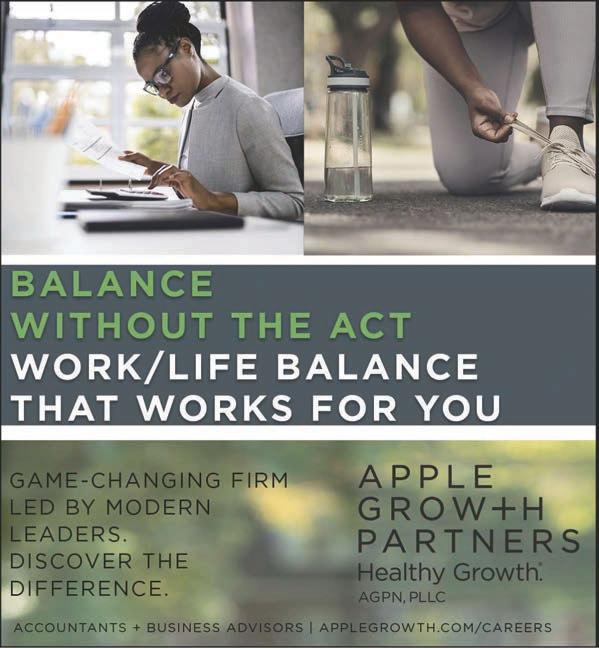 — Kim Palmer
— Kim Palmer
You referred to the o ce of Ohio Means Jobs as being part of a workforce ecosystem. What do you mean by that?
It refers to the di erent parts, because even though some tend to think of the workforce groups as decentralized, our role at Ohio Means Jobs is to act as a connector and take a leadership role in that community. A big part of my role as the deputy director, working of course in partnership with the director, Michelle Rose, is to make sure we stay connected and meet the needs of the community.
There’s a lot of attention on workforce, and that attention is coming with a good deal of city, state and federal nancial support. What does that mean for Ohio Means Jobs?


We’re in an unusual time coming out of this period of COVID. We know from the research from the Fund for Our Economic Future that thousands of workers in this region have self-identi ed as wanting more training in order to advance. There is a huge opportunity, and we are in the position to provide help for training for those in-demand sectors (health care, IT and manufacturing). Often, we can pay for an individual’s training and provide collaboration on training for the employers, as well.
Do you think the paid-for skills training that Ohio Means Jobs o ers is something most people know about?
It has been part of the Workforce Investment and Opportunity Act funding for nearly a decade, but it’s just not well known, and we need to increase awareness that we can connect both employers and job-seekers to what they need. Ohio Means Jobs will help people get into nursing school, get training to become a software developer, acquire a commercial driver’s license. You name it, we do a broad brush. We make sure when people complete training, they are placed in the position. It’s not just training, but also working with folks to make sure they have secured a good position.
Talk about the services Ohio Means Jobs o ers business looking for workers.

We have a whole business services line, and our team is very engaging with the businesses in the community. Some come to us. We also go out and make sure we’re forging those relationships with employers. My role is to make sure we are involved in those conversations. We have strong connections and meet with our
region’s industry and sector partnerships. We use labor-market information that can be helpful for employers to learn how to attract highly quali ed candidates, and we are available to assist them with determining wages and bene ts as well as performance and pay incentives for employees.
Ohio Means Jobs is set to receive funding through a city-workforce program. Talk a bit about that.
In her short tenure, our director, Michelle Rose, was instrumental in getting this new federal stimulus funding ($10 million) for the Built Environment awarded through the city of Cleveland. That funding will come directly to our workforce development programs to create pipelines that meet the needs of the built-environment sector, which include jobs in green infrastructure, construction, broadband, lead remediation — all pressing issues in Cleveland. We are going to need that workforce, and we are going be able to do a lot with that $10 million.
What message are you trying to get out about Ohio Means Jobs with this new position?
We shouldn’t be pigeonholed. Ohio Means Jobs is not just unemployment, which is important. We are all about workforce and advocating for funding to go toward that work. There’s a lot of real work happening that people don’t even realize, but I think you’ll see that change pretty quickly now that we’re fully sta ed here. You are going to hear a lot from us, and I’m con dent you’ll be hearing a lot of great things about what Ohio Means Jobs is doing locally and really being that connector and leader in the workforce ecosystem.
Kim Palmer: kpalmer@crain.com, (216) 771-5384, @kimfouro ve



4 CRAIN’S CLEVELAND BUSINESS | JANUARY 16, 2023
FOR SALE Great Density Extra Lot for Expansion Turn Key with all Equipment Call Broker for More Information 2,384 SF Classic Diner on 0.5 AC 46 Parking Spaces Great Corner Location at E 55th and St. Clair Ave. Well-Established Diner - Currently Open for Breakfast and Lunch 216.861.5061 andrewchess@hannacre.com Andrew Chess PROPERTY OVERVIEW The Diner on 55th 1328 E 55th St., Cleveland, OH 44103 CONSTRUCTING LOANS FOR YOU Providing Commercial Real Estate Loans Throughout Northeast Ohio CONTACT JONATHAN A. MOKRI 440.526.8700 • jmokri@cbscuso.com www.cbscuso.com Personalized Service Loans up to $30 Million • No Prepayment Penalties Investment & Owner-Occupied Commercial Real Estate Straight Talk, Smart Deals ®
GOVERNMENT
“WE SHOULDN’T BE PIGEONHOLED. OHIO MEANS JOBS IS NOT JUST UNEMPLOYMENT, WHICH IS IMPORTANT. WE ARE ALL ABOUT WORKFORCE AND ADVOCATING FOR FUNDING TO GO TOWARD THAT WORK.”
“THERE IS A HUGE OPPORTUNITY, AND WE ARE IN THE POSITION TO PROVIDE HELP FOR TRAINING FOR THOSE IN-DEMAND SECTORS (HEALTH CARE, IT AND MANUFACTURING). “
Laura Chalker is deputy director of the Cleveland-Cuyahoga County o ce of Ohio Means Jobs.
| CONTRIBUTED
Whendeals hinge on the right financing, I
the financing is right.
Lenders and borrowers count on me to iron out complex deal financing
And see it through its life cycle.
Connecting the dots—and people—to get past issues and reach a favorable agreement.
Taking in the big picture while attending to critical details. Advising on structures.
Negotiating and documenting terms. Building collaborative relationships on both sides of the deal to drive to a successful close.
Staying committed and attentive as the transaction plays out.
From origination to repayment or refinancing, through workouts or distress.
Protecting their interests and offering creative solutions, whatever the future might hold And however the next deal unfolds.
I’m ROSS KIRCHICK I’m on your team.
MY BENESCH MY TEAM
> Chair, Commercial Finance & Banking Practice Group
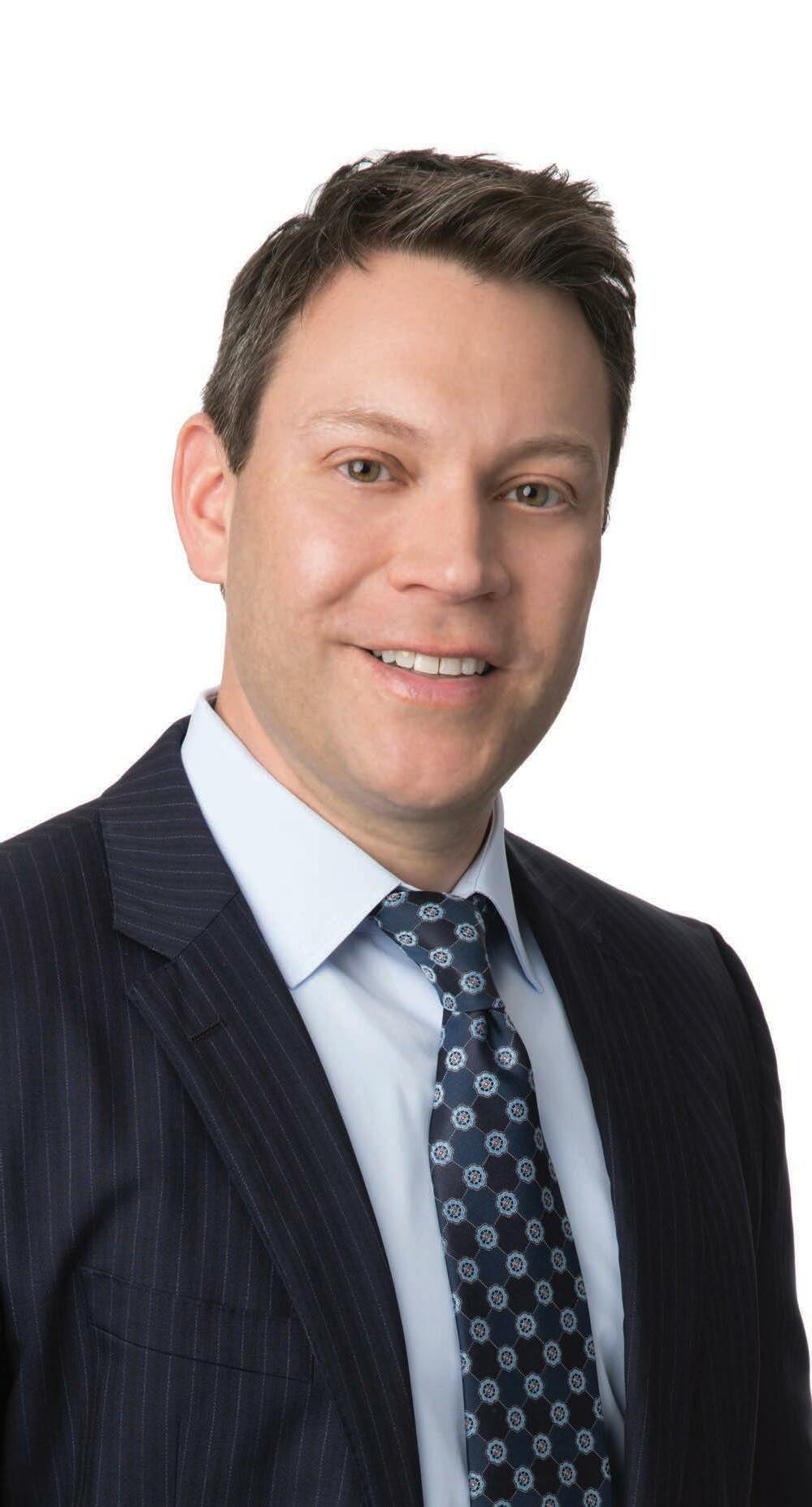
> Represents banks, financial institutions, borrowers (profit and not-for-profit) and investors in commercial lending and finance transactions.
> Extensive experience in loan documentation, modification, maintenance and administration as well as workouts and recapitalizations in a wide range of complex financing structures.
> Particular emphasis on health care lending, asset-based lending, private equity and acquisition financing.
> 216.363.4449 | rkirchick@beneschlaw.com
www.beneschlaw.com
make sure
Can’t a ord this
If you’re serious about ending, or at least seriously reducing, the cycle of poverty, the expansion of a ordable housing is critical.
Housing “can play a key role in positively in uencing a family’s education, employment and health opportunities,” according to Habitat for Humanity of East Central Ohio. Research shows increasing access to a ordable housing “is the most cost-e ective strategy for reducing childhood poverty and increasing economic mobility in the United States,” the National Low Income Housing Coalition says. And as the Urban Institute puts it, “When people of all incomes can access a stable, decent, and a ordable home, they do not face food insecurity or delayed health care. ey can a ord to save for a rainy day. ey will not see their relationships uprooted by unwanted moves.”
ere’s broad consensus about the long-term value of affordable housing — and Ohio’s need for more of it. e Ohio Chamber of Commerce, in its “Blueprint for Ohio’s Future” released in October 2022, includes a section dedicated to affordable housing and notes, “Ohio has a shortage in starter home builds and rental units that are a ordable and available to extremely low-income households. Compared to other renters, severely cost-burdened households are more likely to sacri ce other necessities like food and health care.”
All this underscores our concern that Gov. Mike DeWine, on Jan. 6, signed a huge spending bill (the $6 billion House Bill 45) that includes provisions that developers and activists say could curtail already-limited a ordable housing opportunities in the state.
Speci cally, Crain’s reporter Michelle Jarboe noted, DeWine “declined to strike a provision that will bar developers from marrying federal low-income housing tax credits and state historic preservation tax credits. Additional language in the bill will allow county auditors to set values for a ordable housing projects by looking at comparable market-rate properties.”
Advocates for low-income and unhoused Ohioans also are alarmed by the bill’s limits on emergency assistance to renters. DeWine, upon signing the bill unchanged, acknowledged concerns from a ordable-housing developers and advocates and said he plans to deal with the issue comprehensively as part of his upcoming biennial budget proposal. For instance,
DeWine said he expects to ask legislators to create a state tax credit for low-income housing and to boost the size of Ohio’s historic tax-credit program.
We’re taking the governor at his word that he believes there’s a way to make the situation better. ere’s still a chance to make this right and make sure that Ohio doesn’t allow its a ordable-housing problem to become even worse. But we will be watching closely to make sure DeWine’s words aren’t just lip-service.

Get the message
Jon Dileno has done us a favor.
Not because what the now-former Zashin & Rich attorney wrote in a text about a former colleague regarding her recent maternity leave and the decision to leave the rm for another job had any merit. It didn’t. e text was, as Cleveland Metropolitan Bar Association CEO Becky Ruppert McMahon told Crain’s last week, “completely indefensible.”
But don’t kid yourself. e views Dileno expressed in his text message to the female associate — the matter is covered in detail in a Page One story this week by Jeremy Nobile — aren’t as uncommon as you’d like to think. ey certainly shine a light on the way many women in the legal eld are treated, and they underscore retrograde notions of what can and should be expected of employees when they are away from the job. It’s not at all surprising, as Nobile points out, that women make up just 37% of practicing attorneys, according to the American Bar Association. is particular story got attention because details were shared in a LinkedIn post that shot across social media and was highlighted by the popular legal site Above the Law. No doubt there are other instances like it that, over time, erode the abilities of law rms (and companies in other industries) to create inclusive work cultures.
e issue resonated throughout the Cleveland legal community, and the bar association, smartly, said it will host a Hot Talk on Tuesday, Jan. 17, featuring experts who “will help us dig into the legal and ethical issues related to this situation and the many like it that rarely become public.” Time well spent.
Executive Editor: Elizabeth McIntyre (emcintyre@crain.com)
Managing Editor: Scott Suttell (ssuttell@crain.com)

Contact Crain’s: 216-522-1383
Read Crain’s online: crainscleveland.com
PERSONAL VIEW
How to complete the formula for entrepreneurial success
Unlike many cities, Cleveland is uniquely positioned to promote a thriving entrepreneurial ecosystem. is is why I wholeheartedly agree with the majority of Ray Leach’s Nov. 14 opinion article in Crain’s on what it will take to make these entrepreneurial aspirations into a reality.
From rst-hand experience, I can attest not only to the creative approach
Leach has to the problem, but also the invaluable partnerships he has introduced to Cleveland. His recent piece features the importance of commitment, collaboration and capital. ese “3 C’s” are critical components of the formula to build a booming entrepreneurial economy.
However, I would like to comment on two additional components that are absolutely vital to include. e two additional components are merely expanding on the formula Leach has outlined. Without factoring these components into the formula, the highest level of innovation will never be achieved.
What enables an ecosystem to reach success? Talent.
Talent enhances the formula for success because it acts as a stable pipeline of new innovators into the community.
Without talent, neither commitment, collaboration, nor capital would be e cient. A concrete pipeline of talent, however, ensures that this e ciency is possible. is is because talent introduces novelty and increases the process of innovation in an ecosystem.
Where does this pipeline start? Higher education.
e Boler College of Business at John Carroll University intersects with the foundation of Cleveland’s talent base because it embraces the responsibility of being a citizen in Cleveland’s innovative community. erefore, the college, like others, has a prevalent role to educate and prepare people for careers and to produce talent for Cleveland’s entrepreneurial network.
As part of the pipeline, the Boler College of Business can be a source for startups to launch a new idea in Northeast Ohio. One idea can revolutionize and transform the Cleveland area. To successfully catalyze an innovative idea, one last component needs to be included in our formula.
Two ecosystems may have all four components to the equation on paper, yet sometimes one is evidently doing better. For some unknown reason, one community’s levels of innovation and success are thriving, while the other community’s is not. Why might this optimism be present in one and not the other? Passion is properly leveraged.
Call me a romantic, but I think excluding passion in the formula for success would result in a doomed potential for Cleveland.
e most successful entrepreneurial hubs in the world accommodate passion into their formula. is is due to passion being a multiplier.
In our formula, if one of the components is at zero, then the entire con guration ultimately fails. is is why one ecosystem advances compared to another. e ecosystem that does not advance tries to innovate with zero passion, but with commitment, collaboration, capital and talent still in the formula.
Write us: Crain’s welcomes responses from readers. Letters should be as brief as possible and may be edited. Send letters to Crain’s Cleveland Business, 700 West St. Clair Ave., Suite 310, Cleveland, OH 44113, or by emailing ClevEdit@crain.com. Please include your complete name and city from which you are writing, and a telephone number for fact-checking purposes.
Sound o : Send a Personal View for the opinion page to emcintyre@crain.com. Please include a telephone number for veri cation purposes.
6 CRAIN’S CLEVELAND BUSINESS | J ANUAR Y 16, 2023
EDITORIAL
Granot is dean of the Boler College of Business at John Carroll University.
ELAD GRANOT
See SUCCESS, on Page 7
RICH WILLIAMS FOR CRAIN’S CLEVELAND BUSINESS
Unmarried women no longer pay a nancial penalty in retirement
 BY ALEXIS LEONDIS/BLOOMBERG OPINION
BY ALEXIS LEONDIS/BLOOMBERG OPINION
On the retirement front, a new study has some good news for unmarried women: ey’re no longer falling behind their married peers. Still, it’s tough to celebrate equality when it seems to be driven mostly by the falling fortunes of men.
Studies about how prepared U.S. workers overall are for retirement tend to be incredibly depressing — and even more so when they focus on women, who say in staggering percentages that they’re worried about running out of money. Much of this has to do with women earning less, taking more time out of the workforce and living longer than men.
e retirement prospects for women who are single or divorced have long been even more dire because married couples who pool their resources are often wealthier. But a recent report by economists at the Center for Retirement Research at Boston College shows that for middle-class baby boomer women, staying single no longer carries the nancial penalty it once did.
Younger boomers who have spent most of their adult lives single (either because they remained single, got married later or divorced) are catching up to their married counterparts.
Financial impact



What’s driving this? It’s twofold. First, when compared with older women, more young boomer women received college degrees and joined the paid workforce. In turn, they’re earning more money. at’s the good news.

But there’s bad news, too: A big part of the reason they’re catching up isn’t just that they’re doing better. It’s that married men are doing worse. “ e large decline in median wealth for women who spend their lives mostly married largely re ects declining fortunes for their husbands,” the researchers said in a blog post.
Remember, the gender wage gap has been shrinking not only because women’s wages have grown but also because men’s earnings have stagnated.
e key metric in the Boston College report is the income replacement rate, which shows whether someone
SUCCESS




From Page 6

Ultimately, properly leveraging passion enhances the overall success of a region engaged in entrepreneurship.





Passion cannot be arti cially manufactured.
One unique thing about Cleveland, however, is that passion is already ingrained into the region’s network of collaborators. In the past 10 to 15 years alone, the landscape of passion has only been increasing. Transitions into positions of new leadership in Cleveland are an exempli er of this. Just to name a few, there is the election



can maintain the same standard of living in retirement. It looks at how much of a woman’s pre-retirement income would be covered in retirement if she e ectively annuitized her wealth (from sources such as nancial assets or future Social Security or pension plan bene ts).
For the Silent Generation women who preceded the baby boomers and have been married most of their adult lives, the income replacement rate was 44% when they were 59 to 60 compared with 36% for those who had been mostly single. For younger married boomers (those born between 1960 and 1965), the income replacement rate drops to 35% at age 59 to 60 compared with 33% for their single peers.

Part of this re ects boomer women’s higher earning power; but it also re ects the fact that boomer men suffered high unemployment rates and long bouts of unemployment during the Great Recession, often during their prime earning years.

It’s important to note that the data come from a longterm study that interviews people older than 50 every two years. e most recent interviews used for the Center for Retirement Research’s report are from 2018, so they don’t take into account the big stock market gains from 2018 to early 2022. at appreciation may have helped married couples, who are more likely to own securities investments.

Still, the study focused on middle-income people, who tend to have more of their retirement income derived from Social Security rather than stock assets.
And Social Security bene ts can complicate these metrics for married women. For those who never worked, their income-replacement rates may be higher.
at’s because even though they don’t have any pre-retirement income of their own, they’re still eligible to receive their own separate Social Security check in retirement (equal to 50% of their spouse’s bene t). For married women who have worked, their income-replacement rates have declined because they have higher pre-retirement income relative to what they may be eligible for from Social Security.
e fact that women who choose to stay single or wind up getting divorced aren’t doomed to poverty in retirement is a relief. But that seems like a pretty miserable bar.
of Mayor Justin Bibb, the appointment of Baiju Shah as CEO of the Greater Cleveland Partnership, and even new leadership in multiple nonpro ts and the Cleveland Clinic.
When attempting to create a thriving entrepreneurial ecosystem, there is a danger and risk of staying static. Rather than staying complacent, passion builds in a drive to constantly be innovative and regularly oppose regression. is drive is embodied in the talent that is pipelined into an entrepreneurial network.
e Final Formula for Success: Commitment x Collaboration x Capital x Talent x Passion = riving Entrepreneurial Ecosystem


JANUARY 16, 2023 | CRAIN’S CLEVELAND BUSINESS 7
PERSONAL VIEW OPINION
THE LAND SCAPE A CRAIN’S CLEVELAND PODCAST WITH DAN POLLETTA NEW EPISODES EVERY TUESDAY AND FRIDAY
GETTY IMAGES/ISTOCK
A seat at the table
Small community funder joins Fund for Our Economic Future board
Late last year, Martin Uhle, the president and CEO of the Community West Foundation, a philanthropic social services agency with nine sta members, joined the nearly 40-person board of the Fund for Our Economic Future.

e move is a departure for Community West, which provides funding for more than 100 frontline social service agencies in Lorain County and the western part of Cuyahoga County. For more than two decades, the organization has focused on the mission of helping the most vulnerable, rarely partnering with other philanthropic funding organizations — until the COVID pandemic.
“In 2020, we immediately joined the Greater Cleveland COVID Rapid Response Fund, which was led by the Cleveland Foundation. at was our rst chance to work with other funder organizations and be part of the talks about in uencing how those funds were used,” Uhle said.
By joining the COVID Rapid Response Fund, a coalition of nearly 50 philanthropic, corporate and civic partners in Northeast Ohio created to distribute money to nonprofits during the pandemic, Community West partnered with some of the region’s largest philanthropic leaders.
COVID, Uhle said, was such a universal challenge that groups of all missions were a ected.
To date, the COVID Rapid Response Fund has raised more than $20 million and made grants to 675 nonpro t groups and organizations in Cuyahoga, Lake and Geauga counties — and the group is conducting a COVID recovery and resiliency survey to better understand the state (and projected state) of the nonpro t sector in Cuyahoga County.
“Before the COVID Rapid Response, Community West didn’t have a seat at that table with organizations like the Cleveland Foundation, the George Gund Foundation. We were not invited, and to be fair we were not seeking that seat either,” Uhle said. “But that collaboration has helped us understand and think about the bigger picture.”
It’s that type of collaboration that Uhle hopes to be a part of as he begins serving on the board of the Fund, which is made up of leaders from a variety of organizations, including the Cleveland Foundation, the Gund Foundation, the Sherwin-Williams Co., the Federal Reserve Bank of Cleveland and the Greater Cleveland Partnership.
e Fund, a civic collaborative focused on the economic health of the region, is, as president Bethia Burke describes it, all about the big picture. e group tackles the big, “seemingly intractable problems” the region faces, Burke said, and
she and her sta rely heavily on a board of leaders in various areas of expertise to identify and help tackle those issues.
“We sit somewhere at the intersection of grantmaking and what needs to be done,” Burke said.
Bringing Uhle on the board adds a partner with direct ties in the community where the Fund’s policies are focused.
“ e big issues we tackle a ect people in real ways. Adding Community West to the board is a way to expand and refocus a connection with local community,” Burke said.
For Uhle, joining the board, which does require a $33,000 contribution to the Fund, is a way to expand his organization’s understanding of the larger regional picture while also getting a chance to see the best practices of organizations outside his group’s geographic footprint.
“I think as a collective, we should take the best practices everyone has learned in this three-year pandemic and use them going forward,” Uhle said.
“We should nd a way to bene t from this pain we’ve all been through.”
Community West’s work with “those most in need” includes making sure that economic development “is inclusive and accessible to everyone,” Uhle said. at includes the formerly incarcerated, who face signi cant hurdles to achieving steady employment — an issue the Fund has looked into over the years.
Uhle believes Community West’s efforts can be buoyed, from a policy or strategic perspective, by partnering with larger organizations working on the same issues.

Since the work with the COVID Rapid Response Fund, Community West has a sta member on the board of the Cuyahoga County Ofce of Homeless Services, something that would not have happened before the public health crisis.

“We have been writing checks for 25 years for homeless services and shelters, but we weren’t at the table in uencing any of the actual policy,” he said.
Working with the Fund also helps keep track of the massive amount of grant programs available through multiple federal funding streams.
“As a funder, we are watching and trying to track all of the opportunities. It behooves us to understand that which was never something we have done before,” Uhle said. “You have to be resourceful, and when the government is going to put all this money out there and you qualify for it, it’s important that there’s an attempt to go get it. It relieves the system a little bit.”
Kim Palmer: kpalmer@crain.com, (216) 771-5384, @kimfouro ve
THE WEEK
LOOKING SHARP: e Cleveland Guardians provided an update on the renovation of Progressive Field, with two projects set to be completed by Opening Day 2024: the “Upper Deck Experience” and a new building on East Ninth Street. Four others are set for Opening Day 2025: the Terrace Hub (replacing the Terrace Club); the Dugout Club; clubhouses and service level renovations; and the administrative o ces. Most of 2023 will focus on design development, with Manica serving as the lead design architect on the nalized project while Ohio-based Moody Nolan serves as the architect of record. e planned $202.5 million in renovations are part of the larger $435 million package passed by the city and the county at the end of 2021, with the other $232.5 million going to capital improvements.

ON THE CASE: e Case Comprehensive Cancer Center soon will have a new director. Case CCC announced that Dr. Gary Schwartz, chief of the hematology and oncology division at Columbia University Irving Medical Center and deputy director of its Herbert Irving Comprehensive Cancer Center, will succeed Stan Gerson, who has led the Cleveland center since 2004. Gerson remains in his positions of senior vice president for medical affairs at CWRU and dean of the School of Medicine. e Case CCC transition will take place April 1. Case CCC, launched in 1983, is a consortium that includes the participation of CWRU, University Hospitals and Cleveland Clinic.
GUT FEELING: BIOHM, a microbiome company in Cleveland that’s developing products to improve digestive health, announced it has raised $7.5 million in equity nancing to
accelerate its research and product-development e orts. e round was led by Middleland Capital’s VTC Ventures, BIOHM said. Additional investors include Felton Group LLC, Jobs Ohio Growth Capital Fund, Aztec Capital Management LLC, Cleveland Life Science Advisors, Valley Growth Ventures LLC and JumpStart Inc. e company said the funding will “enable BIOHM’s continued leadership as a data-driven, cutting-edge microbiome innovation partner for consumers, medical practitioners and food, beverage and dietary supplement companies.” BIOHM has 14 full-time equivalent employees and has raised a total of $20.8 million.
THAT’S SETTLED: e Sterigenics subsidiary of Broadview Heightsbased Sotera Health Co. will pay $408 million to settle more than 870 cases alleging that ethylene oxide from its Willowbrook, Illinois, facility caused cancer and other health issues. Sotera disclosed the settlement Monday, Jan. 9. Sotera, a provider of lab services to the medical device and pharmaceutical industries, and Sterigenics, a medical sterilization company, denied any wrongdoing. In a ling with the U.S. Securities and Exchange Commission, Sotera said Sterigenics will fund an escrow account with the settlement by May 1. Administration and completion of the settlement agreements “is expected to require up to 90–120 days,” Sotera said.
GETTING ORGANIZED: Workers at the Orange Village store of outdoor and tness gear retailer REI Inc. are seeking union representation following successful organizing e orts. e Retail, Wholesale and Department Store Union on Wednesday, Jan. 11, announced workers from the REI store at the Pinecrest mixed-use de-
velopment formally led for a union election with the National Labor Relations Board. e union said that if an election were successful, it would represent about 55 current workers at the store. REI issued in statement in which it said, in part, “We believe in the right for every employee to vote for or against union representation and would fully support the petition process and vote in Cleveland.”
AT HOME: User Friendly Home Services, a Woodlands, Texas, company with multiple heating, air conditioning and related home service providers, is the new owner of Sal’s Heating & Cooling of North Royalton. e acquisition of Sal’s provides an entry to the Ohio market for User Friendly Home, which owns a total of nine other home service companies in California, Kentucky and Oklahoma. Sal Sidoti Jr., the second-generation operator of Sal’s Heating & Cooling, which his father launched in 1975, will remain with the company as president of Sal’s Heating & Cooling. His wife, Marilyn Sidoti, will become an acquisition specialist.
ADVANCING EQUITY: e Cleveland Orchestra named Jejuana C. Brown to a new role within the organization: director of diversity and inclusion. Brown will report to orchestra president and CEO André Gremillet. e orchestra said the position was created to “develop a comprehensive equity, access, diversity and inclusion plan that aligns with the orchestra’s objective to promote diversity as an essential element of the organization’s core values, goals, and mission, which is to inspire and enrich lives by creating extraordinary musical experiences at the highest level of artistic excellence.” Brown previously worked as director of inclusive culture and talent initiatives at the Greater Cleveland Partnership.
8 CRAIN’S CLEVELAND BUSINESS | J ANUAR Y 16, 2023
The latest round of Progressive Field updates will include renovations to the upper deck, Terrace Club, Dugout Club, above, home and visiting clubhouses and administrative o ces. MANICA
GOVERNMENT
KIM PALMER
Burke
Uhle
IT’S WORK ING! IT’S WORK ING!

In Ohio, next-generation mobility is driving new economic opportunity. Honda’s electric vehicle investment places the state at the forefront of a smarter, more sustainable future. See how we’re putting Ohioans on the fast track.

+
Ronn Richard to retire from Cleveland Foundation
BY LYDIA COUTRÉ
Ronn Richard, the Cleveland Foundation’s president and CEO of the past two decades, plans to retire in the latter half of this year once the organization’s board of directors identi es his successor.
Before he departs, he’ll get to work from the foundation’s new headquarters in MidTown as the organization begins its staggered move this spring to the new building at Euclid Avenue and East 66th Street. Richard spearheaded the project to construct a new headquarters and led the curation of additional future development around it, beginning with the MidTown Collaboration Center, which will bring anchor institutions and essential services to the neighborhood.
Over the past 20 years, the Cleveland Foundation has become “more strategic, more self-initiated — as opposed to being a responsive grant maker,” Richard said, noting that of course the foundation still responds to community needs. For instance, it launched the Cleveland Black Futures Fund and the Greater Cleveland COVID-19 Rapid Response Fund, which raised nearly $4 million in its rst week.
“We’ve had a point of view; we’ve been willing to do big, bold, strategic projects that required us using all the skills in our toolbox: our ability to partner convene, facilitate, make grants, change public policy, and all of that,” he said. “So, I think that in terms of placemaking, and place preserving, we’ve gained some real expertise in the last many years. ... And I think that, you know, going forward, our ability to transform neighbor-
hoods is one of our fortes. And I think you’ll see us continue to be active in really catalyzing development that guards against gentri cation in Cleveland’s core neighborhoods.”
e historic new headquarters is just one of the many accomplishments during the past two decades.
Under Richard’s leadership, the foundation’s endowment has dou-
bled from $1.5 billion in 2003 to more than $3 billion today, according to a news release, which also notes the organization’s revitalized fundraising e orts during that time, leading to record year-over-year gifts to the foundation.
e foundation has hired a transition consultant who will work with an ad hoc committee of the Cleveland Foundation board of directors to nd a new leader.

ere is no rm timeline for the selection of Richard’s successor, who will be the foundation’s 10th leader.
“We don’t have a drop dead date, because we want the right person,” said Constance Hill-Johnson, chair of the Cleveland Foundation board of directors. “So we’re just going to methodically go through the process.”
Each board member is meeting one-on-one with the transition consultant and sharing what’s important to them in the foundation’s next leader. Out of this process will come a CEO pro le of the attributes and qualities for a new leader, a document that will guide the search, Hill-Johnson said.
Two decades of change
Richard, who turns 67 at the end of January, has led the foundation since July 1, 2003, and is its second-longest serving leader, behind Leyton E. Carter (1928-53).
Under Richard’s leadership, the foundation’s grantmaking has increased to record levels, with more than $100 million awarded to the Greater Cleveland community each of the past six years, according to the release.


Re ecting on his time at the Cleveland Foundation, Richard said he always touches on education rst, “because I think education is the most important thing.”
“And I think it’s fair to say that the foundation had a huge hand in the transformation of Cleveland Public Schools,” he said, pointing to the Cleveland Metropolitan School District’s four-year high-school graduation rates, which increased from 52.2% for the class of 2010 to 80.9% for the class of 2020.
e Cleveland Foundation helped launch Say Yes to Education with its largest grant in the foundation’s history of $40 million, and helped raise an additional $52 million with Richard as chair of the Say Yes Cleveland scholarship committee.
e foundation’s major support to universities under Richard includes: multimillion-dollar grants to Case Western Reserve University that helped catalyze the Great Lakes Institute for Energy Innovation and the Center for Proteomics and Bioinformatics, and more than $5 million in funding that supported the NEOMED-Cleveland State University Partnership for Urban Health, which aims to recruit and train medical students from core city neighborhoods, grow the number of primary care health professionals and eliminate health disparities.
“So I’d say education is the most important area, but you know, in every area — social services and the arts and environmental issues and economic development, etc., you
know, neighborhood revitalization — we’ve played a really big role,” he said.
People may not immediately associate the Cleveland Foundation with economic development work, Richard said, but it has supported over the years key economic driver organizations like JumpStart, NorTech, Fund for Our Economic Future and BioEnterprise, and has been a partner of Greater Cleveland Partnership.
e foundation gave grants for feasibility studies, Richard notes, for the convention center and for Opportunity Corridor and supported the Health Education Campus, a joint venture of Cleveland Clinic and CWRU that opened in 2019 on the Clinic’s campus to advance medical education. Also under his leadership, the foundation helped start the Cleveland Innovation Project.
“We probably don’t get our due in terms of what we’ve done to help the corporate community with economic development, but it has been a massive area for us,” Richard said. “And we’ve probably given away $100 million in economic development assistance to the cities since I’ve been here.”
Other accomplishments during Richard’s tenure include, according to the release:
• Convening and leading the Greater University Circle Initiative, which included the creation of the Uptown neighborhood and the Evergreen Cooperatives.

• Serving as chairman of the board of North America’s rst freshwater o shore wind project, LEEDCo’s Project Icebreaker on Lake Erie.
• Overseeing the creation of New Bridge Center for Arts & Technology, the MyCom youth development initiative and Encore Cleveland.
• Supporting University Hospitals’ Rainbow Babies & Children’s Ahuja Center for Women & Children in MidTown, as well as the UH Center for Diabetes & Obesity, which will be housed in the future Midtown Collaboration Center.
Richard stresses that these achievements are not his, but his team’s, and hiring “the best team in the world” is his greatest accomplishment.
Hill-Johnson also praised Ronn for his “ability to pick a superb executive team.”
“You could not look for or nd more committed, sharp women and men that he has on his team who love the city of Cleveland, who know their subject matter area very well, who are very well-respected in the community, and nd themselves being pulled into other things because of their brilliance and their expertise,” she said. “So it has been just wonderful watching them, and I think that’s gonna be something for someone to replicate.”
As for what’s next for Richard, he plans to stay in Cleveland, and continue to contribute through boards and volunteer opportunities.
“After 20 years of me at the helm, I think, it would be sel sh of me to hog this best job in Cleveland much longer,” Richard said. “And the next generation is ready and raring to go.” Lydia Coutré: lcoutre@crain.com, (216) 771-5479, @LydiaCoutre
10 | CRAIN’S CLEVELAND BUSINESS | JANUARY 16, 2023
Downtown Cleveland’s iconic o ice building, IMG Center, is back on the market for lease. Exclusively listed by CBRE, 1360 East Ninth has seen extensive capital improvements including: new café, fitness center, on-site parking, and upgraded HVAC and elevators. Andrew Coleman +1 216 658 6128 andrew.coleman@cbre.com Stephen Morris +1 216 658 6115 stephen.morris2@cbre.com Alex Johanson +1 216 363 6420 alex.johanson@cbre.com 1360 East Ninth Now Leasing Please reach out to a CBRE leasing team member today for short-term or long-term leasing inquiries: NONPROFITS
Ronn Richard, the Cleveland Foundation’s president and CEO of the past two decades, plans to retire in the latter half of this year. | MCKINLEY WILEY/THE DARKROOM CO. LLC
Hill-Johnson
More than dental.
Delta Dental is more than a great dental benefits company. We’re excited to now o er vision benefits, exclusive to Delta Dental groups.
In addition to providing great benefit plans, we’re committed to Ohio communities—our purpose is to build healthy, smart, vibrant communities for all.
We engage communities in inclusive economic growth, and support initiatives that attract and retain talent and grow local businesses.
www.vibrantcommunities.com
Delta Dental of Ohio
DeltaVision®
Developer buys 3.4-acre site in Cleveland’s Detroit Shoreway neighborhood
BY MICHELLE JARBOE
A fast-growing development group has purchased a nearly 3.4-acre site in Cleveland’s Detroit Shoreway neighborhood, where a long-industrial district is ceding ground to housing.
An a liate of TurnDev, a joint venture between CrossCountry Mortgage CEO Ron Leonhardt Jr. and local attorney Jon Pinney, bought the Premium Metals Inc. complex in early January, public records show. e property, at 6001 Breakwater Ave., sits just south of the Edison at Gordon Square apartments and the Breakwater Blu s townhomes.
Cuyahoga County records don’t reveal a sale price. e transaction was structured as an entity sale, in which a buyer acquires a limited liability company that owns real estate instead of purchasing the property outright. Investors take that approach to keep deals quiet and, in some cases, avoid property-tax increases.
Longtime owner Bob Pelles, the president of Premium Metals, put the site up for sale last year. e asking price was $3.85 million, according to listing materials from the Cushman & Wake eld-Cresco Real Estate brokerage.
e buyer and seller both declined to discuss deal terms.
TurnDev is talking about multifamily residential construction. But
the developer, which is working to move the city’s police headquarters to the Superior Arts District and has projects percolating in the Ohio City and Central neighborhoods, isn’t ready to release detailed plans for one of the largest available sites on the busy near-West Side.
“We plan to preserve certain parts of the existing structures and may do a mix of for-sale and for-lease product,” Pinney, TurnDev’s managing partner, wrote in an email.
Beyond the size of the site, he pointed to steady apartment occupancy, proximity to Edgewater Park and the growth of the Gordon Square Arts District as drivers for the deal.
“Momentum in the Gordon Square area has been impressive,” Pinney wrote, “and we credit that to all the hard work that occurred over the last two decades.”
City councilwoman Jenny Spencer, who represents the neighborhood, said she has had preliminary conversations with the development team. She hopes that TurnDev will consider less common types of housing — three-bedroom apartments; “workforce housing,” at relatively modest rents; or condominiums, which are rare in the city.
“I look forward to further discussion about whether some of those community goals can be met while meeting their project objectives — while really just di erentiating themselves in the market, too,” Spencer

said. “ ere’s a lot of projects that are online or about to come online.”
Once a solidly blue-collar manufacturing area, that section of Detroit Shoreway is transforming. In 2014, the Cleveland-based NRP Group unveiled plans for a major residential project on 11 acres north of Breakwater, overlooking the Cleveland Memorial Shoreway.

at development, the 306-unit Edison, opened in 2017. NRP sold the project early this month to Columbus-based Coastal Ridge Real Estate. e historic Westinghouse building, which looms over the Shoreway at West 58th Street, is the subject of a redevelopment e ort. Real estate in-
vestors have snapped up other nearby properties, including the HKM Direct Market Communications Inc. headquarters at West 54th Street and Cass Avenue. And recently constructed homes in the area are selling for anywhere from $450,000 to $663,000.
Pelles, who is 63, has watched the accelerating evolution.
He started working on Breakwater Avenue in 1986, formed Premium Metals in 1990 and went from being a tenant to a property owner a decade later. e company, with about two dozen employees, makes steel sheeting and coils for the metal fabrication and stamping industries.
e residential development is exciting, he said, but it’s logistically challenging for his business, which is spread across three lowslung buildings.
“As we’ve grown, it’s really been great for us,” he said of the location.
“Now, however, with the neighborhood creeping in … it’s gotten harder to get trucks into the facility.”

At the end of 2022, Pelles sold Premium Metals to American Consolidated Industries Inc., the Cleveland-based parent of Monarch Steel Company Inc. and other businesses. Pelles, who is staying on as president, said the transaction will give Premium Metals opportunities to grow and to take advantage of its new parent’s heftier buying power.
“ e timing was great that we were able to coincide the sale of the building and the sale of the company,” he said, describing that near-overlap as “a happy coincidence.”
For now, Premium Metals is renting its longtime home from TurnDev. e manufacturer expects to move to another location by the end of 2023.
“We’re big Cleveland boosters, and we will be remaining in the city of Cleveland,” said Pelles, who is working with American Consolidated Industries to nd a building.
ree developers seriously pursued the Premium Metals property, said David Leb, a Cresco vice president who marketed the site with colleague Kevin Kelly. All of those potential buyers were considering market-rate, multifamily projects.
“Right now, it’s kind of the only thing that can make sense when
you’re looking at land values of over $1 million an acre,” said Leb, who would not divulge the sale price.
e success of the Edison, a pioneering project, helped to sell other developers on the neighborhood, Leb said. So did the fact that NRP found a buyer for that project after ve years.
“Now, the neighborhood is fully baked,” he said. “It gives developers con dence that there’s liquidity, so when they nish a job like this or they nish a big project, it gives them a sense they can get out. … It’s really easy to point out the neighbors’ success and give people a lot of con dence that there’s an appetite for more.”
e area also is bene ting from major investments in public spaces.
e Cleveland Lakefront Bikeway runs north of the Edison, linking residents to Edgewater Park and giving cyclists a quick way to get downtown.
e city is exploring ways to connect Herman Park, south of the Premium Metals site, to the Lakefront Bikeway, Spencer said.
When NRP sold the Edison, the company kept a curved sliver of land that runs east from Breakwater near West 65th Street through the block.
at oddly shaped parcel, an old rail spur, stretches behind the Premium Metals buildings and along the northern edge of Herman Park.
NRP plans to give that property to the city, con rmed Scott Skinner, the company’s vice president of development and director of public policy.
at land could become a trail, Spencer said. e city is working on a comprehensive parks and recreation master plan, and she expects upgrades to Herman Park to be part of the conversation.
“Hopefully the city can just support the overall quality of life in the area,” she said. “ e city has an important role to play for the whole community there.”
Michelle Jarboe: michelle.jarboe@ crain.com, (216) 771-5437, @mjarboe



12 | CRAIN’S CLEVELAND BUSINESS | JANUARY 16, 2023
Jan16 White ad.indd 1 1/6/2023 8:26:51 AM REAL ESTATE
An aerial photograph shows a future development site, in red, at 6001 Breakwater Ave. on Cleveland’s West Side. The property was sold to an a liate of TurnDev, a Beachwood-based real estate company, in early January. | CUSHMAN & WAKEFIELD-CRESCO REAL ESTATE
“IT’S REALLY EASY TO POINT OUT THE NEIGHBORS’ SUCCESS AND GIVE PEOPLE A LOT OF CONFIDENCE THAT THERE’S AN APPETITE FOR MORE.”
—David Leb, a Cresco vice president
Cleveland micro-apartment project sells for $5.1 million
 BY MICHELLE JARBOE
BY MICHELLE JARBOE
e developers of Mikros on Larchmere, an unusual apartment building on Cleveland’s East Side, cashed out at the end of 2022.
Real estate records show an a liate of Yarusi Holdings, a Tennessee-based investment rm, paid $5.1 million for the 29-unit property. e sale closed two days before Christmas and hit Cuyahoga County records on Dec. 29.
Completed last year, Mikros on Larchmere is comprised of small, furnished studios with all-inclusive rents. Some of them, at 467 square feet, qualify as micro-apartments.
summer through the investment sales arm of Bellwether Enterprise Real Estate Capital, or BWE.

“ e sale of Mikros on Larchmere was successful, with considerable interest from both local and out-oftown buyers,” Brandon Kosek, a vice president at BWE, wrote in an email. He declined to comment further.
Berusch was unavailable to discuss the transaction. Maron wants to focus on smaller projects, like the modest Mikros Smart Suites that he and Berusch developed in Glenville, just north of University Circle, and his Tremont Oaks property on the city’s West Side.
“I’m going to take the money and develop another eightunit micro-apartment project,” said Maron, adding that the unconventional product is performing well.
e units feature a rotating central wall, which can act as a partition; a built-in Murphy bed; dropdown desks; and an abundance of cabinets. e concept, dreamed up by local developer Rick Maron, was that renters could move with little more than a suitcase.
Maron co-developed the project, on Larchmere Boulevard near Shaker Square, with Russell Berusch of Berusch Development Partners. ey put the property up for sale last
Mikros on Larchmere is the first acquisition in Northeast Ohio for Yarusi Holdings, a real estate syndicator that raises equity from passive investors. Jason Yarusi, the firm’s managing partner, believes the furnished apartments fill a unique niche in the market.
“It’s just great housing that is needed, and that continues to be needed, in a market that is very much seeing growth,” he said, noting Larchmere’s proximity to University Circle and the city’s hub of medical, educational and cultural activity.
Yarusi Holdings typically buys older — class B and C — apartment properties where there are opportunities to make upgrades and, in turn, increase rents. But rising interest rates and a yearslong run of price growth in the multifamily business are making that approach less lucrative, he said.
In response, “we have begun to transition to newer assets,” he said.


e three-story Larchmere building is 86% occupied. Asking rents are $1,550 to $1,694 a month, according to listings posted online by property manager Castello Equity Partners. ose rates include utilities, wireless internet access and parking. Tenants have access to a car-sharing and e-bike-sharing program.
Yarusi is planning changes to the
way the building is operated and advertised.
“ is is a very, very good property to have access to the Cleveland market,” he said. “So we’re very excited. … We’re looking at other properties that we feel can be a nice complement.”

Michelle Jarboe: michelle.jarboe@ crain.com, (216) 771-5437, @mjarboe

JANUARY 16, 2023 | CRAIN’S CLEVELAND BUSINESS | 13 20-0849 Gain knowledge through innovative, industry-driven solutions. Build Resilient and Courageous Leadership • Evaluate employee performance using effective assessment tools • Build personalized coaching into talent development • Maximize skills of frontline and experienced managers • Advance diversity, inclusion and equity initiatives
Improve communication and lead change
Create a superior customer experience corporatecollege.com/training
•
•
REAL ESTATE
Mikros
on Larchmere is comprised of small, furnished studios with all-inclusive rents
The 29-unit Mikros on Larchmere apartment project recently changed hands in a $5.1 million transaction. COSTAR GROUP INC.
“IT’S JUST GREAT HOUSING THAT IS NEEDED, AND THAT CONTINUES TO BE NEEDED, IN A MARKET THAT IS VERY MUCH SEEING GROWTH.”
Jason Yarusi, managing partner at Yarusi Holdings
Neighborhood changes may give Train Avenue a lift
BY STAN BULLARD
When Sixth City Glazing co-owner Rob Strickland in 2021 stopped to check out the building at 3100 Train Ave. in Cleveland, a second-story “for sale” sign with the owner’s phone number was covered with weeds that grew from the roof below.

Fast forward to now, and Strickland and Sixth City business partner Alex Euse own the former Tows R Us building and its land-rich — in urban terms — 2-acre site. ey plan to raze the 1940s-era metal building to replace it with a new building that will provide a larger home for their o ce and window fabricating shop. ey value the site’s proximity to downtown and consider it more centrally located than the company’s rented location in a North Royalton multitenant industrial building.
Sixth City Glazing’s owners are part of a new story starting to emerge on Train Avenue. It’s a switch for the street best known for decades as “Trash Avenue.” at’s the name given to it by Cleveland Press headlines as far back as the 1940, when area residents began complaining about it being a problematic illegal dump for junk.
However, the 30-something Strickland and Euse are hindered neither by Train’s rep or the old engines and tires on their new gra ti-tagged property. With a background in commercial contracting before they launched their glazing subcontracting concern in 2018, they appreciate the opportunity to grab such a site last November for $250,000. Even with a new building in the wings, their cost is likely to be a huge discount from a typical suburban play.
at is, if such a smallish building could be snagged in the industrial market as the new home for a 17-person company with gross sales last year of about $5 million, including the cost of material.
Moreover, they have some intriguing neighbors.
At the property across West 30th Street from Sixth City’s proposed new home, junked cars and decades of weed infestation are being cleared by a new owner. e property changed hands in July 2022 to Opportune Development LLC of Cleveland’s Little Italy neighborhood for $1.6 million, according to Cuyahoga County land records.
Opportune Development is an afliate of ARPI Development, which is building a 40-unit apartment building in Hough and has built and sold townhouse projects throughout the Cleveland area.
Zachary Pinkert, president of ARPI, wrote in an email, “We are currently in the planning stages of a transformative mixed-use project that will bring to life a long dormant site in one of Cleveland’s most dynamic neighborhoods.”
e empty site, which stretches three blocks east from West 30th to West 27th streets and goes uphill from Train to Queen Avenue, consists of 5 acres, which could accommodate a multimillion-dollar development project.
Pinkert, a business partner with orthodontist Richard Arnstine in ARPI, said in a phone interview that it’s too early to discuss the potential project, which is designed to bene t from federal Opportunity Zone in-
centives. However, he shared what attracted ARPI to the site bordering Train.
“ is is where Ohio City meets Tremont,” Pinkert said of the two neighborhoods known as hotbeds for both new realty development and gentri cation. “It’s a rare opportunity
neighborhood groups before discussing them with media.
Another new stakeholder on Train is Nextgen Development LLC, which is owned by David Raemensnyder, a pharmacist who lives in Battery Park with a self-described entrepreneurial streak.
tled that plan when COVID-19 hit. For a time during the pandemic, he also used it as the address for Modtempo, an online contemporary furniture retailer, but has since closed that.
and is now building townhouses on Willey Avenue near Train.
“It really inspires con dence when you meet people living in the area,” Raemensnyder said.
As it stands, the property is in the black.
While Nextgen has made existing investments work, it also has an eye open for potential redevelopment. Nextgen’s 1900 and 1901 Train properties between them have enough land to create a maximum development of 600,000 square feet.
But that’s not an active thought now or in the near future.
“With rising interest rates, we’re playing it by ear right now and decided to take our time,” Raemensnyder said.
Train’s tweener status with respect to Ohio City and Tremont is not new, but the reinvestment in the area is clearly an o shoot of the lengthy list of projects nearby. e J.F. Spang apartments on nearby Barber Avenue is an estimated $7 million rehabilitation and conversion project of the former bakery building and its onetime stables, spanning four city blocks, to about 70 apartments to its south and multiple projects to its east.
Moreover, the busy Red Line Greenway trail of Cleveland Metroparks runs parallel, though separated by train tracks.
Although Train stretches west to end at Clark Avenue near West 65th Street, a major recent development setting the groundwork for more investment on the chuckhole-pocked street is Platform Brewery’s production plant at Train and Vega Avenue.
Justin Carson, who owns the Train brewery production building and is a co-founder of Platform, said part of the attraction for that project in 2014 was its origin as the home of the famed Leisy Brewing Co. of Cleveland, but he has always seen Train in a di erent light.
“It’s not an artery used by the masses,” Carson said, “but I’ve always viewed it as a slice of a natural area dropped into a valley that’s also home to old industrial uses. For years it has been home to multiple modes of travel, from automobiles to bicycles because it connects so many neighborhoods.”
at is a profoundly di erent way of looking at Train from years past. Old-timers in the area whose childhoods predate the 1970s often will observe they simply hated the street or sought to avoid it.
to nd a site as large as this available near other projects,” from TREO apartments to the Lincoln and the Tappan.
He declined to put a timeline on the potential project because of its nascent status and the importance for developer’s desire to fully air plans rst with city o cials and
Nextgen is the landlord for Taps & Tails, the Tremont outdoor dog park and bar combo at 1901 Train, as well as a warehouse and o ce building at 1900 Train. One of the tenants there is Novo, a nonpro t that helps prepare neighborhood children for good careers not requiring college degrees. Another is Foodstrong, a nonpro t focused on health and wellness. Nextgen in 2019 shelled out almost $500,000 for the two structures, which date from 1900.
Raemensnyder originally considered putting co-working o ces in the two-building complex but scut-
“I’ve been approached by trucking companies who want the complex, but I don’t think that will help develop the area,” Raemensnyder said, as it simply continues industrial uses that have populated the street for generations.
When Raemensnyder was sizing up jumping on the Train property, he discussed the area with Josh Rosen, a member of Sustainable Community Associates which redeveloped the nearby Fairmount Creamery for residential and tness use; Gusty Molnar, who developed Scranton Lofts, a townhouse project just east of where Train ends at Scranton Road; and Matt Berges, the operator of Berges LLC, which has built multiple homes in the adjoining Duck Island area
However, in 2014, Carson said, who would have guessed that Knez Homes would build high-end townhouses on the northern side of the slope at Train Avenue near the Werner G. Smith Chemical Co., a biochemical company whose tanks have long been a neighborhood landmark.
“Stu had to be built around it for development on Train to make sense,” Carson said. “I think it has a positive role to play in the future, even if it’s as a connection to di erent neighborhoods.”
One thing also has not changed. Illegal dumping remains a problem, and keeping the thoroughfare clean is a continuing challenge.
“We (collectively) still have not gured that out,” Carson noted.
Stan Bullard: sbullard@crain.com, (216) 771-5228, @CrainRltywriter
14 | CRAIN’S CLEVELAND BUSINESS | JANUARY 16, 2023 REAL ESTATE
LORAINAVENUE CHATHAMAVENUE FULTONROAD COLUMBUS ROAD TRAINAVENUE 42 42 90 490 W 14TH ST.
townhouses
West Nineteen
The TREO apartments, two other apartment buildings and a townhouse community, are in the works. Potential
The empty 5-acre site was acquired in November by an a liate of ANPI Development of Cleveland for a potential mixed-use complex. Nextgen
Bailey Bridge townhouses The Taps & Tails dog park
Multiple multifamily developments
mixed-use development site
Cleveland Development
bar is part of a multitenant complex in a former warehouse.
Sixth City Glazing's future home
The property once known by its Tows R Us name was acquired in November for a new building for the North Royalton commercial window fabrication and installaton company.
Platform Brewery Co. plant
New generations discovered Train Avenue as the old Leisy Brewing Co. plant, which actually has a Vega Avenue address, was put back in operation.
The Fairmont Creamery
The Lincoln apartments
Willey Townhomes
Alex Euse is a co-owner of Sixth City Glazing, which has just bought a bedraggled Train Avenue building and part of a whi of new investment on the street. Most West Siders know it as an alternative route downtown. STAN BULLARD/CRAIN’S CLEVELAND BUSINESS
“IT REALLY INSPIRES CONFIDENCE WHEN YOU MEET PEOPLE LIVING IN THE AREA.”
—David Raemensnyder, owner of Nextgen Development LLC
CORPORATE GROWTH & M&A
PRESIDENT’S LETTER
ACG Cleveland fuels dealmaking momentum
Last year, then-President Cheryl Strom titled her community letter “ACG Cleveland: moving beyond your expectations.” One year later, I can only marvel at the trajectory of this chapter and the opportunity that lies before us. This past year, the chapter celebrated its 40th anniversary, a remarkable milestone paved by literally thousands of transactions and relationships too extensive to measure. It is no surprise to this readership that Cleveland has a long history as a hotspot for M&A dealmaking. Our ACG members are at the center of that dealmaking community, supplying the knowledge, talent and energy behind this achievement.

Membership is at an all-time high, with more than 570 members! The membership base remains the sole focus of the ACG Board and supporting committees. The Cleveland chapter not only delivers exceptional networking through
annual marquee events such as the 26th Annual Deal Makers Awards, Deal Source, the Summer Social at Shoreby Club, the annual golf outing at Firestone and the ACG Cup, but also delivers highly valuable and innovative content year-round on a smaller, more personalized scale.
These large-format, marquee events are the cornerstones of our offering, but there is so much more. Surely something will appeal to everyone. Programming, Women in Transactions (WIT), Young ACG (YACG) and Akron are all “networks within the network” that regularly feature topics and events yearround that are tailored for more individual interests.
I have been an ACG member for more than 15 years. I now
have the honor and privilege of leading the chapter through this evolving landscape, with the intentions to continue to innovate in pursuit of a diverse and inclusive network.
Undoubtedly, we each have had an ACG interaction or two that stands out as remarkable. For me, it was standing before the guests at the 40th anniversary celebration, facing literally decades of ACG achievers. Re ecting on the membership’s accomplishments and considering the prospects of the future was a testament to the incredibly strong network of professionals who were integral to the successes of the past 40 years.
Here’s to the next 40 years!
Tricia L. Balser is managing director and head of Ohio Commercial Banking. Contact her at 216-456-2985 or tricia.balser@cibc.com.
ACG is a global organization focused on driving middle-market growth. Its 15,000-plus members include professionals from private equity rms, corporations and lenders that invest in middlemarket companies, as well as experts from law, accounting, investment banking and other rms that provide advisory services. Learn more at www.acg.org. ACG Cleveland serves professionals in Northeast Ohio and has about 500 members. For more information, visit www.ACGcleveland.org.
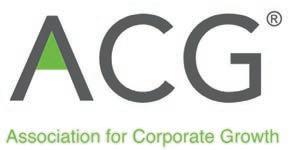
ABOUT
ACG CONTENTS This advertising-supported section/feature is produced by Crain’s Content Studio-Cleveland, the marketing storytelling arm of Crain’s Cleveland Business. The Crain’s Cleveland Business newsroom is not involved in creating Crain’s Content Studio content.
January 16, 2023 | S1 SPONSORED CONTENT
during uncertainty S2
your business S3 Valuation trends and expectations for 2023................................................... S4 Family of ce pitfalls S5 A proactive approach to selling your private company S6 Private equity shows resilience amid 2022 tumult S7 Programmatic M&A key to sustainable and intentional growth S8 Workforce and bene ts considerations during due diligence S9 Advice to sellers: maximizing company value ahead of a sale S10 Strategies to ensure a gratifying business sale S11 Fasten your seatbelt in this M&A market S12 Sell your company, not your cybersecurity risks S12 Eyeing carve-outs and costs through a risk management lens S13 5 questions every family-held succession plan should answer....................... S13 Private equity rms can craft a compelling ESG story S14 Want to sell your business? Here’s where to start S15 Bringing an end to gamesmanship S17 Stalwart industries expected to outperform M&A market in 2023 S17 ACG Annual Deal Maker Awards, Of cers and Board of Directors, and Events S18
Custom
information
custom publishing
Balser
Quality companies and thoughtful advisory reign
Placing growth at the center of
Amy Ann Stoessel, Associate Publisher | astoessel@crain.com Conner Howard,
Content Coordinator | conner.howard@crain.com Kathy Ames Carr, Project editor For more
about
opportunities, please contact Conner Howard.
Quality companies and thoughtful advisory reign during uncertainty
By Andrew K. Petryk
2022 has been a tale of two cities in the M&A market. The year started out strong and had buyers, sellers and deal professionals expecting the momentum from the previous year to propel M&A activity even further in 2022 and beyond. While down from the boom of 2021, middle-market* deal ow held steady through the rst half of the year, with transaction value surpassing $122 billion on 1,085 transactions, according to S&P CapitalIQ. In some M&A markets, sentiment shifted in the early summer under the weight of rising interest rates, in ation, recessionary fears and geopolitical uncertainties, with investors exuding more caution, driving transaction activity down in the third quarter. The market is evolving, and buyers are coming to the table with a different lens on acquisitions with resiliency and stability in focus.
A ight to quality is fueling a bifurcation of the “haves” and “have nots,” with capital chasing fewer quality deals hitting the market.
As lower-quality businesses wait on the sidelines, high-quality, marketleading businesses command even greater attention from buyers and may see valuations increase as the law of supply and demand prevails.
Strong activity and strong valuations remain within certain industry niches, and buyers are picking their spots.



Healthcare remains a robust sector for M&A activity, with the industry overall expected to be relatively insulated from recessionary pressures. Given the
complexity of payor reimbursement and the need to drive ef ciency in health care payment processes, Revenue Cycle Management (RCM) is ideally positioned to bene t from a level of demand that should be more stable than many other areas of the economy. Over the last 12 months, we have seen several large RCM platforms merge or be acquired and expect more private equity investments and strategic consolidations in the sector as companies look to expand their scale to meet the strong demand.
Industrial manufacturing, distribution, automotive and engineered materials have experienced slowing growth as supply chain challenges continue and in ation stresses margins. Industrial technology that drives ef ciency in the manufacturing process, lls the gaps between a tight labor market and expanding production capacity, or improves overall quality control and
quality of output is very attractive and garnering considerable interest from buyers.

The M&A market continues to exhibit caution, particularly in cyclical industries. Building products has seen the pressures of a near-term housing market slowdown exacerbated by rising mortgage rates, in ation and more cautious consumer spending. While industry players continue to pursue acquisitions that are in line with their long-term strategies, acquisition activity is expected to be dominated by strategic buyers going into 2023.
Debt markets
While ample capital availability exists, leverage appetite is discerning, and pricing has increased compared to 2021 and early 2022. All-in borrowing cost for oating rate loans has
with greater diligence and caution. Many relationship-oriented banks and middle-market lenders view the environment as an opportunity to build new relationships, while larger asset managers and credit investors are more focused on relative value and asset allocation given broader market volatility. Fixed-rate mezzanine debt has re-emerged as a potentially attractive form of nancing in certain circumstances, particularly where oating rate lenders are pulling back.
Valuation
Broadly, valuations are moderating, and although not as aggressive as earlier in 2022, they remain attractive. Strong niche players with revenue predictability and a visible growth story are attracting signi cant attention from buyers at above-average valuations. At BGL, we are leveraging our deep industry expertise and creative capital market solutions to drive results for our clients in the developing M&A and capital raising markets.
Author’s note: The middle market is de ned as enterprise values of $25 million to $500 million.
risen 300 to 400 basis points when accounting for rising reference rates and higher pricing spreads. Resilient, stable businesses are in favor, while businesses with signi cant disruption or cyclicality are being evaluated
Andrew K. Petryk is a managing director and leads the Industrials practice at Brown Gibbons Lang & Co. Contact him at 216-920-6613 or apetryk@bglco.com.

SPONSORED CONTENT S2 | January 16, 2023 Congratulations to all ACG Cleveland Deal Maker Award nominees and honorees! Calfee celebrates the accomplishments of our client Align Capital Partners, the ACG Cleveland Buyout Fund of the Year Award recipient! Calfee is honored to represent many companies and private equity funds that generate employment and economic success in our region and beyond. ©2022 Calfee, Halter & Griswold LLP. All Rights Reserved. 1405 East Sixth Street, Cleveland, OH 44114. ADVERTISING MATERIAL. CALFEE.COM | 888.CALFEE1 | INFO@CALFEE.COM
CORPORATE GROWTH & M&A
Petryk
The market is evolving, and buyers are coming to the table with a different lens on acquisitions with resiliency and stability in focus.
Placing growth at the center of your business
 By Brandon H. Fredericks
By Brandon H. Fredericks
Managing a middle-market business is all-encompassing.

The owner often wears many hats, including hiring employees, purchasing, posting social media content, planning employee events and direct sales with customers. While intricately operating the day-to-day aspect of the business, the most important role a business owner has is ultimately driving the company’s growth. Consistently re ecting, strategizing, planning and acting on growth cannot take a backseat to the daily tasks, which could consume an owner’s time and thought process if not carefully disciplined. Leaders will be successful in growing their businesses by equally balancing the ability to work on the business while in the business. Let’s discuss a roadmap for business owners to achieve middle-market growth.
The brains of growth
For middle-market businesses to achieve growth, the company’s vision must be well-thought out, outlined, and, most importantly, communicated. As the head of the company, the owner must clearly articulate a sustainable growth path for critical leadership roles, then ultimately, all employees. Commitment and buy-in are a must; a plan without
proper execution from lack of understanding will fail fast. Strong leaders must rst recognize the power of developing and cultivating a highpowered team to help achieve growth goals.
For employees to authentically understand and support the organization’s goals, the leader must set a clear vision from the top, which includes aligning leaders, departments and people to avoid silos. Ensuring all employees are aiming towards the same goal is not just a playbook for success but also establishes a healthy communication method within the organization, free and clear of “ivory tower” resentment when a leader is fully engaged with communicating the vision of the company.
A key role directly impacting a growth plan’s sustainability is the chief nancial of cer. Recognizing the CFO role as the rst line of strategic vision within the organization grants the company insight into cash ow, working capital, ability to secure capital and overall nancial health within the business to achieve the pillars of the growth plan.


The heart of growth
The heart of any successful business is that of the employees. Adapting a “people- rst” mentality is a responsibility all leaders should commit to, recognizing that hiring and working with the right people will improve the organization’s overall culture, which results in the best customer experience. In the last year, companies of all sizes and industries have reported dif culties with talent retention and engagement; if a business wants to grow, it can only do so if the right people are hired and, more importantly, retained.
The company’s strategic plan can also frame how employees are hired. What qualities best align with the growth vision of the business? How can the business attract the right employees? How do the company’s bene ts packages exceed the needs of working professionals? These questions are critical in attracting and retaining top talent, including establishing a thorough onboarding process to ensure success upon a new hire.
One technique for incorporating a healthy onboarding strategy for new hires is shifting the mindset from “training” to “preparing.” Explaining corporate policies and procedures in the form of
traditional training may discourage or bore new employees, missing out on the opportunity to engage in communicating the vision of the organization. A “preparing” mindset enables new hires to envision themselves on the path within the company as active players in the results.
Leaders are also responsible for maintaining the engagement of all employees. Staying in tune with situational changes (i.e., in ation) for employees outside of the executive salary package is critical for maintaining competitive and fair wages, establishing a rewards program to celebrate wins and a leadership education program to encourage ongoing professional development.
The soul of growth
Establishing the company’s “brains” and “heart” will allow a synergistic move into market growth and planning. Strategic planning should focus on how and where teams should be spending their time and energy. Is the company’s strategy more focused on organic market growth or acquisition strategies? Are teams seeking new market expansions or exploring new products/ services to further meet your customer needs? Far too often, businesses say
“yes” to all without truly understanding how to achieve success.
How do leaders combat these risks? It comes back to involving the right people. Asking great questions, as we move in the direction of our questions. Having a clear vision of where we are going. Embracing the strategic planning process is dynamic.
Executing a growth plan
Let’s address the elephant in the room — it takes extreme discipline, focus, time and energy to successfully work on the business while in the business. Leaders should align the company and its strategic vision with forward-thinking business advisers to ensure the plan’s execution can be achieved and acted on. A plan is only as good if it’s thoroughly followed-through, which can be the most intimidating action item on a business owner’s long list of “to-dos.”
Establishing a trusting relationship with quali ed and experienced accountants and business advisers results in the added support in the owner’s corner to achieve sustainable growth.


Brandon H. Fredericks, CPA, is principal of Advisory and Growth at Apple Growth Partners. Contact him at bfredericks@applegrowth.com.

January 16, 2023 | S3 NEW FACES IN NEW PLACES
CORPORATE GROWTH & M&A SPONSORED CONTENT
Fredericks
Valuation trends and expectations for 2023
By Albert D. Melchiorre
As we look back over the last year, the M&A markets and overall economy have experienced signi cant changes and challenges. All industries have been impacted by the constantly changing markets caused by a number of factors, including geopolitical uncertainty (e.g., Ukraine war, contentious elections, U.S. – China tensions, etc.), economic dif culties such as in ation and rising interest
rates, continued strain on supply chains and the dif culties in maintaining a strong workforce.
The public markets have been unpredictable as well, with the S&P 500 starting the year at a record high but dropping by nearly 15% through November. We’ve also seen signi cant
performance uctuations in the middle market, as businesses struggle to react to changes in the broader marketplace.
The uncertainty creates risk but also opportunity for strategic and nancial buyers to realize value through M&A.
From an M&A perspective, overall 2022 deal activity was down from record highs in 2021 in terms of both value and volume. In 2021, we were coming off of the rst year of the pandemic, so that
year’s M&A activity was arti cially high due to pent-up demand. As a result, and in comparison, 2022 is down. According to S&P CapIQ, total volume of closed U.S. deals through November was 14,028, which is down approximately 11% from 15,719 during the like period of 2021. With respect to deal value, and based on transactions where deal values were disclosed, total 2022 deal value in the U.S. was down approximately 21%, to $1.4 trillion as compared to $1.8 trillion in 2021, according to
S&P CapIQ. Drilling down closer to home, deal volume in the Great Lakes region through November decreased approximately 27%, to 221 from 302 during the like period of 2021. Great Lakes deal value also declined about 8%, to $143 billion from $155 billion in 2021.
Due to the challenges all businesses have been facing, buyers are more interested in well-performing companies as the pool of quality deals has shrunk relative to the amount of capital looking to be deployed.
As a result, there continues to be a “ ight to quality” for the acquisition of businesses and management teams that have exhibited recurring revenues, strong margin pro les and minimal cyclicality over the past 12 months. With that being said, private equity buyers still have an abundance of liquidity in the form of “dry powder,” or uninvested capital, that will be strategically deployed at valuation levels that mirror the current economic outlook.

As we stray further away from the unprecedented M&A activity and valuations experienced over the past 24 months, sellers will encounter the challenges of navigating a buyer’s market in 2023. Excluding premium businesses or businesses in an emerging industry, sellers can expect lower valuation multiples stemming from a more selective buyer process. While this may take some time to accept, a point of intersection between buyer and seller expectations is anticipated to occur early in 2023. As a result, sellers will have the option of either accepting lower valuations, often in cases where a transaction is absolutely necessary, or to wait for a better opportunity in the future.

As we look into 2023, and with all of the uncertainties in the market, we still expect the M&A markets to be resilient and continue to be active, albeit at lower levels. Until there is a signi cant liquidity gap in the markets if, and when, strategic cash and private equity dry power drop to historically lower levels, we still expect solid M&A activity in 2023. From a valuation perspective, however, we expect values to continue to level off but not dramatically. We expect 2023 to be another one of those dynamic years, one with plenty of challenges but opportunities as well.
Stay nimble and be ready to adapt to changes. Use technology and data to make well-informed decisions so that your businesses can perform at their highest levels.

Al Melchiorre is president and founder of MelCap Partners, LLC. Contact him at al@melcap.com.

CORPORATE GROWTH & M&A SPONSORED CONTENT S4 | January 16, 2023
Melchiorre
As we look into 2023, and with all of the uncertainties in the market, we still expect the M&A markets to be resilient and continue to be active, albeit at lower levels.
Family of ce pitfalls
By Douglas McCreery
When one or more family members hold ownership and control of a successful business or concentration of investment assets, at some point, a conversation will start about what comes next. What should be done to protect and grow the family’s assets as control and wealth transmits to the next generations? What can be done to better separate individual family members’ business and personal service needs?
Often, the conversation turns to the idea of establishing a family of ce. If the family controls an operating business, there may be some elements such as bill paying and personal of ce support already in place. But a comprehensive family of ce entails a much more diverse set of skills. Some of these service needs include:


• investment management
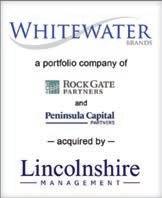

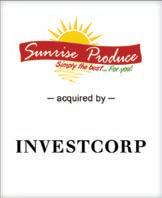



• performance metrics and evaluation

• trust and estate planning

• trust and distribution administration



• insurance reviews

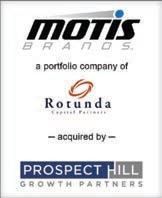











• accounting and bookkeeping






• tax planning
• tax return preparation


• family education
• family governance
As a result, appropriate staf ng for a single-family of ce requires recruiting skilled individuals with different training and backgrounds.
Annual staf ng and overhead costs are a signi cant consideration. For example, a seasoned investment manager will earn at least $300,000 more with substantial private equity experience. A recent study concluded that even a small single-family of ce with two professionals and four support staff carried an annual cost approaching $2 million.









Also, contracting out functions such as tax preparation incurs outside professional services costs while the time costs and burden of record-keeping and document assembly must still be performed internally. Many types of services such as tax return preparation have concentrated time periods in which work must be performed, followed by periods of inaction, which is a costly inef ciency.
Keep in mind that, at its core, a single-family of ce is a small business
comparable to any small enterprise. Unexpected personnel issues, inner of ce politics, compensation issues and succession planning are all part of the routine. Few individuals who have the bene t of substantial wealth nd it enjoyable or rewarding to be the central responsible party for managing these issues.
Another aspect is developing and retaining professional, independent counsel. Single-family of ces tend to become intellectual cocoons in which group think may ourish. This can result in unfortunate outcomes, such as not fully appreciating the impact of income, capital gains and transfer tax costs in a wealth management or transfer strategy and/or not recognizing investment concentrations where objective analysis would recommend greater diversi cation to protect accumulated wealth.
An important wealth management tool that can guide a family is the development of one or more written investment policy statements to match speci c objectives of various bene ciaries and evaluate performance over time. For example, money set aside when grandchildren are young to pay for higher education should have very different investment guidelines than investing to ensure routine income
ow to an older relative. Developing effective investment policy statements and selecting objective investment benchmarks can be highly complex and warrants a considerable amount of experienced professional input.
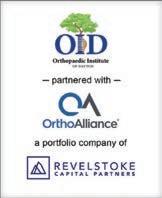

Similarly, if a family wishes to promote charitable causes, developing a policy to focus these efforts and have staff organized to evaluate and screen requests for gifts should be part of the family of ce mandate.
The multi-family of ce Because of the many interlocking service needs and objectives for a wealthy family, highly developed multi-family of ces are better suited to providing integrated solutions for wealthy families than single-family of ces. The key here is solutions, not just services. Because needs vary over a year and dynamically change with the passage of longer periods of time, a high-quality boutique multi-family of ce will house highly skilled and experienced professionals to ful ll client family needs over multiple generations.
A key factor to selecting a multifamily of ce is to evaluate the reputation of the rm, the experience of its leadership and support staff, its commitment to independence, rm sustainability over time and its range of available in-house services. These should include legal support, family

governance assistance, philanthropic support, and investment and wealth management advice. A fully developed multi-family of ce should not be overly focused on gaining custody of a family’s assets for management.
It should offer a wide range of services for either a negotiated annual xed fee or a fee-based asset under management or administration. With this approach, the range of services provided to a speci c family should be varied over time as family service requirements expand or contract. The ability to deliver integrated advisory and management solutions, blending investment management and advice on family matters on a fully objective basis is a de ning characteristic of highperforming multi-family of ces.
In a successful partnership of a family with a multi-family of ce, a small team within the of ce will develop a deep understanding of the goals and aspirations and challenges within the client family. This will enable the professional advisers to “stand in the shoes” of the family’s leaders so that the advisers offer objective and carefully considered guidance to the client family.

Douglas McCreery is CEO and managing member at CM Wealth Advisors. Contact him at 216-831-4149 or dmccreery@cmwealthadvisors.com.


Investment banking and financial advisory services for the global middle market Learn what BGL can do for your company at bglco.com Mergers & Acquisitions Capital Markets Financial Restructuring Valuations & Opinions Strategic Advisory Transactions involving securities are conducted at the Chicago and Cleveland offices. Brown, Gibbons, Lang & Company Securities, Inc.,an affiliate of Brown Gibbons Lang & Company LLC, is a registered broker-dealer and member of FINRA and SIPC. Business & Industrial Services • Consumer • Healthcare & Life Sciences • Industrials • Real Estate Chicago • Cleveland • Los Angeles • New York January 16, 2023 | S5 CORPORATE GROWTH & M&A
SPONSORED CONTENT
McCreery
A proactive approach to selling your company


 By Jim Lisy
By Jim Lisy
The U.S. economy is in the midst of a massive intergenerational transfer of wealth involving privately held companies. Many were established in the post-war period and passed onto baby boomers, only to nd subsequent generations had no interest in the family business. As an owner looking for liquidity and succession planning alternatives, it’s important to plan for your path to a successful exit.
A realistic look at private equity
Enormous amounts of capital have been raised to facilitate the generational transfer of wealth in process, with much of the funding coming from private equity groups and banks. While private equity groups often have a reputation for a singular focus on nancial engineering and investment returns with little regard for collateral damage, such as the effect on employees, it’s simply not the case.
Private equity has evolved greatly over the last two decades, focusing on creating value in acquisitions by providing growth capital and strategic direction, along with management expertise and

 Lisy
Lisy
structure. When you embark on the process to obtain liquidity and transition ownership, understand that having private equity involved in your deal is highly likely and often bene cial.

Evolution of alternatives
Along with the growth and evolution of private equity, the range of nancing and structuring solutions available to private companies has also evolved in recent years. For example, mezzanine investors and minority equity funds can provide liquidity without a change in control, while setting the stage for subsequent transactions. In deals that do involve a change in control, you have the opportunity to roll over a portion of your proceeds to reinvest in the company as a way to stay involved and preserve the potential to earn future additional returns on your investment.
3 questions to help you plan
Along with more alternatives, you have many more complex decisions to make.
M&A Risk Management & Human Capital Strategies Providing a world of protection around your investments. Due Diligence and Human Capital Assessment Risk Management & Property & Casualty Insurance Employee Benefits 401(k) and Retirement Plan Services Key Person Life Insurance and Executive Compensation Reps & Warranties Insurance (RWI) Portfolio Program Management © Oswald Companies. All rights reserved. DS2715 OswaldCompanies.com/PrivateEquity 855.4OSWALD When you need business advice, we have the experience that matters. 216.696.4200 sssb-law.com Schneider Smeltz Spieth Bell LLP is a full-service law firm with experience dating back to 1867.
SPONSORED CONTENT S6 | January 16, 2023
Below are three basic, but critical, questions to address early on:
1. What are your objectives for the sale?








2. When should you exit the company?


3. Who can add value to the process?
1. What are your objectives? The rst step in the planning process is to establish your objectives. Are you seeking full or partial liquidity, and how much do you want to be involved in the business after the transaction closes? Determining objectives is obviously more complicated in a company with multiple shareholders across generations. For example, a shareholder nearing retirement may want full and immediate liquidity, while children involved in the business may want to continue their careers and reinvest in the business.
In setting objectives, it’s important to understand different scenarios impact the value of the company in various ways. For example, a shareholder who has been very active in managing the company but now wants to sell 100% of their holdings and have nothing to do with the business after closing will nd valuations disappointing. Most buyers will value the business more generously if they know you will stay involved post-closing. In fact, if you decide to roll over part of your proceeds to reinvest in the company, a buyer will view that as skin in the game, which reduces their risk and further enhances value. From a seller’s perspective, the rollover investment provides an opportunity for a second bite of the apple, generating additional returns if the acquisition proves successful.
2. When should you exit? As with timing the public equity markets, trying to determine the absolute optimal timing to embark on an M&A transaction is often a fool’s game. Ideally, the time to initiate a transaction is when earnings are good and growing, and valuations are generous. At the end of the day, the answer to “when” is often a very personal decision, but the key is to plan ahead and be ready. Begin identifying your objectives and creating a realistic timetable for the transition three to ve years before the sale process actually begins.
3. Who can add value to the process? While many businesspeople are adept at building high-value companies, leading the charge to sell your company involves a different, and very speci c, skill set.
Involving the right attorneys, investment bankers, accountants and valuation experts in your planning process — well before the sale — to help you formulate objectives, analyze alternatives, market your company and implement solutions will maximize your efforts and provide value well in excess of the cost of a highly skilled team.

Jim Lisy is a managing director of M&A Advisory at Cohen & Company. Contact him at 216-774-1153 or jlisy@ cohenconsulting.com.

Cohen & Company is not rendering legal, accounting or other professional advice. Information contained in this article is considered accurate as of the date of publishing. Any action taken based on information in this article should be taken only after a detailed review of the speci c facts, circumstances and current law.
Private equity shows resilience amid 2022 tumult
By Dick Hollington
2022 has been a challenging year on many fronts. The pandemic impacts on supply chain, labor and global market shutdowns are still being felt after 2½ years. Fortyyear highs in in ation have led the Federal Reserve to raise rates by 375 basis points in six months, one of the fastest paces in history. A modest or deep recession in 2023 would not be surprising. Add to these factors the geopolitical risks posed by Russia’s invasion of Ukraine, China’s aggressive stance in the South China Sea and other hot spots in the world, and you have a tumultuous environment.
With that backdrop, you would expect private equity deal activity, valuations and leverage levels all to be negatively affected. On the contrary, U.S. private equity deal activity through the third
quarter has remained robust and on pace with 2021, which was a record year. This is quite surprising as, anecdotally, leverage lending has largely come to a halt. Other sources of credit have lled the void.
We have seen a shift to higher-quality businesses. GF Data sources indicate that 71% of the completed 2022 transactions below $250 million of total enterprise value were with aboveaverage companies, vs historical levels of 56%. This indicates that with the surplus of dry powder among private equity rms, quality businesses are yielding premium values, even in these uncertain times. GF Data indicates valuations of buyouts have risen from 7.4x to 7.5x EBITDA year over year. For below-average businesses, processes are being extended as private equity rms are raising their level of scrutiny around sustainable earnings
and often lowering values below which sellers are willing to transact.
We expect to see the impact of rising interest rates, lack-of-available leverage lending and economic uncertainty on valuations and leverage levels in 2023. The level of private equity liquidity available to pursue businesses is not abating; however, the cost of borrowing and availability of credit will certainly begin to impact valuations. With seller expectations remaining high, deal activity will likely fall. The private equity industry has shown great resilience in the immediate post-pandemic period and faces increased challenges as 2023 gets underway.
Opinions expressed in this commentary re ect subjective judgments of the author based on conditions at the time of writing and are subject to change without notice.


Dick Hollington is a managing partner at CW Industrial Partners. Contact him at dhollington@cwindustrials.com. For informational purposes only.
Hahn Loeser provides tailored solutions for our clients looking to grow. We have years of experience representing businesses selling to private equity, and our responsive team is committed to getting the deal done for our clients. Whatever your legal needs are, we are here to help.
EXCEEDING EXPECTATIONS. EVERY DAY. CLEVELAND | CHICAGO | COLUMBUS | FORT MYERS | NAPLES | SAN DIEGO HAHN LOESER & PARKS LLP | HAHNLAW.COM | 216.621.0150 200 PUBLIC SQUARE | SUITE 2800 | CLEVELAND, OHIO 44114 January 16, 2023 | S7
Hollington
SPONSORED CONTENT CORPORATE GROWTH & M&A
2023 ushers in challenges that will test tenacity
Programmatic M&A key to sustainable and intentional growth
 By Jason Stevens
By Jason Stevens
Acquisitions should be a tool in every growth company’s toolkit. Of course, an acquisition is not something you reach for in every instance — you still need to focus on delivering a great product at the right price to the right customers. But when you need to juice growth, expand to new markets or ll out a product line, acquisitions can deliver superior results relative to in-house investment.
Like any discipline, doing M&A well
requires practice.
According to ongoing research by McKinsey, rms that make a commitment to integrate M&A into their growth strategies can generate and sustain higher shareholder returns. They found that rms that embrace what they term “programmatic M&A,” or pursuing and executing multiple smaller deals a year,
generate higher excess total shareholder returns, with a lower deviation, than rms closing one-off acquisitions.
This makes sense to us. When you practice any skill, you get better at it. Firms that close multiple deals a year are going to develop the essential skills of target selection, negotiation and integration that drive accretive acquisitions, while companies practicing less often don’t. But what really stands out to us is that the riskiest growth strategy, McKinsey nds, is relying solely on organic growth, doing
zero acquisitions. These rms as a whole underperformed their acquisitive peers, and the range of outcomes is wider than for serial acquirers.
We see direct evidence for the value of programmatic M&A when looking at successful private equity rms. Long gone are the days of the corporate raider / LBO stigma, where private equity rides in with a big offer, res everyone and tries to make a return through cost cuts. Today we see private equity rms selectively searching for a platform
investment in an attractive industry, run by capable management teams with a commitment to growth. Together with their private equity sponsor, these teams systematically pursue tuck-in acquisitions that align with the strategies, product lines and geographies of the platform company. By embracing M&A as a routine part of the business, these companies get really good at growth, topand bottom-line.
For instance, one private equity rm we work with, Rockbridge Growth Equity out of Detroit, has used this playbook to build a national leader in radon detection and mitigation. Following its acquisition of Protect Environmental in 2020, Rockbridge has closed ve additional add-ons, expanding the geographical reach and service offerings of its platform investment. The integration of these six companies plus some additional acquisitions into a single national player has boosted sales and created a national presence.
This playbook works across borders as well. Ryan, LLC, a tax services and software provider, is the world’s largest rm dedicated exclusively to business taxes. Most of Ryan’s revenue is generated from North American operations. In 2020, Ryan made a plan to expand its operations in the European and Australian markets. Ryan identi ed and approached over 110 targets tting its criteria in those markets. After careful vetting, analysis and negotiation, Copper Run assisted Ryan in making two acquisitions in the Australian and European markets, signi cantly expanding Ryan’s presence in each market.
In our experience, most rms with revenue over $20 million can bene t from following a similar playbook. Start with your strategic objectives and make sure an acquisition aligns with your growth strategy. Geographic expansion, product line extension, new customer relationships, vertical integration and expense consolidation are all viable reasons to consider an acquisition.
The next step is to get very clear on what you’re looking for. De ning your acquisition criteria upfront is a key part to successful dealmaking. Integration challenges scale quickly. In most cases, you’ll want to look for targets no larger than a third your size if not smaller.
The goal of programmatic acquisitions is growth through multiple smaller deals, allowing your team to practice identifying, closing and integrating acquisition targets. One-off mergers can make strategic sense, but over the long run a programmatic approach to dealmaking will generate the greatest returns.
We nd that the most successful acquirers view the dealmaking process as part of ongoing operations, constantly evaluating the market for opportunities, building relationships and pursuing off-market transactions. Programmatic M&A requires a well-designed plan and discipline. It takes a willingness to pursue multiple smaller deals over several years rather than relying on episodic “big-bang” transactions. The upfront investment of time and energy may deter some, but acquirers that maintain a programmatic approach will be rewarded in the long run.
Jason Stevens is COO at Copper Run. Contact him at 614-888-1786 or jstevens@copperruncap.com.
 Christal
Contini
David Agay
Patrick
Berry
Jacob
Debus
David Kall
Andrew
Kulpa
Francis Massaro
Benjamin Panter
Vanessa Bailey
Jacob Schmalz
John Wirtshafter
Adam Baginski
Kathryn Hickey
David Shafer
Laura Sims
Amy Willey
Chair
Christal
Contini
David Agay
Patrick
Berry
Jacob
Debus
David Kall
Andrew
Kulpa
Francis Massaro
Benjamin Panter
Vanessa Bailey
Jacob Schmalz
John Wirtshafter
Adam Baginski
Kathryn Hickey
David Shafer
Laura Sims
Amy Willey
Chair
SPONSORED CONTENT S8 | January 16, 2023
mcdonaldhopkins.com
CORPORATE GROWTH
Stevens
& M&A
Workforce,
By Brian Stovsky
Today’s headlines are lled with talk about in ation and rising prices. Although the recent Consumer Price Index reporting has showed a slight curve in trend, businesses will continue to deal with the balancing act of absorbing cost increases while retaining employees.

The cost of labor and bene ts continues to rise, putting pressure on buyers to perform more in-depth reviews of these cost items pre-closing, and to have a thoughtful postclosing plan to tackle any issues found.
Health insurance market



















The cost of health insurance saw an uptick as 2023 drew near. The average increase for fully insured plans, with no plan design changes, ranges from 6% to 8%, year-overyear, according to the Society for Human Resource Management and the Kaiser Family Foundation. That’s a full percent higher than increases experienced a year earlier.
The increases are due to myriad factors. Over the previous 24 months, the pandemic hindered members’ ability to see health care providers for procedures deemed nonessential and, while claims reduced during the lockdown, they rapidly bounced back once providers’ doors re-opened.
Further, the severity of claims increased. Many conditions worsened over the period when users were unable to see providers in-person. Claims data experiences a lag in reporting, and we expect the increase in claims trend to continue into 2023.
Providers are also putting more pressure on insurance carriers during contract negotiations, particularly regarding provider reimbursements. All indications show that it will cost carriers more in the future to maintain their relationships with hospital systems. Those increases will be felt by consumers in the upcoming years, including the most recent fully insured renewals released on Jan. 1.
How buyers can adapt
Buyers should be cognizant of market trends when looking at a target during due diligence and include assumptions based on trends when developing proforma nancials to gain a more accurate picture of the ongoing cost of insurance. To combat the trend, buyers can work with their bene ts/risk adviser to analyze current bene t plan designs, costs and claims data (if available) during due diligence and determine options to control costs and atten the curve.
A few options that have been successful.
• Introduce self-insured plans or hybridfunded plans (including HRA wrap plans) to reduce xed costs while taking on some additional variable liability. Self-insuring a plan enables buyers to carve out prescription drug or disease management, giving employers more control over their costs.


•Educate employees on lower-cost provider options, such as telemedicine and virtual visits when appropriate. Additionally, direct primary care or a narrower provider network are available options. Advisers can determine the adequacy of such options through a provider disruption analysis. Any of these options directly impacts claims, thus mitigating the impact of trend.

• Education and engagement can also be used as a retention tool, speci cally after an ownership transition, easing the integration
Stovsky



process. Employees tend to respond well when given more education around their bene ts, which reinforces a positive company culture.
The role of human capital
Employees are the primary drivers of a business, but they are also a leading expense. Identifying key employees and understanding processes to hire, retain and
ensure employees reach their potential are all imperative to successful transactions.


An evaluation of internal processes to assess bene ts and compensation, as well as compliance, should be a consistent practice for businesses. The stress on businesses to provide competitive compensation and bene ts packages to their employees persists and will continue to play a factor in keeping key employees and improving retention, speci cally through a transition of ownership.
Human resources and human capital due
diligence assess the value of a population or employee base of a target and will assist a buyer in identifying key employees as well as any red ags or shortcomings in terms of their processes. An HR advisory team can also review targets for discrimination or compliance issues among employees and identify employees who are pertinent to the business continuing on a consistent trajectory. Alternatively, an HR due diligence adviser can help a buyer identify areas where additional employees may be needed moving forward.
Buyers can also use an HR due diligence



adviser to assist in creating a change management strategy during closing and post-closing planning. Change management involves communicating with groups of employees to ease the transition process and reduce anxieties employees may feel upon the completion of a transaction. During their post-closing planning, change management can be a great tool for buyers to use to obtain a consensus among employees on where meaningful improvements can be made. This will increase the goodwill among employees.
Brian Stovsky is the private equity business development leader at Oswald Companies. Contact him at 216-777-6114 or bstovsky@oswaldcompanies.com.


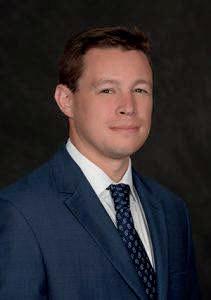








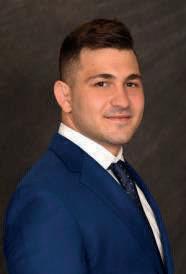


January 16, 2023 | S9
Securities offered through M&A Securities Group, Inc. Member FINRA /SIPC. MelCapand MAS are not affiliated entities. Success-Focused Services Sell-Side Advisory Buy-Side Advisory Private Placement Agent Corporate Restructuring Business Valuation Feasibility Assessment Our Commitment is to Provide the Highest Quality Investment Banking and M&A Advisory Services to our Clients Winning Approach to M&A Advisory 2022 Investment Bank of the YearNorth America 2022 Industrials Deal of the Year –Applied Vision to Antares Vision 2022 Consumer Deal of the Year –Perfect Power Wash to Incline Equity Partners 2022 Industrials Deal of the Year – Frazer & Jones, a division of The Eastern Company, to Fidelis Holdings We’d Love to Hear From You Albert D. Melchiorre President 5021 Ridge Road, Wadsworth, OH 44281 al@melcap.com www.melcap.com
bene ts considerations
due diligence
during
CORPORATE GROWTH & M&A SPONSORED CONTENT
Advice to sellers: maximizing company value ahead of a sale
 By Brent M. Pietrafese and Margaret T. Ahern
By Brent M. Pietrafese and Margaret T. Ahern
Whether the seller is an individual entrepreneur, a private equity fund or a public company, selling a business can be time-consuming, frustrating and, at times, extremely stressful. However, developing a strategic plan early in the process can dramatically reduce those factors and, most importantly, result in a more pro table exit. There are four steps sellers can take to maximize company value ahead of a sale.
1. Start preparations early.
It is never too early to begin preparations for the sale of a company. Taking steps in advance, as outlined below, will help ensure that the company’s legal and nancial house is in order, which will maximize the company’s value and make for a more ef cient sale process.
2. Select the appropriate transaction team.




Sellers should begin to build their transaction team once they start thinking about a sale to ensure all team members are familiar with the business. The transaction team is typically composed of the seller’s internal management team and external specialists such as lawyers, investment bankers and accountants.
Before starting a sale process, the seller should take steps to ensure its internal management team is equipped to handle an M&A transaction.
experience selling businesses similar in size to the seller’s business.
3. Conduct internal due diligence.
Over the past few years, more sellers have decided to perform their own quality of earnings (QofE) and Phase I environmental reports before going to market. While the costs for those reviews are not immaterial,
aspects of the business. Sellers must also identify how to approach buyers — either individually or through an auction.
Pietrafese
Before a prospective buyer conducts its due diligence, sellers should conduct their own to con rm there are no problems that could delay or otherwise adversely impact the sale. If sellers discover any issues during this stage, they will have time to cure or develop negotiating strategies to deal with them. An experienced transaction team is essential for this process as they can identify common issues on the front end and then help correct them.
Ahern
The management team members routinely include the seller’s CEO or president, CFO, vice president of sales, operations, etc. Prior M&A experience is particularly useful for those members of the deal team because they serve as the primary link between the company and its transaction team and are involved in all aspects of the sale process.
The management team will need to outsource certain tasks, which will require the assistance of an outside law rm, investment banker, accountant and other strategic advisers. Together, the management team and external specialists form the transaction team. When assembling the transaction team, sellers should select advisers with signi cant and successful M&A
Areas inspected and information gathered during a seller’s internal due diligence should include:
• Financial statements and other nancial information
• Corporate records
• Material contracts, paying special attention for change-of-control or antiassignment provisions

• Material third-party relationships
• HR and employee bene ts
• Permits/licenses
• Pending or threatened legal claims
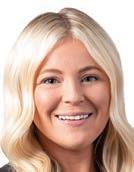
• Real estate issues
• Environmental issues
• Insurance coverage
early identi cation of issues typically uncovered by those processes can go a long way to limiting or eliminating those issues’ negative impacts on price or deal certainly (or both). There is some risk that a buyer will still want to have their own reports done, but if sellers choose a well-regarded rm to perform the work, there is less chance of that occurring.
4. Formulate a strategic sale strategy. With the transaction team’s help, sellers should generate a strategic sale strategy. To do so, the team should review market conditions for the company’s industry from an M&A perspective to help gauge expectations and decide the best time to sell. Determining whether the target buyer will be strategic or nancial also provides helpful guidance on how sellers should position their business, as the two types of buyers value different
Additionally, sellers will need to prepare a Con dential Information Memorandum (CIM) to provide prospective buyers with enough information about the seller to elicit meaningful bids. The CIM usually contains a description of the company’s industry, business, history and principal assets, as well as information about its management and employees, and depending on the sensitivity of the information, major customers and contracts. Before distributing the CIM to any prospective buyer, sellers should ensure that the buyer executes a con dentiality agreement.
Though the steps described above require extra time and preparation, adhering to them will maximize company value ahead of a sale and make for a much more ef cient (and less stressful) sale process.

Brent M. Pietrafese is co-chair of the Corporate and Finance Practice Group at Calfee. Contact him at 216-622-8623 or bpietrafese@calfee.com. Margaret T. Ahern is a Corporate and Finance associate attorney at Calfee. Contact her at 216-622-8369 or mahern@calfee.com.

 BY HEDGEWEEK
BY HEDGEWEEK
Cohen & Company? CONNECT WITH US
MBA
As a firm One of America’s Best Tax & Accounting Firms 2023 (Forbes) 650 dedicated professionals across the U.S. 200+ skilled tax professionals Partner-led engagements with a single contact point As industry experts 675+ active private equity clients 45 years helping private companies buy, sell & integrate Team with global accounting & consulting firm backgrounds Private equity, real estate, investment, transactions, valuation & management consulting expertise As published thought leaders LEARN MORE AT COHENCPA.COM “M&A Essentials: The Purchase Price Adjustment” “Throwing Out the Playbook: A Look at Vetting M&A Targets During & Post-Pandemic” “How the Current Tax Landscape is Impacting Domestic Deals” “Where Did the Deferred Revenue Go in Your Acquisition?” “M&A Integration Strategies: Holding Company vs. Full Integration” Do you know
MBA
jlisy@cohenconsulting.com 2022 Best Tax Adviser
Justin Thomas, CPA, MACC Partner, Transaction Services 216.774.1202 jthomas@cohencpa.com Phil Ryan, CPA,
Partner, Assurance 216.774.1120 pryan@cohencpa.com
Jim Lisy, CFA,
Managing Director, M&A Advisory 216.774.1153
Named SPONSORED CONTENT S10 | January 16, 2023
CORPORATE GROWTH & M&A
It is never too early to begin preparations for the sale of a company.
Strategies to ensure a gratifying business sale
By Christopher S.W. Blake and John Paul Lucci
Selling a business can represent the pinnacle of a life’s work, provide the ability to diversify assets and the opportunity to create generational wealth. Preparation and planning will streamline the process and increase the likelihood of success.
As any successful seller will attest, selling a business can be an all-consuming process, equivalent to a second full-time job for the owner and key executives. While daunting, we set forth seven proven strategies to prepare your business for sale that will reduce transaction expenses, maximize proceeds and increase the odds of closing.
Before we present our list, sellers should be aware of an evolving trend in corporate transactions. In recent years, more buyers and sellers purchase representation and warranty insurance (RWI) to cover-post closing indemni cation obligations. While RWI bene ts sellers because it decreases the size of escrows and other holdbacks and limits sellers’ post-closure exposure, RWI carriers require buyers to conduct very thorough due diligence, increasing the diligence burden on buyer.
The seven proven strategies are: 1. Advisers. Selling a business is a
highly technical legal, tax and accounting exercise that requires experienced professionals who understand market terms and transactions. Some of the most expensive deals we have worked on involved unsophisticated seller advisers. Save yourself money, hassle and delay by hiring experienced deal lawyers, investment bankers and accountants.

2. Financial statements. Before you begin the sale process, be sure your nancial statements are up to date and accurate. If personal or family expenses that have been run through the business could be questioned, we strongly recommend working with your advisers to address those issues before diligence begins.
3. Conduct lien searches. While banks and nance companies are quick to place liens on assets, removing liens can be
cumbersome. Often owners never know about certain liens, banks neglect to release liens and, in some instances, the secured party that led the liens has ceased to exist or is part of a different company where the business owner no longer has any contacts. These “phantom liens” create unique challenges. Generally, a buyer — and, more importantly, its lender — will not close a transaction when relevant assets are encumbered by liens. While active liens can be paid off at closing, phantom liens can take weeks to release. By conducting lien searches early in the process, you can “scare away” phantom liens.
4. Good standings. We recommend verifying the good standing of your legal entity in its state of incorporation/ formation and in each state where your business is quali ed to transact business. It is very easy — and shockingly common — for an entity to fall out of good standing or even have its charter revoked for failure to le state tax returns or annual reports. For a business with a complex entity structure or that les consolidated tax returns, taxing authorities often misapply tax payments or report a return missing for a subsidiary that is part of a consolidated return. The process of correcting these errors is cumbersome, often requiring
someone with a power of attorney to remain on the phone for hours. In addition, reviving an entity after revocation of status is not an automatic process in many states.

5. Contracts and other business records. Buyers will not purchase a business without completing due diligence, which is more involved in the era of RWI. You can streamline that diligence by locating and assembling fully executed electronic copies of all business records. This statement seems overly broad and burdensome — because it is. Tackling this chore on the front end, though, can expedite diligence and thus your closing.
As a start, you should obtain fully executed copies of all contracts, such as customer and vendor agreements, leases, software agreements and bene t plan documentation. Furthermore, you should assemble all stock certi cates and ledgers, minutes and other governing documents. Finally, you should gather all tax returns for the business and your bene t plans, including related form 5500s. The list of documents that must be disclosed can seem endless. Sellers often tell us documents do not exist or cannot be located. Buyers will not accept that excuse. A seasoned transactional lawyer can provide you with a standard diligence
checklist to jumpstart this process.
6. Declutter. Many businesses have obsolete, slow-moving or other unsaleable inventory. Rather than debating the value of such material, disposing of such items will make physical inventory counts easier and reduce post-closing working capital disputes.
7 Ordinary course. As a seller, you should run your business like you own it until the moment you have the sale proceeds. Not only will Letters of Intent and purchase agreements require sellers to operate the business in the ordinary course consistent with past practice, but the risk remains that a deal falls apart at the eleventh hour. Therefore, continue to maintain inventory, process payables and take other customary actions until the end.
These few action items will save you time, money and make that celebratory bourbon cocktail taste so much sweeter at the closing dinner. And if you hire the right advisers, they will buy.
Christopher S.W. Blake is a partner at Hahn Loeser & Parks LLP. Contact him at 216-274-2552 or cswblake@hahnlaw. com. John Paul Lucci is a partner at Hahn Loeser & Parks LLP. Contact him at 216-274-2310 or jlucci@hahnlaw.com.
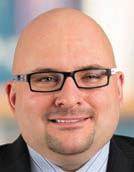
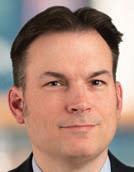
INSURING INVESTMENTS. Enhancing Returns.
In large, complex transactions like mergers and acquisitions, what you don’t know can really hurt you. That’s why Hylant offers clients the expertise of a dedicated M&A and Transaction Solutions team

Let us help you reduce the uncertainty of complex transactions, protect your investments and enhance your returns. Learn more at hylanttransactionsolutions.com.

BUSINESS INSURANCE EMPLOYEE BENEFITS PERSONAL INSURANCE January 16, 2023 | S11
Blake
CORPORATE GROWTH & M&A SPONSORED CONTENT
Lucci
By Frank Wardega
Despite concerns in the U.S. and globally about general market conditions and a recession potentially on the horizon, as of this writing we remain in what could be described as a period of “peak M&A,” with private middle-market M&A transactions as active or busy as any market within the last 20 years. (For reference, middlemarket M&A usually means transactions between parties with annualized revenues of at least $5 million but below $1 billion.)
While the actual recent peak moment for middle-market M&A likely occurred sometime in late 2021 or early 2022, there is no saying when this high volume will substantially decrease. This article explains what today’s peak M&A environment means for the market, for legal and other
deal advisory services and for business owners looking to sell.

The pace of negotiated transactions, practice of law and M&A work seem to accelerate with each passing year. With deals at such a very high volume, one might think that deal pace would have to be tempered somewhat given that business development leaders, investment bankers, lawyers, accountants and others involved in deals are ostensibly nite resources. And given that bandwidth and hours in the day are a nite resource as well, one might also expect that time from execution of a letter of intent to closing may be longer in comparison with less active periods. That has not been the case during this period of peak M&A. There has not been any tempering whatsoever of deal pace, expectations or in particular “speed to close.”
To the contrary, the heightened activity during this peak M&A period has led to an even more accelerated pace due to a desire on the part of sellers and buyers to get transactions done even more expeditiously. This is undoubtedly due in part by a desire to get the deal done and funded before general conditions, and in particular credit markets, potentially materially worsen. Essentially, it seems we are in something of a FOMO (fear of missing out) market.
For sellers, this means that is has become important to be ready to manage the inherit distraction and challenges of running a business concurrently with being involved in a sale process, with accelerated due diligence expectations and an accelerated transaction timeline turning up the heat. Making sure that you have the internal resources suf cient to handle the accelerated due diligence and negotiation process while running your day-to-day business has never been more important.
M&A market
Additionally, choosing the right advisers and deal team is critical in this period of peak M&A. While interviewing potential counsel (or investment bankers and other advisers), clients need advisers with the right skill set, experience, marketable fees and capacity to get the deal done. An honest conversation about capacity with prospective advisers has never been more critical. Here, as always, sellers want to engage with advisers that are in demand because if a rm is not in demand (particularly during peak M&A), it does not speak very well of the rm.
Sellers should also ensure the attorneys or other advisers pitching the deal will actually be working on the transaction and available to them as a priority – not just delegating the le to less-experienced attorneys or advisers. That is why nding the right adviser with the requisite level of sophistication, who also has suf cient capacity, is so critical. Simply put, business owners engaging advisers need to ensure they are not being marketed and sold the “A” team while actually getting the “B” team. They also need to ensure they pick advisers who will consider them a priority client.
Notwithstanding the concerns about general economic conditions, the current
middle-market M&A environment remains an attractive landscape for sellers who are considering a sales process. Sellers need to be nimble and ready to act quickly, be able to manage the inherent distractions when going to market and choose legal and other advisers more carefully than ever to ensure that they are able to take advantage of conditions that remain favorable for sellers seeking a potential exit.
Frank Wardega is a member in the Mergers and Acquisitions Practice Group at McDonald Hopkins. Contact him fwardega@mcdonaldhopkins.com. To learn more, visit mcdonaldhopkins.com.
This content is copyrighted to McDonald Hopkins LLC All Rights Reserved. This article is designed to provide current information regarding important legal developments. The foregoing discussion is general information rather than speci c legal advice. Because it is necessary to apply legal principles to speci c facts, always consult your legal adviser before using this discussion as a basis for a speci c action. This material is not intended to create, and your receipt of it does not constitute, an attorney-client relationship with McDonald Hopkins LLC.
By Michael W. Schauer and Maggie Jones
Cybersecurity sounds intimidating, and rightly so. U.S. buyers and sellers are subject to a patchwork of legal and regulatory requirements due to a lack of national legislation. While the enactment of new and/or updated comprehensive data privacy laws in California, Colorado, Connecticut, Utah and Virginia in 2023 offers some hope for greater uniformity in the future, buyers and sellers need to start at the basics. Speci cally, the parties need to understand how a data breach is de ned and what seller-collected data is at risk.
The rst step in understanding what data a seller collects boils down to a handful of questions. These are:
• What data is collected?
• How is data stored and secured?
• With whom is the data shared? These questions sound rudimentary, but they de ne the basic scope for what everyone should be concerned about.
Consequently, these questions should be asked early in due diligence (or before soliciting an offer if companies plan to solicit a purchaser) as the answers are fundamental in understanding the risks involved for all parties.

Sellers with sensitive data, such as cardholder data, social security numbers and con dential information of clients and vendors will face a higher degree of scrutiny. Sellers should expect — and buyers should ask— pointed questions about what safeguards are in place such as how data is encrypted, who manages rewalls and how penetration tests are conducted. Buyers should also
ask who data is shared with and what assurances a seller has that shared data is being treated appropriately.
While the above inquiries are agnostic on what law applies, buyers and sellers also need to consider how they will de ne a data breach for representations and warranties.


As noted above, different states take different approaches to data security. Those differences extend to the de nitions of data breaches.
As an example, Ohio requires both unauthorized access and acquisition of data, but other states only require unauthorized access to data.
Buyers and sellers likely will differ on the appropriate de nition of a data breach. More sophisticated buyers would be welladvised to understand what the governing law of the de nitive agreements views as a “data breach” and consider substituting a broader de nition.
While cybersecurity can sound daunting, starting at the basics can make all the difference.

Michael W. Schauer is partner at SSSB. Contact him at mschauer@sssb-law.com. Maggie Jones is associate attorney at SSSB. Contact her at mjones@sssb-law.com.
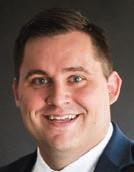


Because exceeding expectations and delivering more success has been our approach for over 60 years. INFO@MCCARTHYLEBIT.COM | (216) 696-1422 | WWW.MCCARTHYLEBIT.COM McCarthy Lebit offers big firm expertise with small firm responsiveness to ensure our clients achieve success on every deal –no matter the size. We Get Deals Done. www.mccarthylebit.com SPONSORED CONTENT S12 | January 16, 2023 Fasten your seatbelt
this
in
Motivated buyers, sellers drive current high-deal volume environment
Wardega
Jones
Sell your company, not your cybersecurity risks
Schauer
CORPORATE GROWTH & M&A
By Kip Irle
An iceberg’s size is deceiving if viewed only from above the water’s surface. Similarly, a carve-out acquisition’s stated value also can be misleading if signi cant costs and operational challenges are unrecognized.
Experienced risk and insurance advisers view deals through a unique lens. They surface risk-related issues, quantify their nancial and operational impacts, and arm acquirers with vital information to negotiate a fair sale price and understand their actual operating costs.
Take a closer look at some potential issues through an M&A risk management lens.



The carve-out’s risk pro le is different from the parent company’s.

A conglomerate might be known for investing in its people, processes and property. However, it might not invest in businesses it intends to sell.
For example, a global manufacturer decided to divest a plant. The buyer’s risk adviser discovered the company
had underinvested in the operation’s maintenance CapEx for years.
Equipment was old, poorly maintained and lacked safety controls. The plant’s experience modi cation rating (MOD) was above 1, meaning it experienced more claims than industry peers. Further, the workforce’s average age was 58, and the plant had higher medical claims than its peers.
When a carve-out’s risks are worse than those of its peers, it impacts the cost of and the buyer’s ability to obtain workers’ compensation insurance, product liability insurance, general liability insurance, employment practices liability insurance and employee bene ts. A risk adviser can quantify those impacts for the buyer.
The carve-out’s stand-alone operating costs may not be accurately represented.
Consider this. A large corporation had self-insured retentions for its workers’ compensation. When a claim came






in, they paid it. They didn’t report claims to the insurance company until they met the threshold. The quality of earnings report identified only a portion of the claims and premium running through the income statement, with much of the information coming from the seller’s accounting department.


The buyer’s risk adviser discovered the actual cost to insure the carve-out was underrepresented by 35%, or about $2.5 million. The buyer was paying a 10x multiple to secure the business. Armed with accurate insurance expense estimates, the acquirer reduced its offer by $22.5 million.
Accurately valuing a carve-out’s stand-alone “cost to insure” is critical. It can mean the difference between a profitable acquisition or an unprofitable deal. Management incentives may be impacted if pro forma operating costs vary significantly from the initial plan.
Viewing carve-out acquisitions through a risk management lens can reveal critical information for understanding the actual value and operating costs of a purchase target.
The carve-out transaction may contain hidden liabilities.

Sometimes untrained eyes don’t see signi cant issues. For example, a sale agreement required the buyer to assume nancial responsibility for insurance claims as of the sale date. The acquirer thought it was reasonable until a risk adviser explained they would be liable for any claims made as of the sale and any unresolved claims made before the sale.


Fully understanding the nancial rami cations, the buyer negotiated this requirement out of the deal. The seller had to establish an escrow account to cover potential liabilities.
Buyers must be aware of all sorts of transitional risks. For example, as part

of a large corporation, the carve-out likely provides robust health bene ts that the new entity may not be able to offer employees. The acquirer must determine how to transition and pay for the services until the next enrollment cycle while satisfying compliance requirements. There can be diseconomies of scale within the insurance and risk markets.
An eye for value




Viewing carve-out acquisitions through a risk management lens can reveal critical information for understanding the actual value and operating costs of a purchase target.
Kip Irle is senior vice president of transactional risk at Hylant. Contact him at 312-283-1339 or kip.irle@hylant.com.




 By Michael Southard
By Michael Southard
amily business succession is the process of transitioning administration or ownership — or both — of a family owned business.
Family succession planning is unique because it involves not only choosing a course of action to secure the future of a company, but also decision-making that can affect familial relationships and the futures of loyal employees.
For those ready to face the challenge of succession planning, here are ve key questions to consider.

1. When will a transition take place?
The answer to this question may include a date or set of circumstances under which the succession plan will be enacted. Desired retirement age, readiness of family members to take over the business, and current economic and market conditions should all be taken into consideration.
2. Who will take the reins?



Power struggles are distracting. Avoid them by identifying the next generation of leadership. Doing so will be much easier during good times than during a period of unexpected, unplanned-for transition.
3. What happens to employees?
A family business owner desiring to reward employees for contributions and loyalty should include details about those desires in a written succession plan document.
4. How will compensation change or continue?
Succession plans should address whether the retiring generation will remain






active within the business and, if so, how those participants will be compensated.

Compensation should also be addressed for anyone taking over, taking on new responsibilities or continuing with the company through the transition.
5. What is the contingency plan? Suppose transition is thrust upon a company sooner than the family imagined? What is the contingency for when succession comes early, or plans don’t pan out? If this seems like a plan within a plan, it is. Succession plans should not assume transitions will be ideal.

Other considerations


Sometimes your best succession planning could be to sell the rm to an outsider like a private equity business or family of ce. At times, this is the best option for maintaining the family legacy while ensuring nancial solvency. When considering this option, know the speci cs of the deal terms and type of funding, holding period, future of current employees and your level of involvement after transfer of ownership.
At Elvisridge Capital, our intention is to hold for the long-term, maintain current management and ownership involvement, and focus on revenue growth through focused attention and applied strategic resources.


Michael Southard is managing director at Elvisridge Capital, LLC. Contact him at 216-678-9900 or michael@ elvisridgecapital.com.

Business Succession Planning | Closely Held Business and Family O ce Practice Emerging Companies and Venture Capital | Employee Stock Ownership Plans (ESOPs) Mergers and Acquisitions | Public and Structured Finance CLEVELAND 216.781.1212 | COLUMBUS 614.246.2150 | walterhav.com EDC YOUR TRUSTED ADVISORS To assist with all your corporate legal needs January 16, 2023 | S13
carve-outs and costs through a risk management lens
Eyeing
5 questions every family-held succession plan should answer
F
CORPORATE GROWTH & M&A SPONSORED CONTENT
Irle Southard
2022 Year in Review Creating

Private equity rms can craft a compelling ESG story











 By Brad Kostka
By Brad Kostka

For the last decade, environmental, social, and governance (ESG) matters have come to the forefront of the nancial industry. However, truly integrating ESG into asset allocation decisions within private equity rms often has been the exception rather than the rule.
But that may be changing. With a greater investor focus on sustainability, social justice and corporate governance issues, many companies now realize the material risks ignoring these issues could pose to their nancial performance, operational resilience and reputation in the marketplace.


At the same time, ESG-focused investing continues to grow. ESG investments now make up 36% of private capital under management. Within the private equity sector, asset managers invested more than $1.82 trillion in ESG funds as of 2021, according to Preqin.


As ESG momentum steadily builds, it’s crucial for private equity rms to tell an accurate and compelling ESG story — one that focuses on value creation for investors and larger societal impact. Here’s why it’s so critical for private

equity rms to ne-tune their ESG messaging and how they can do it.











Why ESG now?






ESG has moved from a concern at the margins to a central consideration for many investors and limited partners.








 Kostka
Kostka
Recent joint research from the Institutional Limited Partners Association (ILPA) and Bain & Co. indicates the larger role ESG plays in structuring portfolios. About 70% of limited partner organizations Bain and ILPA surveyed said their organizations’ investment policies factored in ESG. These ESG investment policies affected 76% of private equity assets under management.





More leading private equity rms are publicly stating their ESG intentions and hiring ESG leaders. Blackstone now has a global head of ESG, while other rms have created new roles such as chief sustainability of cer. However, the industry still struggles with transparency around ESG, especially compared to public companies that have included ESG information in their lings for

www.copperruncap.com 614-888-1786 The Investment Bank for the Middle Market. Buy-Side + Sell-Side + Strategic Advisory Tenacious Dealmaking. Right Here in the Midwest. 1100 Superior Ave #1725, Cleveland, Ohio 44114 (216) 781-3233 CWIndustrials.com
CW Industrial Partners is a family-backed private equity firm focused exclusively on investing in lower-middle market businesses. Our leadership brings unique industry experience, operational best practices and access to our Industry Advisor Network™. Matt Lombardo Partner Andrew Foster Vice President John Corrigan Partner July 2022 acquired by May 2022 acquired by January 2022 acquired by Congratulations to John Corrigan, Andrew Foster, and Matt Lombardo on their promotions. January 2022 acquired by
Value Through Partnership
SPONSORED CONTENT S14 | January 16, 2023
several years. These challenges likely are a byproduct of inconsistent global standards around ESG. However, new Securities and Exchange Commission proposed regulations for climate-related disclosures and the EU’s Sustainable Finance Disclosure Regulation may lead to more visibility around ESG data.


As this landscape evolves, private equity rms must take actionable steps to give investors con dence in their ESG initiatives. Formulating a better, clear, compelling and transparent ESG story can help them build this bridge. Below are some strategies for developing your private equity rm’s ESG story.
Focus on value.
First, private equity rms need to consistently convey the message to limited partners and investors that funds can do well by doing good.
ESG isn’t solely about putting on a good public face. It can drive value creation and better performance. An ESG Book analysis of model portfolios even found that ESG-positive funds performed better globally, so there doesn’t have to be a con ict between positive returns and positive societal impact.
De ne ESG measurement.
Accurate tracking is crucial to make this value creation argument, so private equity rms must develop ESG tracking metrics, benchmarks and reporting mechanisms. Firms can look to frameworks from the Sustainability Accounting Standards Board and then further tailor their programs based on internal goals.
Establish an ESG communications strategy.

Next, private equity rms should integrate ESG data into limited partner and investor communications, whether via newsletters, quarterly reports or internal dashboards. Private equity rms also should embrace a multimedia approach and consider text-based thought leadership content, as well as video, datadriven graphics and presentations during virtual meetings to share their ESG story.
Be authentic
Authenticity is key to transparency. Greenwashing has become far too common. Outright deception is at play here, but inconsistent standards and different philosophies about how to achieve ESG within rms likely contributes more to this “faux sustainability.”
Firms need to be clear with investors and limited partners about their ESG investment criteria, how this criteria is integrated into the due diligence process, where their portfolio companies stand with ESG and how these companies plan to further integrate ESG to reduce their material risks.
One study by Broadridge found 3 out of 4 investors want information about ESG-related policies, and 48% of them want this information often. In particular, investors want information about regulatory compliance, board recruitment and overall diversity. Firms should keep these data points in mind as they develop their communications strategy. Further, they should continually collect feedback from investors about whether their communications approach is meeting their needs.
Building trust in ESG
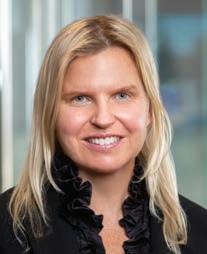

To build trust and credibility in their ESG programs, private equity rms must continuously educate and engage investors about those practices.
This all starts with doing the inside-out work to establish their ESG policies, tracking and reporting infrastructure and then developing a complementary communications strategy. Investors are more focused on purpose-driven investing, but that doesn’t mean they’rewilling to compromise returns. With a compelling ESG story, private equity rms can demonstrate to investors that ESG isn’t just about good PR — it’s vital for a better return on their capital.

Brad Kostka is president of Roop & Co. Contact him at 216-902-3800 or bkostka@roopco.com.

Want to sell your business? Here’s where to start
By Michael Makofsky
Owners looking to sell or exit their business should begin planning well in advance. The following are a few best practices that can lead to a successful transaction.
What’s it worth?

An owner needs to know the business’ value before trying to sell. That goes
beyond income, revenue, debts and expenses — it is understanding what the company is worth on the open market.
An owner may overestimate the value of their company, only to be disappointed with
lower offers from potential buyers. An owner should get a professional valuation from a quali ed adviser. There are many variables that go into a valuation so it may not be exact.
However, it provides an owner with a clearer view of the state of the business. With that frame of reference, an owner is more equipped to handle offers.
Dealmakers You Can Trust
Located in strategic cities nationwide, our trusted M&A advisers keep our clients protected in today’s everchanging and volatile climate. We take a creative, constructive approach to solve our clients’ toughest issues–and put them on solid ground.

Cleveland Jayne.Juvan@TuckerEllis.com
Arthur.Mertes@TuckerEllis.com
tuckerellis.com
Los Angeles
Kristen.Baracy@TuckerEllis.com
Jayne E. Juvan Chair, M&A and Securities & Capital Markets
Art Mertes Partner Chicago
Kristen Baracy Counsel
January 16, 2023 | S15
CORPORATE GROWTH & M&A SPONSORED CONTENT
Makofsky
Continued on next page
From previous page
Assemble your team.
Owners often try to sell their business by themselves. After all, they know their company better than anyone. However, an owner may not understand how to fairly value their company, how to market it, how to negotiate legal documents, what the tax implications may be or how to manage the proceeds. There are many complexities in an M&A transaction which, if not handled properly, can lead to unfortunate results. Further, an owner still needs to operate the business so that it remains attractive to a potential buyer. An owner should assemble a team of professionals who can guide them through the process. Experienced investment bankers, accountants, M&A attorneys and nancial advisers help an owner navigate their transaction, work through issues, and mitigate risks, all of which can lead to a successful transaction closing.

Understand your personal situation.
Selling a business will likely result in the largest liquidity event of an owner’s life. After debts are satis ed and taxes are paid, the owner will
Selling a business will likely result in the largest liquidity event of an owner’s life. After debts are satis ed and taxes are paid, the owner will need to live off the net proceeds for their remaining days.

need to live off the net proceeds for their remaining days. It is important to con rm there will be suf cient funds for an owner to maintain their lifestyle. If that will not be the case, an owner may need to adjust their plans to avoid an unwelcome situation after closing. It is also important for an owner to have a proper estate plan in place to account for the in ux of funds and make use of tax planning strategies.
Michael Makofsky is principal at McCarthy, Lebit, Crystal & Liffman Co., LPA. Contact him at 216-696-1422 or mdm@mccarthylebit.com.
GROWTH MARKETING FOR PRIVATE EQUITY
Looking to accelerate the growth of your portfolio companies? Need to tell a compelling story to investors? Or perhaps you require more qualified deal flow? We can help. For decades, Roop & Co. has generated top- and bottom-line results for private equity firms.
FUNDRAISING DEAL SOURCING PORTFOLIO COMPANY GROWTH LEARN MORE AT ROOPCO.COM/PE
Northern
Announces
SPONSORED CONTENT S16 | January 16, 2023
The Northern Ohio Chapter of the Turnaround Management Association congratulates Sally C. Barton, SVP at KeyBank, winner of the 2022 Lifetime Achievement Award.
TMA
Ohio Chapter
2022 Lifetime Achievement Award Winner!
We thank Sally for her leadership and the contributions she has made both in the turnaround industry and in our community.
Bringing
Time to restore integrity in business transactions
By Jayne E. Juvan and Christopher J. Hewitt
Times of crisis bring out either the good in people or the bad in people.
Multiple times during the Panic of 1907, J.P. Morgan was called upon to help avert disaster. In one particularly noteworthy episode, Morgan summoned the presidents of the largest New York City banks to raise $25 million in 10 minutes to save the New York Stock Exchange. Other than pledging what they could afford on a ledger with their bank’s name, none of this was documented.
Roll forward to the COVID-19 pandemic, and it seems very unlikely that this would happen today. Rather — whether it involves governance, commercial contracts or M&A transactions — a common theme we have seen emerge is parties trying to sidestep their duciary duties or contractual commitments. Perhaps the poster child for this mentality was Elon Musk’s attempt to submarine his Twitter acquisition. While ultimately unsuccessful, others have had better luck — one dated example is the way Ray Kroc pushed the McDonald brothers out of their eponymous business during his own time of personal crisis. (If you’re not aware of Kroc’s tactics, see The Founder {2016}).
Whatever the motivating factor — doing a bad deal, an uncontrolled
change in circumstances, using perceived leverage or general civil unrest that seems to absolve a lack of integrity — we have noticed an unfortunate rise in gamesmanship in business transactions of all types. Even more unfortunate has been the lack of supervision, or outright complacency or participation, by boards of directors in allowing this to happen.
Commercial transactions
Until very recently, rarely were we asked to look at acompany’s basic commercial contracts other than in diligence. Now, we are routinely called in to help our clients defend against attempts to terminate agreements early without cause, reset prices or slow pay (or refuse to pay) legitimate invoices.
To be fair, we also have seen some constructive, business-oriented executives advance solutions in good faith. These executives understand that good decisionmaking leads to long-term growth.
M&A transactions
One area in M&A transactions where there is rampant gamesmanship is the working capital true-up. Instead of making sure the
target business has the right level of working capital so that it can operate without the infusion of outside capital, too many view this as an opportunity to renegotiate purchase price. Similarly, we see some parties interpreting other components of purchase price either to renegotiate price or as a tactic to gain other contractual concessions on unrelated post-closing matters.
We also have seen a rise in unsubstantiated indemnity claims. Until recently, we rarely saw indemni cation claims because parties tended to let immaterial breaches go. Nowadays, there is too much of a concerted effort to nd any conceivable indemnity claim before the survival period for the representations expires.
Tone at the top
Too often, we see that some boards of directors are themselves pushing the boundaries. We have witnessed directors completely disregard the rules governing their conduct and who brazenly proceed as if the rules do not apply to them.

When operating at their best, directors are self-regulating. Working collectively, they help one another stay in compliance, placing the interests of the organization above their own personal interests. They encourage one another to be good stewards of the organization by knowing and following the rules, coming prepared to meetings and engaging in meaningful debate and discussion. Those who operate in good faith, desiring to demonstrate the utmost integrity, keep the duciary duties of care and loyalty at the center of everything they do in their of cial capacities.
It takes tremendous time, effort and good decision-making for an organization to reach its highest potential. While organizations may be able to sustain themselves for a short period of time under poor leadership, that luck always runs out. That’s why it is critical to take the utmost care in vetting directors for a track record of demonstrated integrity and to engage in ongoing training and education.
Conclusion
In 1923, following turbulence in the nancial markets stemming from World War I, the London Stock Exchange received its Coat of Arms from the College of Arms prominently displaying the motto “dictum meum pactum,” which translated from Latin to English means “my word is my bond.” It is well-known that, at its core, the phrase means that you can believe me when I say that I’m going to do something. Fear not, you can trust me to perform as promised.
Maybe it is asking too much from many of today’s market participants to act with the altruism demonstrated by business leaders during the Panic of 1907. And it’s probably naïve to think people can act without the rigor of a contract guiding their actions. But, hopefully, it’s not asking too much to have them honor their commitments. And hopefully it is also not asking too much for boards of directors to set an appropriate tone at the top for these matters.
Jayne Juvan is a co-chair of the M&A Group and chair of Securities & Capital Markets at Tucker Ellis. Contact her at jayne.juvan@tuckerellis.com.

Christopher Hewitt is a co-chair of the M&A Group and partner at Tucker Ellis. Contact him at christopher.hewitt@ tuckerellis.com.
 By Ted Motheral
By Ted Motheral
As we leap into a new year, many M&A professionals believe 2023 will be an uncertain market due to interest rate increases and continuing recession concerns. However, there are certain industries that are poised to outperform the market in the coming year. Based upon research and trends, those industries are nancial services and health care and pharmaceuticals. In addition, there will be a substantial advantage to private equity and institutional buyers who do not heavily rely on debt nancing (and rely on the “dry powder” in equity capital) available to them to take advantage of buying opportunities in these industries.
Financial services (namely wealth management, registered investment advisers and independent broker dealers) has seen a surge in roll-up acquisitions and minority private equity investments in the past few years. Although market volatility has seen a decrease in assets under management for a lot of the sell-side targets in the industry, the opportunity to invest in or acquire sophisticated nancial advisory rms (and the historical return on investment over the past few years) remains incredibly attractive to institutional and private equity buyers, as more of these buyers are entering the space.
Couple this with the fact that the majority of this industry is in the baby boomer generation and looking for a sound exit or succession plan, and you have the perfect recipe for continued growth (of volume and
deal size) in the M&A market.
With a recession looming and in ation still very much in the picture, experts always point to those industries that are “recession proof.” Health care and pharmaceuticals always seem to fall into that category. The demand for these industries is always constant, especially with the older generation. Experts believe revenues will not see a material change as long as demand holds. Therefore, these M&A market industries will remain constant or even outperform other industries that will more than likely see a substantial drop in deal volume in 2023.
Lastly, outside of industries to watch for, the buyer market will be interesting to watch as well, as those institutional and private equity buyers that usually rely on a debt-to-equity mix for their purchases may look to solely put their equity capital to work to avoid the increase in interest rates. If interest rates continue to rise, then this will put those buyers who have the capital to deploy at a distinct advantage in the market.
Ted Motheral is partner and section head of the Business Services Group at Walter Haver eld. He can be reached at 216-9282967 or at tmotheral@walterhav.com.
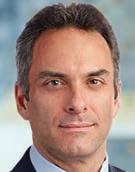
January 16, 2023 | S17
Elvisridge Capital is a valuable and trusted partner. In addition to financial capital,
provide shared resources
synergies
each company
portfolio,
they
and
to
in their
which has been instrumental in accelerating the growth of our business.”
“ EXIT STRATEGY SOLUTIONS... WITHOUT THE USUAL OBSTACLES HOW WE HELP We are a resource for business owners looking to retire or to take some equity “off the table” by being a partner who can help the business continue to grow. We seek control buyouts in partnership with management teams. INVESTMENT CRITERIA EBITDA Range: $200,000 to $3 million Holding period: Long Term Preferred Sectors: Sportfishing Products and Landscape Products CONTACT DETAILS 25201 Chagrin Blvd., Suite 300 Beachwood, OH 44122 601 S. Fremont Avenue Tampa, FL 33606 Phone: 216-678-9900 Email: info@elvisridgecapital.com Website: elvisridgecapital.com
— Lee Burch, Co-Founder, BBS Tech/FINS Fishing
an end to gamesmanship
Stalwart industries expected to outperform M&A market in 2023
Juvan
Hewitt
SPONSORED CONTENT
Motheral
Northeast Ohio’s top deal makers to be honored
ACG Cleveland, Northeast Ohio’s leading organization for merger and acquisition and corporate growth professionals, will recognize the winners of its 26th Annual Deal Maker Awards. The event is scheduled for 5:30 p.m. to 8:30 p.m. on Jan. 19 at Hilton Cleveland Downtown.
The Deal Maker Awards are a tribute to Northeast Ohio’s leading corporate deal makers for their accomplishments in using acquisitions, divestitures, nancings and other transactions to fuel sustainable growth. Here are this year’s winners:
Buyout Fund of the Year: Align Capital Partners
Align Capital Partners is a growth-oriented private equity rm that partners with business owners and management teams to create shared success. ACP manages $1.5 billion in committed capital with investment teams in Cleveland and Dallas. 2022 was the rm’s most active year yet, closing its third fund and completing over 25 transactions totaling greater than $1.8 billion of enterprise value.

Family Company Deal Maker of the Year: Prince & Izant
Prince & Izant provides brazing alloys and metal-joining products to the automotive, cutting tools, oil and gas exploration, HVACR and electrical manufacturing industries.

Prince & Izant, founded and headquartered in Cleveland, had been a family owned business for nearly 100 years prior to its recapitalization with Industrial Growth Partners in 2022.
The company has proudly served industrial manufacturing companies with brazing products since 1927.
Private Company Deal Maker of the Year: Universal Windows Direct & Great Day Improvements

Bedford Heights-based Universal Windows is one of the nation’s largest
and fastest growing distributors and installers of windows, doors and other home improvement products serving the custom repair and remodel market.
Macedonia-based Great Day Improvements LLC is a vertically integrated, direct-to-consumer provider of branded premium building products, including Patio Enclosures brand sunrooms, Champion brand windows, Stanek brand windows and patio doors, Apex Energy Solutions energy-ef cient windows and doors and Hartshorn Custom Contracting pool enclosures.
Universal Windows Direct completed its company sale to Great Day in November 2021. Following the combination of UWD and Great Day, the combined team was able to acquire Champion Windows in December 2021 to quickly scale to a national powerhouse, ranking No. 4 on the Quali ed Remodeler top 500 list in 2022.

Public Company Deal Maker of the Year: Avient Corp.

Avient Corp. was originally established as PolyOne Corp. in 2000 through the consolidation of two historic companies in the materials industry with a mission to become the world’s premier provider of specialized and sustainable solutions.
The company has a history of transformational acquisitions throughout its
20-year history. In 2022, Avient had another banner year with the acquisition of DSM Protective Materials (DPM) and the sale of Avient Distribution, transforming the company into a pure play specialty formulator.
Women in Transactions Award: Rebecca White, EVP, Strategy & Corporate Development, The Kenan Advantage Group
Leading strategy and corporate development, Rebecca oversees both organic and inorganic growth initiatives for The Kenan Advantage Group, which is the leading bulk liquid trucking and logistics company in North America. Since joining KAG in 2017, Rebecca has led the entire M&A process, sourcing, evaluating, executing and integrating acquisitions that have extended the company’s geographic presence and enhanced its service capabilities. During this time, Rebecca has overseen more than 20 transactions, representing more than $375 million in transaction value and contributing revenue growth of nearly 25%. Rebecca has assumed a leadership role in KAG’s strategic planning efforts. Rebecca initiated, developed and manages KAG’s annual Leadership Summit. She also has developed and manages KAG’s ESG policy and reporting. Through 14 years of investment banking, Rebecca closed more than 35 sell-side M&A, divestiture, bankruptcy, restructuring and capital raising transactions, including cross border transactions, representing more than $1.8 billion of transaction value.
2022-23 Of cers and Board of Directors
EXECUTIVE OFFICERS
President
Tricia Balser, CIBC
Past President Cheryl Strom, The Riverside Company
President Elect Jay Moroscak, Aon
Governance Charles Aquino, Western Reserve Partners
Treasurer Mark Heinrich, Plante & Moran
Executive Vice President — Annual Events Pillar Jonathan Ives, SCG Partners
Executive Vice President — Branding Pillar Matthew Roberts, Dorman Products
Executive Vice President — Innovation Pillar Beth Haas, Cyprium Partners
Executive Vice President — Programming Pillar Thomas Libeg, Grant Thornton LLP
Executive Vice President — Membership Pillar Bryan Fialkowski, JP Morgan Chase
BOARD OF DIRECTORS
John Allotta, Baker
Robert Chef ns, CIBC Mike Cottrill, NgageContent
J.R. Doolos, KeyBanc Capital Markets
David Fechter, Action Management Services
Michael Ferkovic, Sunvera Group
Sarita Gavhane, Edgewater Capital Partners
Joseph Hatina, Jones Day
Nicholas House, Vorys, Sater, Seymour and Pease LLP
Margaret Jordan, KIKO
Kathryn Kelly, Deloitte & Touche
Matthew Kolman, Deloitte & Touche LLP
Mindy Marsden, Bober, Markey, Fedorovich and Co.
Thorne Matteson, PricewaterhouseCoopers
Martin McCormick, FNB Mezzanine Ryan McGovern, Star Mountain Capital
Corrie Menary, Kirtland Capital Partners
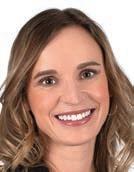
Katie Noggle, Align Capital Partners Jim Rice, Ernst & Young LLP
Robert Ross, Benesch, Friedlander, Coplan & Aronoff LLP
Larissa Rozycki, Harris Williams
Thomas Welsh, Calfee, Halter & Griswold LLP
SPONSORED CONTENT S18 | January 16, 2023 CORPORATE GROWTH & M&A
DATE EVENT LOCATION Jan. 19 ACG Cleveland presents the 26th Annual Deal Maker Awards Hilton Cleveland Downtown Feb. 2 ACG Cleveland White Elephant 2023: Groundhog Day Edition Collision Bend Brewing Co. Feb. 28 Wine Tasting Social Event TBD March 16 YACG Cleveland Winter Social — March Madness Wild Eagle Saloon Downtown March 23 Fireside Chat with ACG Cleveland Deal Maker Winner Cliffs-Cleveland The Ritz-Carlton April 20 ACG Cleveland Lunch Panel: Recruiting & Retention The Union Club May 18 ACG Cleveland Networking Event: Growth on Irishtown Bend with Tom McNair Merwin’s Wharf June 27 ACG Cleveland and TMA Northern Ohio Joint Event: Summer Social at The Shoreby Club 2023 The Shoreby Club 2023 ACG EVENTS CALENDAR
White
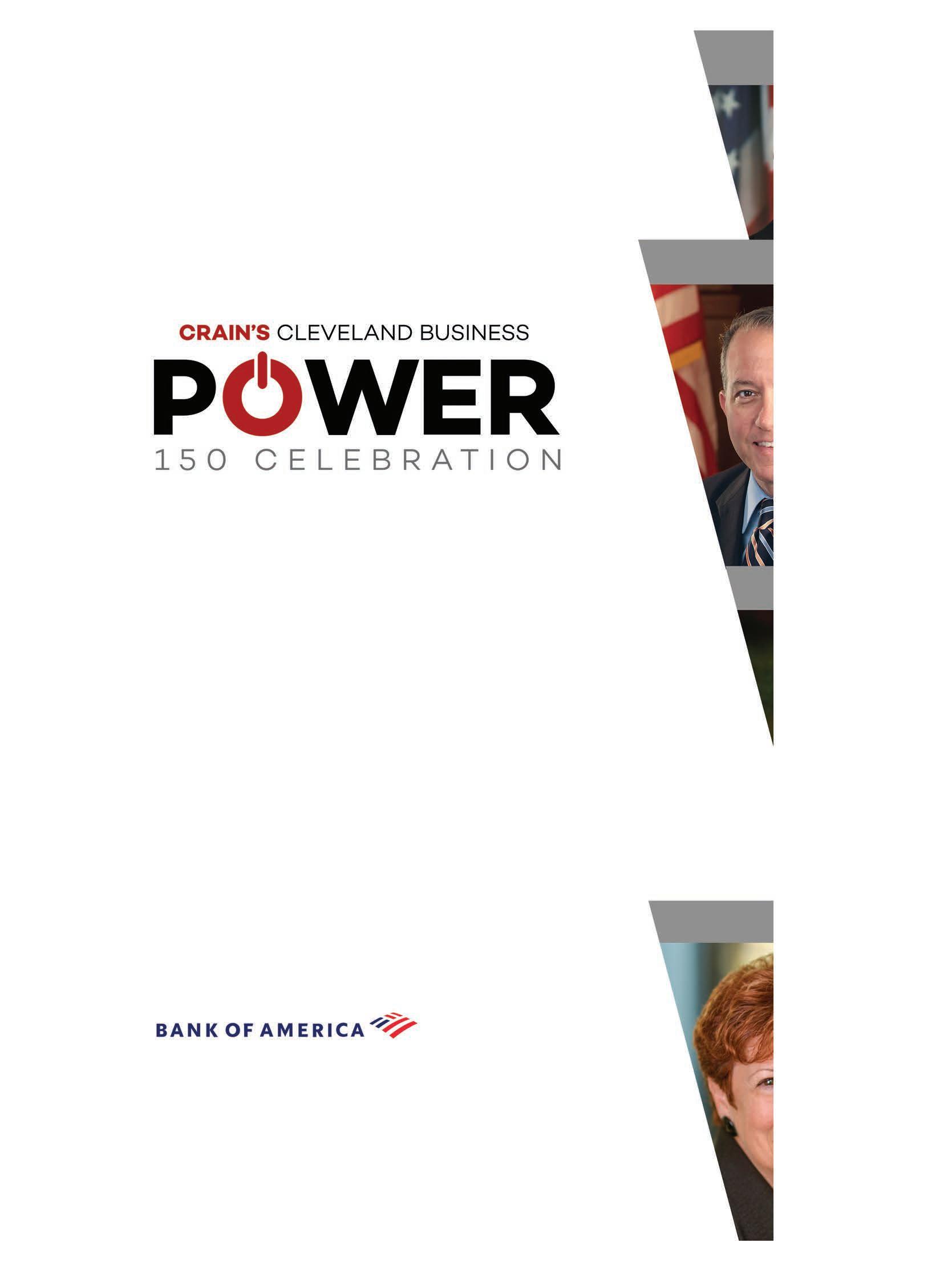

NUMBER OF APPROVED LOANS FISCAL 2022 1-YEAR CHANGE JOBS SUPPORTED 1-YEAR CHANGE 1
HUNTINGTON NATIONAL BANK Columbus
KEYBANKNA Cleveland
VALUE OF APPROVED LOANS FISCAL 2022 1-YEAR CHANGE
$183,575,200 3.7% 1,440 32.6% 6,327 0.3%
$41,593,100 85.4% 93 36.8% 697 65.6%
FIRST COMMONWEALTH BANK Indiana, Pa. $28,327,400 173.4% 23 43.8% 645 90.8%
GBANK Las Vegas $24,491,000 7 76
PREMIER BANK Youngstown
$19,473,400 -6.5% 22 -12.0% 311 -23.8%
CELTIC BANKCORP. Salt Lake City $18,146,600 49.9% 8 33.3% 149 181.1%
LIVE OAK BANKINGCO. Wilmington, N.C.
$13,856,000 -59.6% 12 -42.9% 105 -68.6%
TOTAL LOAN/ SBAGUARANTEED AMOUNT (MILLIONS)NAICS CATEGORY
LENDER/ LOAN TYPE/ CERTIFIED DEVELOPMENT COMPANY (504 LOANS ONLY) 2 1
LEA REAL ESTATE HOLDINGSLLC (LAKE ERIE ARMS INDOOR SHOOTING COMPLEX) 9572 Milan Road, Milan
$11.63 $4.87 Sporting and recreational goods and supplies merchant wholesalers
First National Bank 504 Growth Capital Corp.
WEST 117 DEVELOPMENT FIELDHOUSELLC 1384 Hird Ave., Lakewood
$8.79 $3.68 All other amusement and recreation industries
Truist Bank 504 Mentor Economic Assistance Corp. 3
OMKARA HOSPITALITYLTD. (HAMPTON INN & SUITES) 880 Arlington Ridge E., Akron
SIX STAR HOSPITALITY GROUPLLC (HOLIDAY INN EXPRESS) 5555 Cerni Place, Austintown
$5.00 $3.75 Hotels (except casino hotels) and motels
Farmers State Bank of Alto Pass, Illinois 7A 4
$4.98 $3.74 Hotels (except casino hotels) and motels GBank 7A
NEWTEK SMALL BUSINESS FINANCEINC. Lake Success, N.Y.
$12,102,000 16.7% 14 55.6% 155 -56.9% 9
CFBANKNA Worthington $11,322,000 96.9% 7 75.0% 104 395.2% 10
FIRST WESTERN SBLCINC. Dallas $8,295,000 21.5% 3 -25.0% 45 21.6% 11
HOME LOAN INVESTMENT BANKFSB Warwick, R.I.
$7,220,000 153.3% 3 200.0% 33 135.7% 12
WESTFIELD BANKFSB West eld Center $6,348,000 251.0% 6 20.0% 172 182.0% 13
UNITED MIDWEST SAVINGS BANKNA De Gra $6,319,000 134.2% 9 -30.8% 68 19.3% 14
NORTHWEST BANK Warren, Pa. $5,343,900 236.6% 13 62.5% 73 102.8% 15
HOMETRUST BANK Asheville, N.C. $5,333,000 -24.0% 2 -50.0% 49 -49.0% 16
BAYFIRST NATIONAL BANK Saint Petersburg, Fla. $5,311,000 7 32 17
READYCAP LENDINGLLC Berkeley Heights, N.J. $5,016,500 -17.7% 7 40.0% 163 69.8% 18
FARMERS STATE BANK OF ALTO PASS, ILLINOIS Alto Pass, Ill. $5,000,000 1 16 18
WRIGHT PATT CUINC. Beavercreek $5,000,000 1 45 20
CIBC BANKUSA Chicago $4,750,400 211.4% 6 100.0% 278 175.3% 21
FIRST CHATHAM BANK Savannah, Ga. $4,727,000 2 42 22 PEOPLES BANK Marietta $4,605,700 -63.6% 6 -72.7% 94 -84.4%
UNITED COMMUNITY BANK Blairsville, Ga. $3,840,000 997.1% 3 200.0% 33 65.0% 24 CITIZENS BANKNA Providence, R.I. $3,785,000 53.7% 4 -33.3% 54 125.0% 25 U.S. BANK Minneapolis $3,322,200 -43.7% 38 81.0% 159 55.9%
STARS HOSPITALITY GROUPLLC (CANDLEWOOD SUITES) 5575 Cerni Place, Austintown
$4.90 $2.05 Hotels (except casino hotels) and motels Hometown Bank 504 Cascade Capital Corp.
$4.98 $3.73 Hotels (except casino hotels) and motels GBank 7A 6 FRANCO HOLDINGSLLC 8001 Moving Way, Mentor $4.98 $2.23 Used household and o ce goods moving CNB Bank 504 Cascade Capital Corp. 7 OHM DEVELOPMENTLLC (HOLIDAY INN EXPRESS) 1215 Sanctuary View Drive, Kent
SLIKER ROAD ENTERPRISESLLC (CLEARSONIC MANUFACTURING) 1023 and 1025 Evans Ave., Akron
CONNMACKINC. (THE RESERVE AT STONE CREEK) 7800 Wales Ave. N.W., North Canton
$4.67 $3.50 All other miscellaneous manufacturing The Huntington National Bank 7A
$4.52 $3.39 Caterers CFBank NA 7A
AVON BREWINGCO. 36383 Detroit Road, Avon $4.48 $3.36 Full-service restaurantsHomeTrust Bank 7A
VALENSIL HOLDINGSLLC 33007 Pin Oak Parkway, Avon Lake $4.42 $2.00 All other basic organic chemical manufacturing Buckeye Community Bank 504 Growth Capital Corp.
RIVER TRAIL STORAGELLC 24129 Sprague Road, Columbia Station $4.23 $3.17 Lessors of miniwarehouses and self-storage units KeyBank NA 7A
$4.05 $1.64 Car washes The Croghan Colonial Bank 504 Growth Capital Corp.
MICKUNASLLC (MAJESTIC TRAILER & HITCH) 1750 E. Waterloo Road, Akron
$3.87 $2.90 Automobile and other motor vehicle merchant wholesalers The Huntington National Bank 7A
JPKEP PROPERTIESLLC (PRIMROSE SCHOOL) 1200 W. Royalton Road, Broadview Heights $3.83 $1.73
day care servicesFifth Third Bank 504 Growth Capital Corp.
34 | CRAIN’S CLEVELAND BUSINESS | J ANUAR Y 16, 2023
RANK LENDER HQ LOCATION
2
3
4
5
6
7
8
27
30 FIRST BANK Southern Pines, N.C. $2,762,800 2 66 31 GROWTH CAPITALCORP. Cleveland $2,760,000 61.3% 18 125.0% 120 55.8% 32 FIRST FEDERAL LAKEWOOD Lakewood $2,737,600 94.3% 7 75.0% 86 -32.3% 33 STONE BANK Mountain View, Ark. $2,520,000 1 5 34 BYLINE BANK Chicago $2,515,000 21.8% 3
47 56.7% SBA LENDERS CRAIN'S LIST | Ranked by dollar value of Northern Ohio 7(a) loans approved in FY 2022
include
loans made throughout the
23
26 BOKFNA Tulsa, Okla. $3,089,200 3 37
CONSUMERS NATIONAL BANK Minerva $3,003,100 -82.1% 17 -60.5% 185 -79.7% 28 PNC BANK Pittsburgh $2,920,400 201.1% 19 137.5% 88 225.9% 29 HARVEST SMALL BUSINESS FINANCELLC Laguna Hills, Calif. $2,901,000 134.8% 4 100.0% 47 -16.1%
0.0%
SOURCE:U.S.SmallBusinessAdministration |Numbersareforthe12monthsendingSept.30,2022,and
7(a)
28 Northern Ohio counties in the SBA's Cleveland District. Get 91 lenders. Become a Data Member: CrainsCleveland.com/data RANK BORROWER (DBA OR OPERATION AT LISTED ADDRESS) 1
2
5
8
9
10
11
12
13
14
15
16
Child
17
Cookie
18 NBWINC.
All
19 APPLIED METALS TECHNOLOGIES 1040 Valley Belt Road, Brooklyn Heights $3.68 $2.76 Metal coating, engraving (except jewelry and silverware), and allied services to manufacturers First Commonwealth Bank 7A 20 THE CLE HOLDING COMPANYLLC (CRAFTED SURFACE AND STONE) 16625 Wren Road, Chagrin Falls $3.60 $2.70 Cut stone and stone product manufacturing KeyBank NA 7A 21 BLACKMORE REALTYLLC (JOINING METALS) 3314 Blackmore Road, Perry $3.38 $2.54 All other miscellaneous fabricated metal product manufacturing The Huntington National Bank 7A 22 MONTROSE HOSPITALITYLLC (BAYMONT INN & SUITES) 130 Montrose West Ave., Copley $3.33 $2.50 Hotels (except casino hotels) and motels GBank 7A 23 ALYSHA & COMPANYLLC (HOLIDAY INN EXPRESS) 2341 W. State St., Alliance $3.32 $2.49 Hotels (except casino hotels) and motels Home Loan Investment Bank FSB 7A 24 BERRAN INDUSTRIAL GROUPINC. 570 Wolf Ledges Parkway, Akron $3.30 $2.47 All other miscellaneous manufacturing The Huntington National Bank 7A
LOANS CRAIN'S LIST | Ranked by dollar value of loans approved in scal year 2022
|Dataspansthefederal
NELSON LEGACY PROPERTIESLLC 6935 Ridge Road, Sharon Township $4.10 $1.85 Unsupported plastics bag manufacturing Dollar Bank FSB 504 Growth Capital Corp. includesloansmadein15NortheastOhiocounties:Ashland,Ashtabula,Cuyahoga,Erie,Geauga,Huron,Lake,Lorain,
MENTOR AUTO REAL ESTATE PROPERTIESLLC (RAINFOREST CAR WASH) 7350 Palisades Parkway, Mentor Get 136 companies. Become a Data
BLOOMINGTON PROPERTIESLLC (BRAND CASTLE LLC) 5111 Richmond Road, Bedford Heights $3.78 $1.69
and cracker manufacturing Peoples Bank 504 Cascade Capital Corp.
9000 Brookpark Road, Brooklyn $3.71 $1.66
other specialty trade contractors JPMorgan Chase Bank 504 Growth Capital Corp.
SBA
SOURCE:U.S.SmallBusinessAdministration
scalyearendingonSept.302022.List
Mahoning,Medina,Portage,Stark,Summit,TrumbullandWayne.NOTES: 1. Addressmayrepresenttheborrower'so ce ortheprojectlocation.Addressesmayconsistofvacantlandorfacilitiesunderconstruction. 2. The7(a)loanprogramis theSBA'sprimarybusinessloanprogram.504loansprovide nancingformajor xedassetsonlyandareavailablethrough local SBA-certi ed nonpro ts called Certi ed Development Companies.
Member: CrainsCleveland.com/data
Shooting complex being built with biggest local SBA loan
CHUCK SODER
ey call it a “guntry club.”
A 94,000-square-foot indoor shooting complex is being built near Sandusky with the help of the loan at the top of the Crain’s SBA Loans list.

e founders of Lake Erie Arms say their goal is to open one of the largest and nicest indoor shooting complexes in the nation this summer.
And it won’t just be for shooting, according to co-founders Brent McConnell and Jim West.
Sure, it’ll cater to gun enthusiasts, with standard 25-yard ranges and more rare 100-yard ranges, indoor clay shooting, a gun shop, training sessions and competitions.
But it also aims to be a social club, with a restaurant, a spa, meeting rooms and a calendar of activities, West said.
“What boating is to yacht clubs and golf is to country clubs, we are to shooting sports,” he said.
ey are well on their way. e front portion of the building at 9572 Milan Road has been erected and is in the nishing phase, and the shooting ranges are being built, McConnell said.
Lake Erie Arms is selling prepaid memberships and is 25% of the way toward hitting its goal, West said, though he declined to disclose the goal.
ey aim to recruit members from the region, but they also expect to draw visitors from other states and be part of the broader Sandusky tourism ecosystem, McConnell said. e facility will be highly visible, located halfway between the Kalahari Resort & Convention Center and an Ohio
RALLY HOUSE
From Page 1
like, ‘I can’t believe things aren’t clearanced!’ And then they get in the playo s and people are amped up again.
“It’s de nitely di erent on the day after one of those teams wins.”
Northeast Ohio’s winter of (football) discontent aside, business has been booming in recent years for Lenexa, Kansas-based Rally House, both in Ohio and elsewhere. e family-owned specialty retailer opened 30 stores last year and has plans for 40 more in 2023, bringing its total to more than 140 in 14 states. Each store is tailored to its location, which means lots of Browns, Cavs, Guardians and Buckeye gear in its Cleveland-area stores, along with Ohio’s Division I colleges (Cleveland State, Akron, Kent State, etc.) and whatever else fans ask for.
“When you look through the Cleveland stores, we’ve got 62 di erent teams with merchandise in those,” said Aaron Johnson, Rally House’s VP of marketing strategy. “Of course you’re going to have the Browns and Cavs and Guardians, and no matter where you are in Ohio, you have to have the Buckeyes. But we get down to the levels of John Carroll University. Or the Akron RubberDucks and other minor league teams.
“ at’s why we’re able to expand
Turnpike exit.
“We absolutely believe this is going to be a destination attraction,” McConnell said.
So does Abbey Bemis, executive director of the Erie County Economic Development Corp.
“ ere’s nothing like it in the rest of the state,” she said.
It’s a big leap for Lake Erie Arms. The company currently operates a 1,200-square-foot gun shop and outdoor training center serving civilians and law enforcement. McConnell, a former Huron police officer, said he was encouraged by a client to consider building an indoor shooting facility.
Since then they’ve visited more than 20 indoor facilities across the nation — most of which they hit during a whirlwind 4,000-mile RV road trip.
ey’ve also brought on more partners to help nance what they estimate will be a $13.4 million project.
the way we are. We think we have the depth and breadth of local sports teams, and the local ware, that no one else has. You have to go to the speci c sites for those teams, but we’re doing it for all the teams, which is fun.”
Rally House opened its rst Northeast Ohio location in 2016, in Parma, and quickly added stores in Macedonia and Fairview Park. It now has 25 Ohio stores, including nine in Northeast Ohio: the downtown Caxton Building, Beachwood, Crocker Park, Fairlawn, Strongsville and North Canton.
e 10th store will open this year in North Olmsted.
“Our tagline is ‘Local Stu ,’” Johnson said. “I’ve met people who don’t even realize we’re in other states, because it’s all about where they live.”
Here are three things to know about Rally House, which boosted the headcount at its corporate o ce by 20% in 2022, per the Kansas City Business Journal, and is poised for major growth over the next decade:
Most of its expansion has come in the last 15 years
In the summer of 1989, Mabel “Peg” Liebert started “Mabel’s Kitchen,” a catalog featuring Kansas-related apparel, gifts and merchandise. As it grew, the Liebert family changed the name to “Kansas Sampler.” It
One of them, of course, is the U.S. Small Business Administration. Lake Erie Arms in fall 2021 was approved to received a $4.87 million loan through the SBA’s 504 program, which funds xed asset projects. at program requires companies to raise matching capital from a bank. So in addition to that money — which was awarded by Growth Capital Corp., a nonpro t SBA partner in Cleveland — Lake Erie Arms also received a $6.76 million loan from First National Bank of Bellevue.
e company brought on 10 additional partners to help fund the rest. All 12 partners are local, McConnell said.
e SBA loan is the largest out of 136 awarded to companies in the 15 county Northeast Ohio area during the federal government’s 2022 scal year, which ended in September. To see them all, check out the full Excel version of the Crain’s SBA Loans list, which is available to Crain’s Data Members.
changed to “Rally House” in 2008, when the company had just ve stores but ambitious plans to expand nationally.
Rally House is now in eight Midwestern states (Illinois, Indiana, Iowa, Kansas, Michigan, Missouri, Nebraska and Ohio) as well as the neighboring states of Kentucky, New Jersey, Oklahoma, Pennsylvania, Texas and West Virginia.
“We’re just seeing where the opportunities are and we jump into them,” Johnson said of future expansion. “Our customer is a sports fan.
ey’re everywhere, in every demographic and every economic background. So the opportunities for us are really endless.”
Small footprint = good locations
e North Canton location, which opened the day before Black Friday in 2022, is just 4,850 square feet, which isn’t unusual. Rally House took over a former Justice location in Belden Park Crossings, directly next to Target. It’s a prime spot, directly across the street from Belden Village Mall.
Because Rally House doesn’t need a huge footprint, it can rent a premium spot for a reasonable price.
“ at’s very typical,” Johnson said of Canton’s size. “We’ll be in some malls, and we’ll also have some that
LGBTQ-friendly Fieldhouse ‘pulling in a lot of people’
CHUCK SODER
On New Year’s Eve, the Fieldhouse at Studio West 117 hosted its own kind of ball drop — one that commemorated a piece of Cleveland LGBTQ history.
Just two months after its grand opening, the LGBTQ-friendly dining and recreation center on Hird Avenue in Lakewood marked midnight by revealing the installation of a disco ball from the former Bounce Nightclub, a prominent LGBTQ bar that closed in 2017. at moment was made possible partly because of the second largest loan on a Crain’s list ranking the largest local SBA loans of 2022. e team behind the Fieldhouse received a $3.7 million loan through the U.S. Small Business Administration’s 504 program, which funds xed asset projects. at money, along with a matching $5.1 million loan from Truist Bank, formed the bulk of the nancing for the project, which cost about $13 million, according to Daniel Budish. He and Betsy Figgie are co-developers on the broader Studio West 117 project, which aims to turn several nearby properties into a neighborhood catering to the LGBTQ community.
ment,” she said.
January programming includes pickleball leagues and classes, tness classes, drag shows, a cabaret night, painting classes and more. It’s also been booking parties, weddings and conferences.
Jenkins said the Fieldhouse has been “pulling in a lot of people” and is a “good starting point” for the broader Studio West 117 project.
e Fieldhouse was phase I. Now the team is doing brown eld remediation and selective demolition at two sites just a few steps south of the Fieldhouse: the former Phantasy Entertainment Complex on Detroit Avenue and a former NTB tire and service center
—Margaret Harper Jenkins, public relations and media manager for Studio West 117
on the other side of Detroit. e Phantasy will be renovated to include multiple entertainment venues, as well as space for small businesses. e NTB site will include roughly a hundred apartments in its most recent iteration, as well as other uses, Budish said.
Other funding included a smaller loan through the SBA’s 7a loan program, tax-increment nancing and developer equity. e Fieldhouse includes a gymnasium and three restaurants, all of which are open to everyone but cater to the LGBTQ community, said Margaret Harper Jenkins, public relations and media manager for Studio West 117.
“ is is a space where you can genuinely be yourself with no judg-
are superstores or collegiate superstores. So if you were to go to Columbus, it would be three times the size and it would be predominantly Ohio State Buckeyes. Same in Ann Arbor. But a lot of them are like the store in Canton.”
Rally House stu s a lot of merchandise in its stores. Shoppers won’t necessarily feel like they’re sitting in Blossom lawn seats, but if you’re shopping for a couple of Guardians onesies for your twins, you might want to leave the side-byside stroller at home.
“Customers are telling us ‘We want more,’” Johnson said. “Well, there’s only so much merchandise you can put into one location. You might even argue some locations are a little overpacked. But it allows us to provide a lot of options.”
The stores o er unique items
Rally House sells a lot of traditional items such as hats, hoodies and jerseys from big brands like Nike, Mitchell and Ness, Antigua and 47. But it also has throwback jerseys — a LeBron James jersey from his rst stint with the Cavs, say, or a 1990s-era Shawn Kemp Cavs jersey — and fun Cleveland-esque T-shirts with “Wild ing” Ricky Vaughn or ballpark mustard. ( e North Canton store event had a Cuyahoga Valley Nation-
Studio West 117 has pulled together most of the nancing for the Phantasy portion of the project and expects to ll in the gaps this spring, Budish said. In December the team missed out on state tax credits for transformational projects for the overall project.
ey’re “currently strategizing about another submission in 2023 and/or replacement funding,” Budish noted.
Chuck Soder: csoder@crain.com, (216) 771-5374, @ChuckSoder
al Park T-shirt.) Customers will also nd lanyards, stickers, license plate covers, shot glasses, mugs, tumblers and more.
Sadly, it even has Steelers merchandise.
“It’s moving,” Sulzener said, grinning. “I’m a Browns fan, but it’s a good decision to have Steelers product here.”
Rally House also sells a lot of merchandise online, but it’s leaning into the brick-and-mortar spaces, with CEO Aaron Liebert telling the Kansas City Business Journal that the death of retail has been greatly exaggerated.
“We think philosophically if there’s a death of retail, it’s not because of e-commerce,” he said. “It’s for lack of selection and inventory.”
Because sports apparel sales are so dependent on success, there are always going to be slow days like Monday. But when the wins come, fans want to buy team merchandise immediately.
e more Rally House expands, the better the chances they’ll be in a winning market every day, Johnson said.
“ at’s the fun part,” Johnson said. “As we grow into more states and more cities, we’ll have that many more opportunities to reach fans.”
Joe Scalzo: joe.scalzo@crain.com, (216) 771-5256, @JoeScalzo01
JANUARY 16, 2023 | C RA IN’S CLEVEL AN D B U SI N ESS | 35 LIST ANALYSIS
Construction crews work on the front portion of the new Lake Erie Arms Indoor Shooting Complex in this Dec. 16 photo. | LAKE ERIE ARMS
“THIS IS A SPACE WHERE YOU CAN GENUINELY BE YOURSELF WITH NO JUDGMENT.”
they’re preparing to take much of their production in house. On Monday, Jan. 9, International Food Solutions won a nearly $9.6 million grant from the U.S. Department of Agriculture to help nance the development of a poultry-processing facility in Cleveland’s Central neighborhood.
That money is flowing from a $150 million federal program meant to boost competition in an industry dominated by four big conglomerates. The government is trying to bolster smaller producers, with the goal of supporting farmers and ranchers and reducing prices for consumers.
The grant is a linchpin for a roughly $80 million project at East 55th Street and Central Avenue, in Cleveland’s poorest neighborhood.
International Food Solutions plans to renovate and expand a blighted building, once occupied by Goodwill Industries of Greater Cleveland, as a new plant.
The facility will process more than 60 million pounds of meat each year, cooking chicken parts for nuggets, strips and other meal components. International Food Solutions expects to employ 227 people in the building by the end of 2025, at an average wage of $22.75 an hour. Workers will receive health care and child care subsidies.
The median household income in the Central neighborhood is about $10,500. Seven out of 10 residents — and 81% of children in the area — live below the poverty line.
“Most of these facilities get located in rural communities. When we brought this project up to USDA, they found it intriguing because we’re repurposing underused land in the heart of an urban environment,” Yee said.
“We called our project ‘Project Renaissance,’ ” he added, “because it is going to remake the community in the middle of a food desert.”
A California native, Yee moved to Northeast Ohio in 1995 for a job with Panda Express, a fast-casual restaurant chain. That’s where he met Lam, a Chinese immigrant with a background in hospitality and restaurant operations. The duo eventually landed at Food Systems Unlimited Inc., the company behind Asian Chao.


In 2008, after leaving their jobs, the partners launched Asian Food Solutions to provide frozen meals to school cafeterias. Yee focused on the fledgling business while working to obtain an executive master’s degree in business administration at Case Western Reserve University.
Early on, Lam and Yee had other partners. Now, though, it’s just the two of them. Lam lives in Florida. Yee resides in the Cleveland area, where he and his wife have raised three sons.
In 2015, Yee started another business, Comida Vida, to expand into Latin-inspired food, including tamales, burritos and shredded meats. A few years later, the two companies merged under the International Food Solutions umbrella.
The Cleveland plant will prepare chicken for both the Asian and Latin product lines. That work is out-
sourced today, to a processing facility in Texas.
When the pandemic hit, International Foods was producing some meal kits on East 55th Street, in a co-packaging facility owned by an affiliate of Tom Paige Catering. Business closures and school shutdowns put the local catering and food-service company in a perilous position.
In early 2021, Yee, Lam and another partner, Jason Chamoun, bought Paige’s business. They also bought his building, paying $790,653 for a property just north of the former Goodwill site, according to public records. Now the former Tom Paige complex is home to Snap Gourmet Foods, which creates packaged meals for schools, hospitals and other regional clients.
Over the last 18 months, Snap has grown from 35 employees to more than 80, Yee said.
The company is separate, though related to, International Food Solutions.
The Tom Paige deal prompted Yee and Lam to look at the old Goodwill building, which is covered with graffiti and surrounded by overgrown landscaping. In November, an International Food Solutions affiliate paid $250,000 for
the property, records show.
Since then, the partners have been awaiting news about the USDA grant, with hopes of starting construction this summer. They still need additional state and local sign-offs, and they’re working through a loan-approval process for the USDA’s new food supply-chain loan guarantee program.
They’ve secured $165,000 in brownfield cleanup money from Cuyahoga County and a $677,740 state remediation grant to clear asbestos out of the building. They’re talking to the city and JobsOhio, the
scribed those jobs as life-changing for his constituents. Snap Gourmet Foods already draws most of its workers from the surrounding area. “We’re not having the same hiring woes that others might. People can walk to work here,” Yee said.

Cleveland City Council has not considered any funding for the project.
On Friday, Jan. 6, though, the Cleveland City Planning Commission gave its blessing to a semi-industrial rezoning of the block that stretches east from East 55th Street, between Central and Hawthorne
these hurdles in a kind of greenfield site,” said Lillian Kuri, the planning commission’s chairwoman, after the zoning discussion.
She noted the rise of food-production businesses in nearby Midtown and public-private efforts to establish a food hub along the Opportunity Corridor, a new boulevard that cuts across the city’s East Side. Food manufacturing is a growth industry across the region and a sector that local economic development leaders are watching closely.
“We saw an uptick in these types of pre-packaged food projects during the pandemic,” said Christine Nelson, vice president of project management, site strategies and talent for Team NEO, a regional economic development group. “I think all of us saw a lot of companies going in that direction. What’s really sustainable about this one is the fact that they serve school lunches, and that continues to be a need all across the country.”
She confirmed that Team NEO and JobsOhio are talking about potential incentives for the project. “The values of the corporation are really a nice fit for us, because from the beginning they really did want to be an urban infill project,” Nelson said.
Cleveland Development Advisors (CDA), the real estate finance arm of the Greater Cleveland Partnership, has committed $10 million in federal New Markets Tax Credits to the deal. Those credits are designed to draw private investors to businesses and projects in low-income places.
Yvette Ittu, CDA’s president, said the organization could contribute additional tax credits. “Bringing jobs back into Cleveland neighborhoods that are accessible to Cleveland residents is one of the things that we’ve been looking at,” she said.
The partners also have taken advantage of Ohio’s Opportunity Zone tax credit program, which offers an income-tax credit equal to 10% of an investor’s contribution to a project, up to $1 million. The site sits in a federally designated Opportunity Zone, a location that offers tax benefits for investors who redeploy capital gains into real estate and businesses.
Securing the USDA grant, the second-largest awarded so far through the agency’s new meat and poultry processing expansion program, is a huge step toward a groundbreaking.
“The combination of strong federal support from the USDA, in addition to the use of New Markets Tax Credits, is instrumental in helping such a capital-intensive project move forward,” said Stephanie Mercado, a project director at Biggins Lacy & Shapiro Co., a site-selection and economic development advisory firm working on the deal.
statewide private nonprofit economic-development corporation, about potential incentives.
“We’ve had several meetings with them. … The councilman has been engaged, as well as community members,” said Jeff Epstein, the city’s chief of integrated development. “We’re excited about the opportunity to add really high-quality, good jobs.”
Councilman Richard Starr, who represents the neighborhood, de-
avenues. A site plan showed the remade Goodwill building, with an addition to the rear, a freezer area and new truck docks.

The project will require street closures and the sale of several city land-bank lots east of East 59th Street, to make room for a parking lot, landscaping and a detention basin.
“It’s so great to see this kind of investment. You could build this anywhere and probably not have all
Construction will take 12 to 18 months. Bringing production inhouse will allow the company to broaden its customer base — Yee mentioned potential sales to grocery stores and restaurants — and to expand at a much faster clip.
“We will grow by 500% in the next five years,” he predicted.
Starr, the councilman, said the development is a much-needed win for Central.
“This,” he said, “is how we’re going to change the neighborhood.”
Michelle Jarboe: michelle.jarboe@ crain.com, (216) 771-5437, @mjarboe
36 | CRAIN’S CLEVELAND BUSINESS | J ANUAR Y 16, 2023
PRODUCER From Page 1
Yee
Lam
Snap Gourmet Foods on East 55th Street is related to International Food Solutions. The Snap building sits just north of the future International Food Solutions poultry-processing plant site and will be linked to the new facility. MICHELLE JARBOE/CRAIN’S CLEVELAND BUSINESS
“WE SAW AN UPTICK IN THESE TYPES OF PRE-PACKAGED FOOD PROJECTS DURING THE PANDEMIC ... WHAT’S REALLY SUSTAINABLE ABOUT THIS ONE IS THE FACT THAT THEY SERVE SCHOOL LUNCHES, AND THAT CONTINUES TO BE A NEED ALL ACROSS THE COUNTRY.”
—Christine Nelson, vice president of project management, site strategies and talent for Team NEO
A rendering shows a planned poultry-processing facility on East 55th Street in Cleveland’s Central neighborhood. | LARSEN ARCHITECTS
“ e text message below was sent to her last week by a male attorney at a Cleveland rm,” Barnett explained. “She’d returned from maternity leave a few days earlier. A leave during which she was asked and expected to perform legal work. Last Friday, she noti ed a partner that she was resigning and going to another rm. en she received the text below from a di erent attorney at the rm.” at text message, which was sent by Zashin & Rich’s Jon Dileno, an attorney who has represented the city of Cleveland in labor negotiations, said the following: “What you did — collecting salary from the rm while sitting on your ass, except to nd time to interview for another job — says everything one needs to know about your character. Karma’s a bitch. Rest assured, regarding anyone who inquires, they will hear the truth from me about what a soul-less and morally bankrupt person you are.”
A screenshot of the text garnered massive attention online and drew strong rebukes from groups in the legal eld. Barnett’s online post has drawn more than 14,000 reactions and 2,000 comments.
Cleveland Metropolitan Bar Association CEO Becky Ruppert McMahon said that the “text, on its face, is completely indefensible.”
“Yesterday, the text heard around our community and then the nation showed us how women continue to face discrimination from some within the legal profession,” said McMahon and CMBA president Adrian ompson in a joint comment. “We have said before and again rea rm today: bias has no place in our profession or in a society built on the rule of law.”
What happened
Stephen Zashin, co-managing partner for Zashin & Rich — a rm with approximately 35 attorneys in 2022, according to Crain’s research — posted an initial statement on LinkedIn as the matter drew attention on Jan. 10.
“ at single text was sent in the heat of the moment by an employee upset by the belief that the former colleague while on paid leave sought employment with another law rm. Within days of her return to work, she took that new job,” Zashin said. “ at’s not an excuse for the o ending text, which should not have been sent. at single text has prompted some to question our commitment to
fair treatment, diversity and other values that our rm holds dear and believes in fervently.”
Zashin noted that he stands on “our rm’s record of how we treat our employees” and that the rm “prides ourselves on focusing on supporting working parents with modi ed schedules and other accommodations.”
He said there would be “corrective action” taken along with a “purposeful look at our culture and what may need to change.”
at initial statement was criticized by many following the controversy.
e editor for Above the Law described that response as “not particularly encouraging.”
It has since been taken down.
When asked about the city of Cleveland’s views on Dileno’s conduct considering his work for the municipality, city spokeswoman Marie Zickefoose said “the city expects that its vendors act appropriately and have policies that are supportive of working environments that are diverse, equitable, inclusive and fair.”
“We have spoken with Zashin & Rich to discuss our concerns and they have assured the city that they will take appropriate administrative action,” Zickefoose said.
Amid questions about what Zashin meant by the “corrective action” referenced in the rm’s original statement, revised comments were shared later in the day noting that Dileno had been let go from the rm.
“After careful consideration, Jon Dileno is no longer with Zashin & Rich,” according to a revamped statement. “I spoke with numerous members of our team, particularly the members of our Diversity & Inclusion Committee, and our clients in an e ort to support and ful ll our cultural values. is has been a sad and challenging time for our rm. I apologize to my former colleague who received the inappropriate text, and I am disappointed that this happened on my watch. I said in a previous statement that Zashin & Rich is committed to turning this negative into a positive and I feel this commitment even more strongly today.”
An email invitation to Dileno to discuss the situation was not immediately returned.
However, he did apologize in a statement that was shared with cleveland.com.
“I want to apologize to my former colleague regarding the inappropriate and disrespectful text that I sent to her,” he said. “ e thoughtless words do not re ect my values nor the values of Zashin & Rich, and I am sorry for any hurt that I may have caused.”
Challenges for women in law
e public uproar here begins with Dileno’s behavior.
However, women interviewed by Crain’s say the way he acted reminds them of experiences with gender bias they or their peers have faced throughout their careers and that this is just an infrequent instance of the drama being exposed to a wide audience.
Female professionals are often reluctant to share stories like this because of the potential risk to their reputations and concerns with being labeled as troublesome, McMahon said. at is why these incidents are often swept under the rug or quietly settled.
It’s impossible to say if the associate would’ve been treated di erently had she been a man.
But to be sure, women are often subjected to di erent and more vitriolic treatment compared to their male peers both implicitly and explicitly, which can hinder their professional growth. at’s why women’s initiatives and programs like Ladder Down have become more common in the past decade.
e disparate way women tend to be treated is not something unique to legal services.
Yet, the legal industry is nonetheless a male-dominated profession — women make up just 37% of practicing attorneys, according to the American Bar Association — that has long struggled with gender and diversity issues. At least one in three women surveyed said they experienced sexual harassment at some point in their careers compared to one in 14 men, according to a 2019 survey by the International Bar Association.

As far as being asked to work during maternity leave, that is not as uncommon as some might think.
Based on anecdotes shared with Crain’s, some rms are adamant about giving people space during professional leave. In other cases, being asked to work in some fashion during a leave is not unheard of.
After all, law rms are in the business of making money, and they won’t excel at that without keeping clients happy.
Expectations for working during a professional leave is something that tends to be more common among smaller and midsize rms versus their larger counterparts where there are more people to share responsibilities.
One Cleveland attorney described how she was answering calls from a partner in her rm — one of the top10 largest rms in Northeast Ohio — in the hospital after just going through a Cesarean section.
As far as interviewing with another company during one’s leave or leaving a rm after that leave for another job, workers are usually within their rights to do that.
But whether such actions are appropriate, legal or ethical for employer or employee are, ultimately, all di erent questions. And the answers can depend on a variety of factors, including how a company is structured and the level of transparency that exists among businesses and their workers in terms of expectations during periods of professional leave.
To that end, among the key lessons to be learned from this debacle is that employers and their sta should strive for transparency about what is expected of them, McMahon said.
Mary Amos Augsburger, CEO for the Ohio State Bar Association, echoed that sentiment.
“You should always be professional and respectful,” Amos Augsburger emphasized. “And educational training and awareness across the organi-
zation is critical.”
“Also, remember: parenting is a tough job,” she added.
Want to learn more about equity and inclusion?
e OSBA’s director of inclusion and outreach, Jocelyn Armstrong, is hosting a previously scheduled event at 1 p.m. on Tuesday, Jan. 17, about creating an inclusive culture.
at discussion is part of the organization’s ongoing Equity Education Series, which includes another program on March 14 about pay equity.
You can nd more details, a full schedule of programs, and register for Equity Education Series programs online.
Additionally, in response to the Zashin & Rich controversy, the CMBA said it is hosting a Hot Talk at noon on Jan. 17 where “experts will help us dig into the legal and ethical issues related to this situation and the many like it that rarely become public.”
For more information about the CMBA Hot Talks and to register, go here.
Jeremy Nobile: jnobile@crain.com, (216) 771-5362, @JeremyNobile
JANUARY 16, 2023 | C RA IN’S CLEVEL AN D B U SI N ESS | 37
Zashin has opted to lean on the rm’s latest statement for now in lieu of an interview about the matter.
CLASSIFIEDS Advertising Section To place your listing in Crain’s Cleveland Classi eds, contact Suzanne Janik at 313-446-0455 or email sjanik@crain.com LIST YOUR AD TODAY CLASSIFIED SERVICES BUSINESS FOR SALE THINKING OF SELLING YOUR BUSINESS? We have sold over 220 businesses Free Market Analysis No Upfront Fees With over 27 years of experience, we can help. mike@empirebusinesses.com 440-567-8539 www.empirebusinesses.com 440-461-2202 C.W. JENNINGS INDUSTRIAL EMPIRE Since 1973 C.W. Jennings Global Enterprise Inc. Manufacturing/Distribution Advising Industrial/Consumer Goods Global Expansion Financing Construction / Acquisitions Corporate Partnering C.W. Jennings Global Trading Centers Inc. International Commerce Network C.W. Jennings Industrial Holdings Inc. C.W. Jennings Industrial Capital Inc. C. W Jennings Industrial Building Inc. For Industrial Services Call Headquarters (216) 306 - 9245 / (855) 707 - 1944 LEGAL ANNOUNCEMENTS CHALLENGES From Page 1 GETTY IMAGES/ISTOCK
ACCOUNTING
Cohen & Company
Kristen deMoulpied has been named partner in charge of tax and will focus on evolving the rm’s approach and service offerings within the tax department. With 20 years of experience in industry and global rms, she specializes in transaction tax with a focus on private equity and manufacturing clients. She received a Master of Taxation from University of Illinois, an MBA in international business from University of Dayton and a BSBA in nance from The Ohio State University.
EDUCATION
Baldwin Wallace University
Baldwin Wallace University has promoted Ellen Zegarra to VP for philanthropy and alumni engagement, leading a team of 15 professionals. “In her nearly seven years with BW, Ellen has provided strong leadership, foresight and ingenuity to her various roles,” said BW President Bob Helmer. “She and her team have reimagined and expanded programming, communication and outreach to our 50,000-plus alumni.” He also praised Zegarra’s “genuine relationshipbuilding skills” as integral to philanthropy at BW.
FINANCIAL SERVICES
ACCOUNTING
Dyke Yaxley LLC

Julie Koschik has been promoted to Director of Business Services where she is responsible for managing and developing the rm’s Business Services team, its internal processes, and consistent delivery of services. She applies 25 years of experience working with US and UK entrepreneurs and businesses to help them navigate through the life cycle of their businesses from startup and growth to sale and wind down. She is a CPA, National Social Security Advisor, and member of the Ohio Society of CPAs.
Fairway Wealth Management, LLC



Franco DiLiberto has been promoted to Manager, Wealth Management Services.








Franco has been with Fairway since 2017, providing support for Fairway’s clients and advisors.
Franco holds the CPA and CFP designations. He will continue serving clients as a wealth manager, but will also take on a leadership role overseeing the rm’s portfolio management and CRM systems.
FINANCIAL SERVICES
Towpath Credit Union

The Board of Directors of Towpath CU has named Michael Sferro as the new President & CEO. Sferro has been working in nancial services for 23 years, joining Towpath CU in 2014 where he has aligned well with the CU “people helping people” philosophy. With a career spent previously in big banks, Sferro has served Towpath CU in roles such as VP of Lending & Executive VP. Sferro assumes the President & CEO role with a commitment to improving the nancial well-being of our community.
The Firm elected Phil Eckenrode to Partnership on January 1. Eckenrode represents clients in business and healthcare litigation matters including commercial transactions, fraud, and creditors’ rights and represents clients in employment matters. He practiced in the Firm’s Columbus of ce from 2008-2015 and returned in 2021 to the Cleveland of ce, following six years as General Counsel for a manufacturing company.
Eckenrode earned his J.D. from The Ohio State University, Moritz College of Law.
LAW
Roetzel & Andress
Emily Anglewicz has been promoted to shareholder at Roetzel & Andress. Based in the Akron of ce, Emily is a member of the rm’s Business Litigation Group. Her practice is focused on complex business, oil and gas, and public law litigation. She often serves as outside counsel to public sector clients on complex litigation matters and maintains a signi cant appellate practice. Emily received her J.D. from the Case Western Reserve University School of Law and her A.B. from Bryn Mawr College.

CONSTRUCTION
Leaf Home Leaf Home™, a leading technology-enabled direct-to-consumer provider of home improvement products and solutions, has appointed Klarissa Marenitch as Chief Information Of cer (CIO). In her new role, Marenitch will focus on leveraging technology to maximize effectiveness and improve the customer experience. She will also drive digital transformation projects to ensure the Leaf Home team has the tools to be even more ef cient and effective at work.
Brian Tullio has been promoted to Wealth Manager. Brian joined Fairway in 2020. In addition to Juris Doctorate (J.D.), Brian holds a Master of Laws (LL.M) in Taxation and the CFP designation. Brian’s previous experience in a law rm and then as a gift planning professional at the Cleveland Clinic provides him with unique perspective on estate, tax, and wealth planning issues.

LAW
Calfee, Halter & Griswold LLP
Thomas M. Welsh has been elected Managing Partner of Calfee, Halter & Griswold. Tom previously served as Co-Chair of the Corporate and Finance practice group. He also served Cleveland’s business and legal community as past board president of the Association for Corporate Growth, Cleveland chapter. Recognized as a “Leading Lawyer” by Chambers USA, Tom counsels private equity, public company, and privately held business clients on general corporate and business transaction matters.
LAW
Calfee, Halter & Griswold LLP







Joshua A. Friedman has been elected Partner at Calfee, Halter & Griswold. Josh’s Intellectual Property practice focuses on patent, trademark, and copyright prosecution, litigation, licensing, and counseling. Experienced in electrical, software, mechanical, and medical device arts, he represents clients in federal and state courts, the U.S. Patent and Trademark Of ce, U.S. Copyright Of ce, and International Trade Commission. Josh is a member of the Kathleen M. O’Malley American Inn of Court.


LAW
The Firm elected Matthew Grashoff to Partnership on January 1. Grashoff focuses his practice on construction law, managing all stages of the construction process from contract negotiation to dispute resolution. He is an experienced commercial litigator, counseling clients in cryptocurrency, insurance coverage, and the appellate process. Grashoff earned his J.D. from Case Western Reserve University School of Law in 2013 and joined the Firm in 2017. He practices from the Firm’s Cleveland of ce.
MANUFACTURING
Charter Manufacturing-Charter Steel
Tom Marry has been promoted to President & COO for Charter Manufacturing, after serving as President of Charter Steel. Marry will be responsible for the strategy and overall operations of Charter Manufacturing’s four businesses. Joel Casterton has been named the President of Charter Steel, an integrated U.S. steel producer with operations in Wisconsin and Ohio. Casterton is responsible for guiding company operations to ensure growth, performance and people strategies.
LAW
Hahn Loeser & Parks
Tara Rose was elected to Firm Partnership on January 1. Rose, a member of the real estate and construction groups, focuses on real estate transaction work such as leasing, acquisitions and dispositions, construction contracts, and easements, real estate and construction litigation such as construction defects, project claims management, tax appeals, land use and zoning, and breach of contract. She earned a J.D. from Florida International University and joined the Firm’s Cleveland of ce in 2020.
NONPROFITS
Greater Cleveland Film Commission

The Greater Cleveland Film Commission announces the appointment of Lowell W. Perry, Jr. to the newly created position of Chief Diversity Of cer, Vice President Corporate & Community Engagement. Lowell brings a proven track record of success in non-pro t and for-pro t executive management, and signi cant expertise in diversity, equity & inclusion, community outreach, and fundraising. Most recently, Perry served as Executive Director of the Yuma Crossing National Heritage Area.

38 | CRAIN’S CLEVELAND BUSINESS | J ANUAR Y 16, 2023
Hahn Loeser & Parks
Tullio
DiLiberto
LAW
Hahn Loeser & Parks
PEOPLE ON THE MOVE Advertising Section To place your listing, visit www.crainscleveland.com/people-on-the-move or, for more information, contact Debora Stein at 917.226.5470 / dstein@crain.com
Plaques • Crystal keepsakes Frames • Other Promotional Items CONTACT NEW GIG? Preserve your career change for years to come. Laura Picariello Reprints Sales Manager lpicariello@crain.com Plaques • Crystal keepsakes Frames • Other Promotional Items CONTACT NEW GIG? Preserve your career change for years to come. Laura Picariello Reprints Sales Manager lpicariello@crain.com (732) 723-0569
Casterton
Marry



















Are you one of the best employers in Ohio?
REGISTER YOUR ORGANIZATION BY JAN. 27
Best Employers in Ohio is a research-driven program from Best Companies Group that examines your company’s practices, programs and bene ts and surveys your employees for their perspective. Companies that meet certain criteria are considered the Best Employers in Ohio.

2023
VISIT: BESTCOMPANIESGROUP.COM/BEST-EMPLOYERS-IN-OHIO
 BY MICHELLE JARBOE
BY MICHELLE JARBOE




























 BY STAN BULLARD
BY STAN BULLARD











 — Kim Palmer
— Kim Palmer









 BY ALEXIS LEONDIS/BLOOMBERG OPINION
BY ALEXIS LEONDIS/BLOOMBERG OPINION
































 BY MICHELLE JARBOE
BY MICHELLE JARBOE













 By Brandon H. Fredericks
By Brandon H. Fredericks

























































 By Jim Lisy
By Jim Lisy

 Lisy
Lisy















 By Jason Stevens
By Jason Stevens
 Christal
Contini
David Agay
Patrick
Berry
Jacob
Debus
David Kall
Andrew
Kulpa
Francis Massaro
Benjamin Panter
Vanessa Bailey
Jacob Schmalz
John Wirtshafter
Adam Baginski
Kathryn Hickey
David Shafer
Laura Sims
Amy Willey
Chair
Christal
Contini
David Agay
Patrick
Berry
Jacob
Debus
David Kall
Andrew
Kulpa
Francis Massaro
Benjamin Panter
Vanessa Bailey
Jacob Schmalz
John Wirtshafter
Adam Baginski
Kathryn Hickey
David Shafer
Laura Sims
Amy Willey
Chair





























 By Brent M. Pietrafese and Margaret T. Ahern
By Brent M. Pietrafese and Margaret T. Ahern






 BY HEDGEWEEK
BY HEDGEWEEK
































 By Michael Southard
By Michael Southard
























 By Brad Kostka
By Brad Kostka



























 Kostka
Kostka


















 By Ted Motheral
By Ted Motheral
















































